100 Best Wrestling Moves EVER
100 moves. 1 million pops.
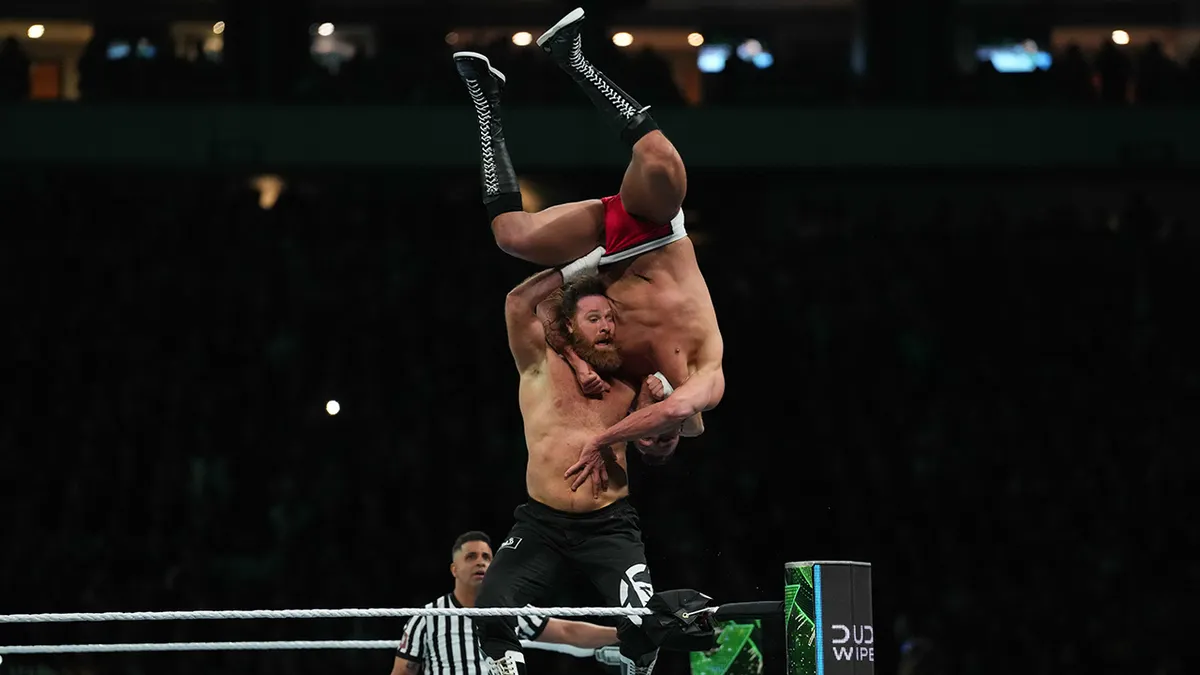
Wrestling isn’t about moves, but rather the spaces between.
A move is worthless if there is no emotional weight behind the execution. This becomes more clear, more glaring, by the day: there is a baseline competency in pro wrestling in 2025 that is utterly bland. There are no true stinkers. Something really bad is so rare that it becomes infamous instantly.
The moves in these matches are often executed well. Here’s an example, which while harsh is not untrue. Pete Dunne was a great wrestler when he worked in front of crowds who were inclined to appreciate his marvellous technical ability. Now, in front of the WWE audience that doesn’t necessarily care about that sort of thing, little that he does actually registers or matters.
Finn Bálor was one of the most influential wrestlers ever, and a super-worker in his prime, but now?
Everything he does looks good, but feels empty. He’s a fun, mischievous heel, and the Judgment Day shenanigans get over in the closing stretch of his TV matches, but his singles matches don’t linger long in the memory. He never wrestles in a true cauldron of an atmosphere. Somewhere along the way, he lost the ability to make the fans live and die with him. Did he stop thinking deeply about his craft when was compensated heavily for it?
The best moves boast an in-character logic, paying off a careful build.
The best moves are all in the “when” they are executed…
This article is a collaboration between Michael Sidgwick, Jamie Kennedy and Michael Hamflett.
100. Bret Hart | Punch
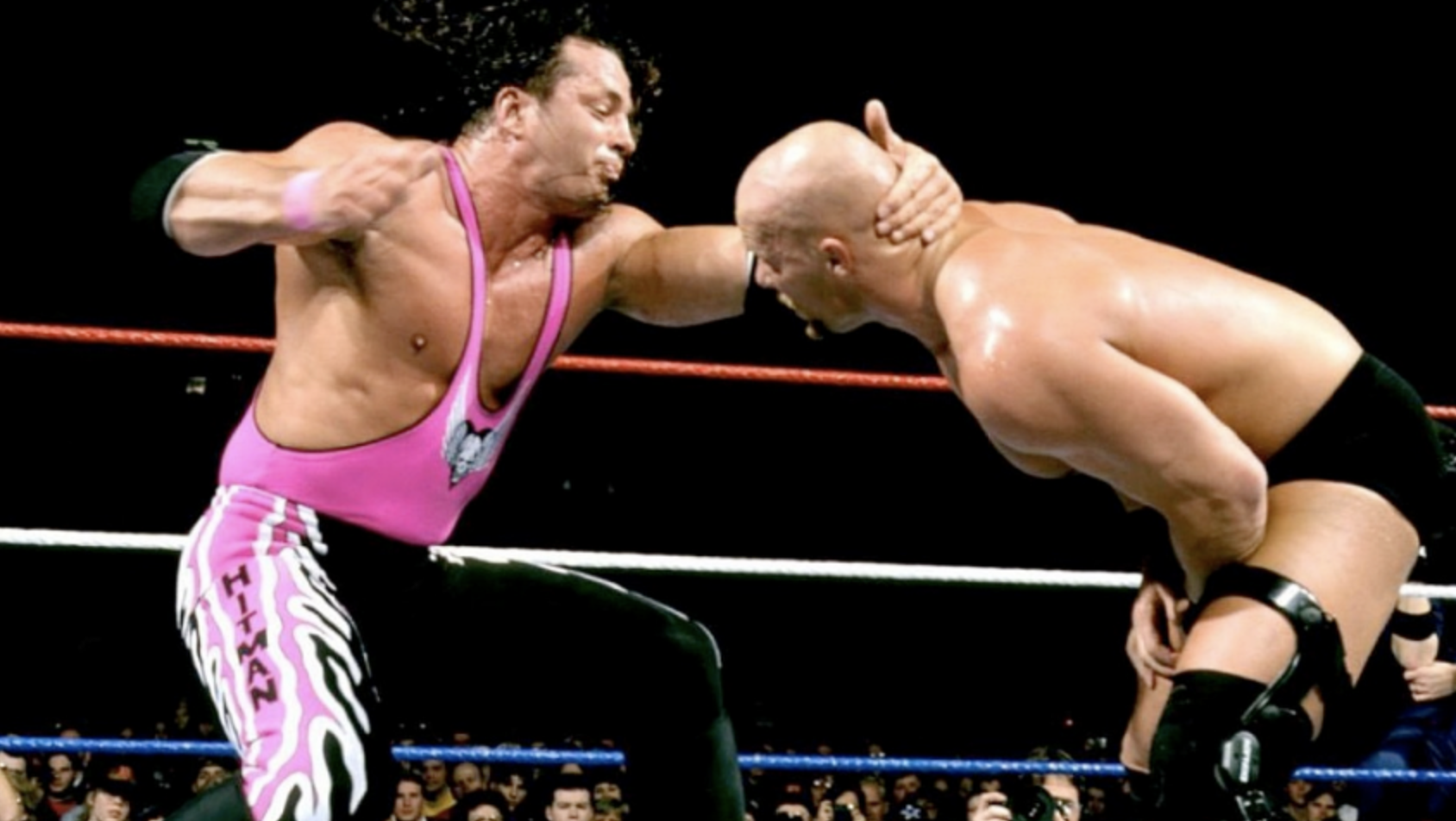
Just about every match has one and just about every wrestler has to learn to throw and sell one, but the worked punch remains a timeless source of contention and consternation amongst the most hardcore of wrestling fans.
Terry Funk and Jerry Lawler are often held up as the best practitioners, and this entry certainly won’t try and argue otherwise, but in the same way he strived to be the best at absolutely everything between the ropes, Bret Hart did his very best to make you think every single blow was excellently executed.
Like all of his offence, his punch was and still is grounded in subtlety and believability. It’s all about the mechanics, because of course it is; the snap of his arm, the way his fist connects at just the right angle, the sharp recoil that gives the illusion of force without compromising safety, and the impact being felt regardless of the selling ability of his opponent.
Bret sells the punch not just with his arm but with his whole body, no matter how his victim moves in the aftermath. His shoulders and torso rotate slightly, lending the motion a natural flow that simultaneously mimics a legitimate boxing strike while feeling intrinsically pro-wrestling. The timing, naturally, is impeccable too - delivered with speed and fluidity, his strikes land in seamless rhythm with the match’s pacing, ensuring they feel organic rather than choreographed.
99. Ricky Steamboat | Arm Drag
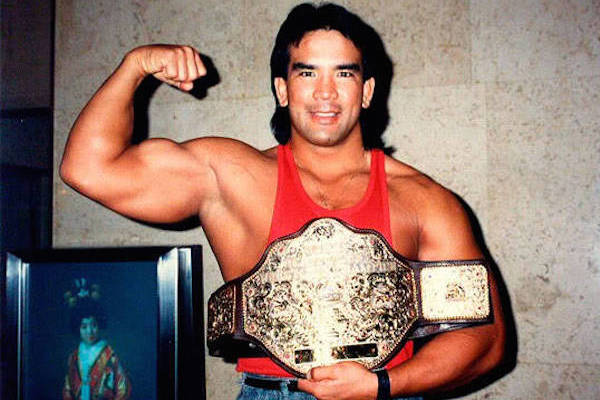
The arm drag is a move that makes so much so sense that it almost disgraces modern wrestling for abandoning it.
The arm drag allowed Ricky to reach deep, use his rippling torso to put some oomph behind it, and send his opponent flying across the breadth of the ring. Unlike so many other throws, Ricky didn’t need to fall on his back to execute it. He saved himself the bump with a light-switch twist onto his torso, and unlike a more risky aerial move, he could hit it from a distance with minimal potential for risk. He didn’t need to get too close to the nefarious, eye-gouging heels he faced throughout his career as a babyface.
Executed with a wicked snap, and clever enough within the fiction to use the momentum of his opponents against them, Steamboat made his opponents bump and used torque to damage their arm in one gorgeous, balletic movement.
Steamboat was so incredible that he can make a fan lenient towards the convoluted action of the day turn into a right grump.
Why can’t it be this simple anymore?
98. Darby Allin | Suicide Dive
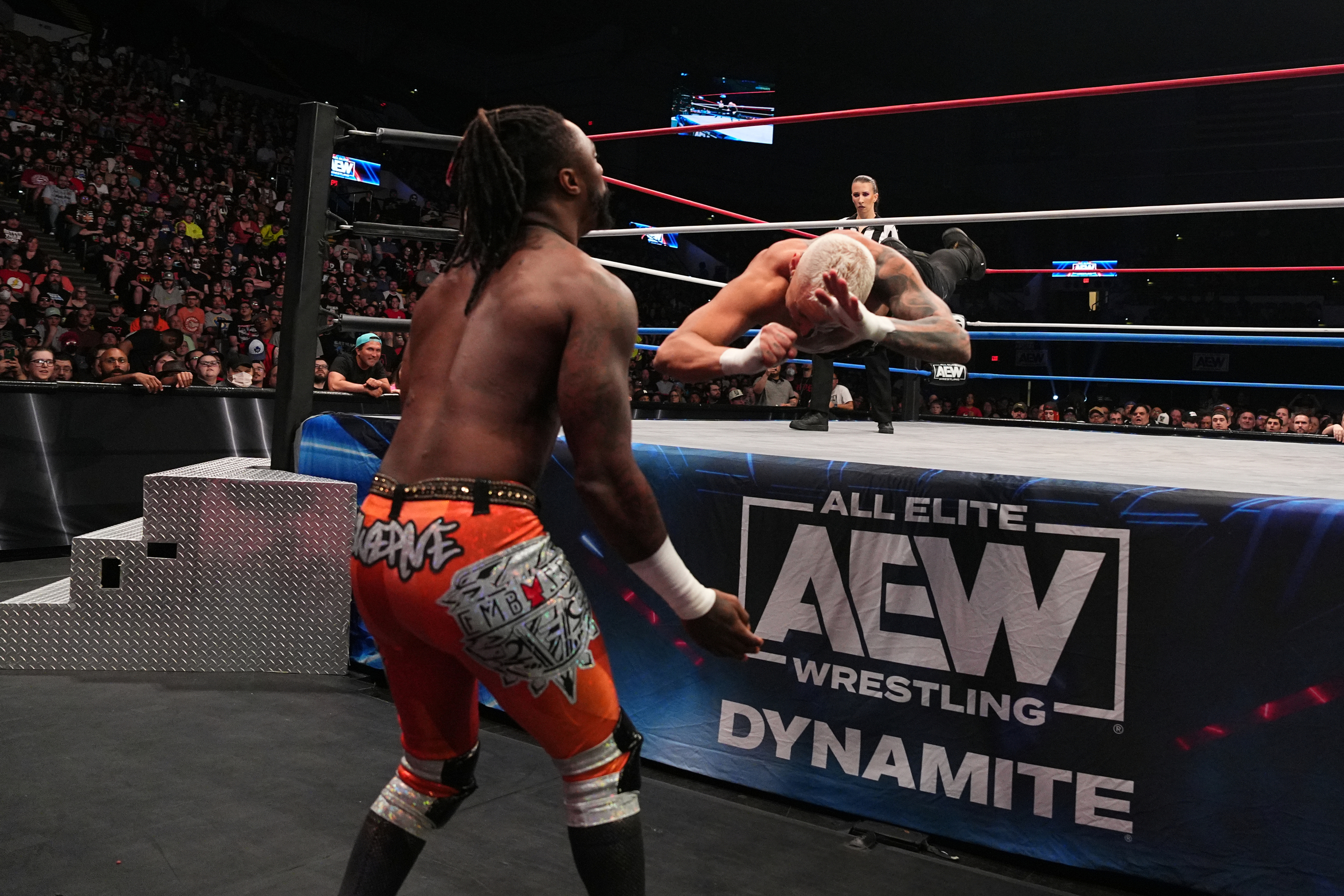
CM Punk - who, if he’d followed his own advice, would have escaped serious injury at All Out 2022 - said when building his AEW in-ring return a year prior that everybody bar Darby Allin should retire the suicide dive from their move-set.
Nobody can ever agree on anything Punk has ever said - except that, surely.
Darby launches himself between the bottom and middle rope like a bullet from a gun. The propulsion is mind-blowing. Fans of modern wrestling tolerate the fact that a wrestler will rather helpfully catch an inbound aerial attack. There’s no need for this leniency with Darby because you don’t catch Darby Allin; you stand there, without even waiting, and accept that he’s going to in effect shoot you.
The acceleration and pace is such that fans always brace themselves for a gnarly, terrifying clash of heads, but Darby is so incredible at the craft that he safely lands the missile 100% of the time.
Darby is a wrestler who has no regard for his safety; he feels half-dead stemming from childhood trauma, and gives everything every time because he knows he “shouldn’t” have made it through to what the industry used to be; in that sense, in execution and in emotion, it’s the best high-risk move ever.
97. Bryan Danielson | Busaiku Knee
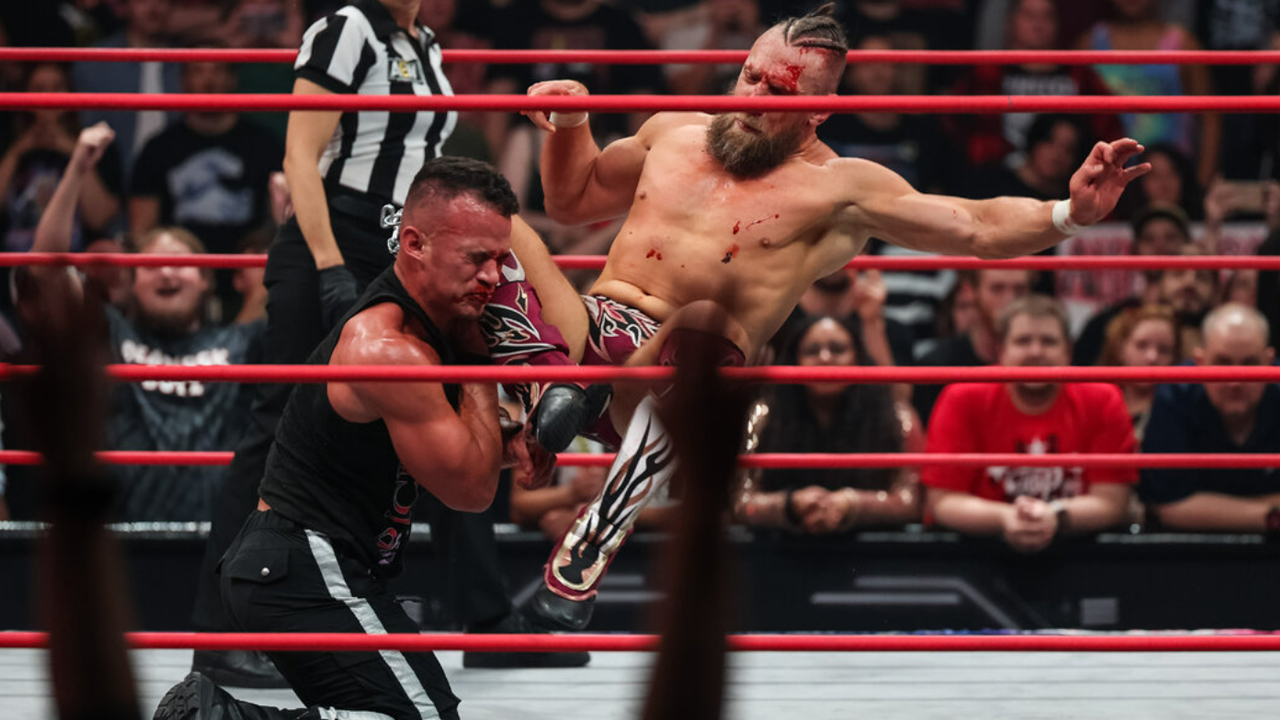
As with many modern moves, the flying ‘Busaiku’ knee was pioneered by the most inventive (and plagiarised) wrestler of the 21st century: KENTA.
Bryan Danielson’s execution was equally gruesome, and cruelly, the move is more synonymous with him as a result of his worldwide fame and ultra critical darling status.
Danielson knew precisely when to borrow the flying, jaw-dropping (and jaw-breaking) knee strike, too: at SummerSlam 2013, he debuted it as the move that finally beat John Cena clean in the middle of the ring. Instantly, his Busaiku was established (although Michael Cole whining “the knee!” for a few weeks removed the shine somewhat).
Borrowing inspiration from another wrestler, the man who half-trained him - Shawn Michaels - Danielson was savvy enough to add a layer of sports entertainment to it. The Dragon preceded the strike, à la Sweet Chin Music, with a rousing Yes! chant.
The Busaiku allowed Bryan to showcase his range, to illustrate that he was the very best at the form, whether it was professional wrestling or a parody of it - and those are Bryan’s words. That’s how he approached performing in WWE.
96. Manami Toyota | Ocean Cyclone Suplex
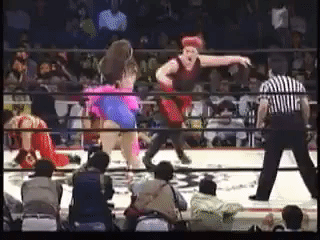
If you had never seen the Ocean Cyclone Suplex before, and a wrestler executed it to Manami Toyota’s standard on a big wrestling show next week, your mind would be blown. You’d think you’d just watched a move years ahead of its time.
Manami Toyota created it decades ago.
A double hammerlock bridging German suplex, the name, quite possibly the coolest wrestling name ever, is the perfect descriptor.
The ‘Ocean Cyclone’ articulates the dizzying effect the recipient must have felt when driven to the mat from a scary, gut-churning, unnatural angle. The slow descent compounded the feeling of dread. Beautiful, suspenseful, capped off by a gorgeous bridging pin, Toyota has her detractors as a wrestler who relied too heavily on her supernatural agility - but you’d have to be a miserable bastard not to be enchanted by what endures as a hypnotic GIF that demands to be looped over and over again.
Why don’t more wrestlers use it now? The great Toyota bequeathed it to Ikuto Hadaki and Tsukasa Fujimoto - Blair Davenport drew her ire when using it without “permission” a few years ago - but wrestlers are shameless.
Perhaps it’s because, contrary to the narrative that wrestling is in a constant state of athletic evolution, they know damn well they can’t make it look half as good.
95. Katsuyori Shibata | Corner Dropkick
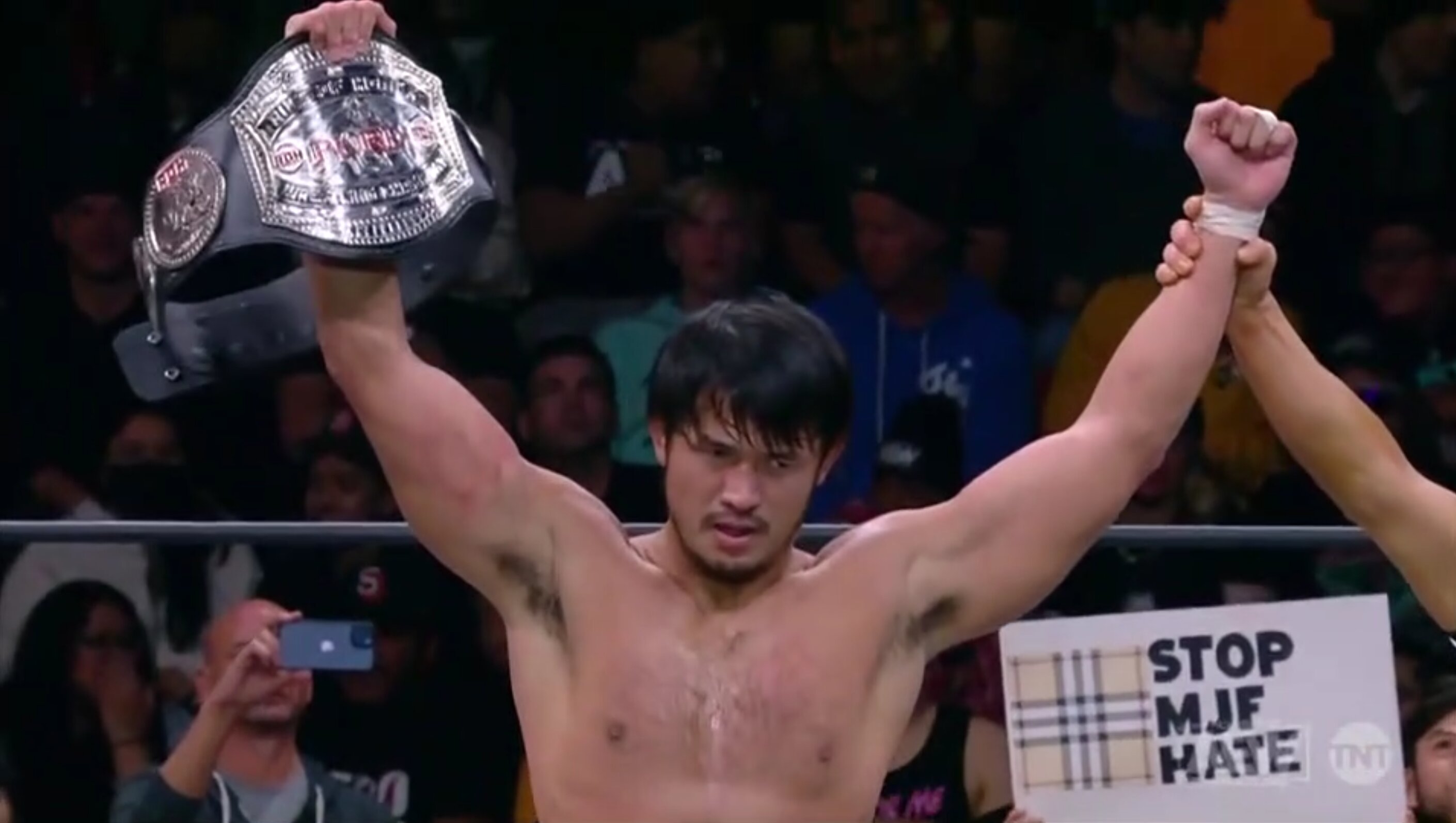
The best wrestling moves look spectacular and look like they’d absolutely kill to take. Katsuyori Shibata’s corner dropkick, on that strict but fair basis, was the perfect wrestling move.
Shibata - and this is when he was equipped with that generational ass-kicker aura - would pummel his opponents with forearms, and then leave them draped against the bottom turnbuckle.
He’d then sprint across the ring, leap up, suspend himself in the air, and blast them in the face. He made no foley effect with his thigh because he had nothing to hide. He kicked these poor bastards at full pelt.
He couldn’t have, obviously, They’d have all suffered concussions and blackened eyes. Shibata simply located the safest possible place, the flesh of the cheek, and stamped the damn thing like it had just caught fire.
How did his opponents still have teeth?
In a superb flourish of body language, after cracking these blokes, Shibata would dust off his thigh, conveying the idea that such violence was casual to him.
94. Kenta Kobashi | Burning Hammer
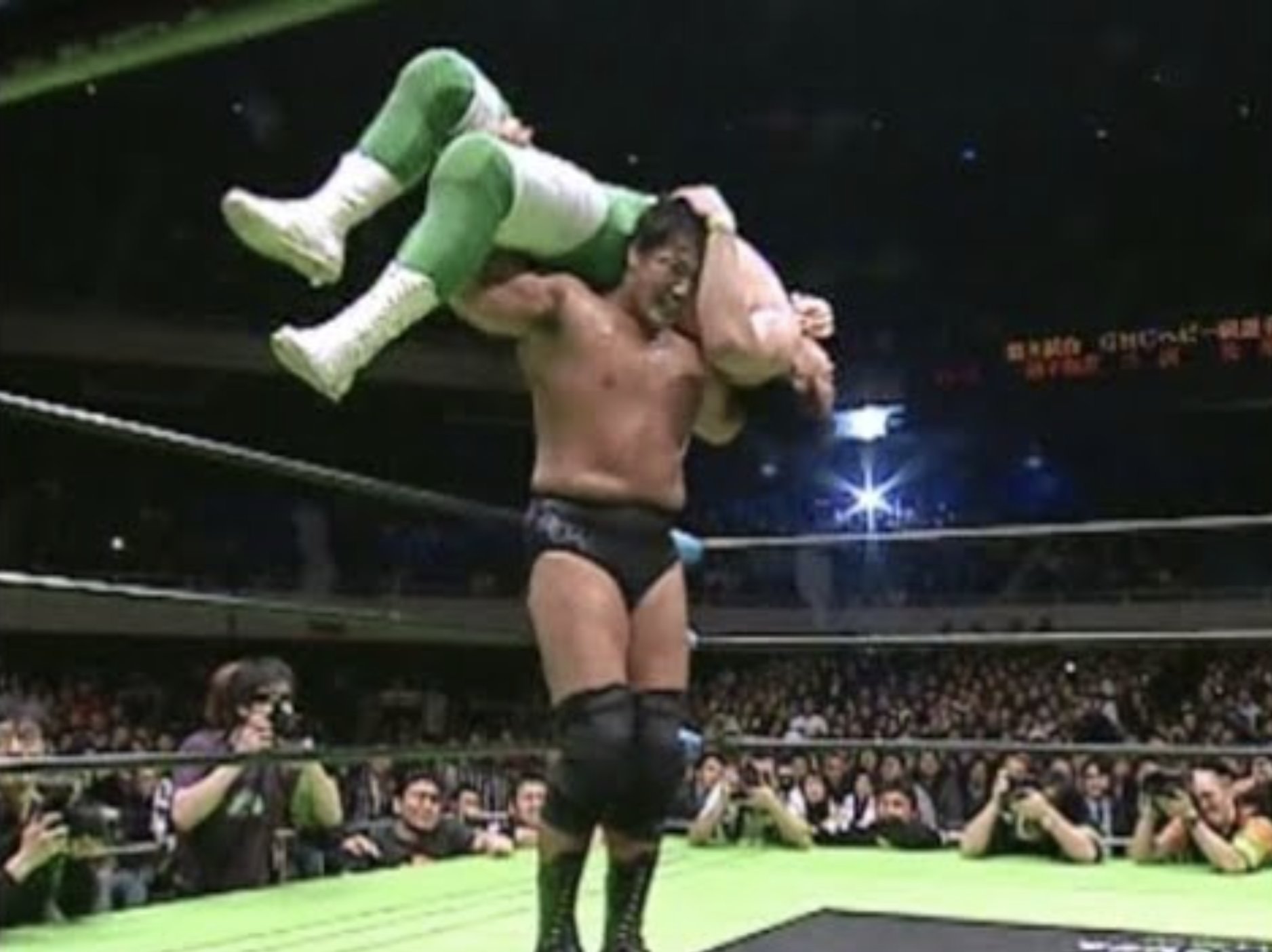
Kenta Kobashi’s inverted Death Valley Driver is amongst the most mythical moves in wrestling history. He used it - with 100% success rate - on just seven occasions. The idea was to create a devastating “super-finisher”, with in storyline a high probability of injury, to put away only the most spirited and challenging of opponents.
If only his successors practised the same level of discipline. The underlying concept was incredible, and could be used to excellent effect today. Surely, it fulfils the obsession of protecting wrestlers in defeat without relying on some empty approximation of “heat” with a carny, cowardly DQ finish.
At first, Kobashi dropped Mitsuharu Misawa directly on his head. This wild execution informed the lore and aura of the move, but, with each subsequent deployment, Kobashi hit it more safely. This was clever; the set-up in and of itself led the fans to brace themselves and dread the impact in the theatre of the mind.
Not some reckless, senseless transgression, the Burning Hammer was actually classic pro wrestling; if you tell the fans the truth first, they become more willing to accept a lie.
93. Buzz Sawyer | Power Slam
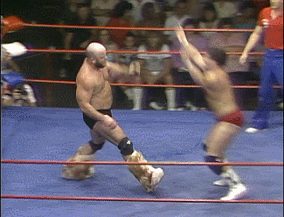
Buzz Sawyer - as a bit of classic wrestling wordplay, that one only really works when it’s written down… - was an amazing firecracker of a worker. Very much a man of his time - he, purportedly, was a carny in every sense of the word - he lives on, mainly in GIF form, through his best-in-class power slam.
It was a tad contrived, in that his rival needed to be a dumbass and attempt a cross body block in order to take it. You’d think they’d learn not to try that move on Buzz after a while. Still, at least an attempt was made to do something only for that something to be countered, unlike the criminal Flying Nothing.
The ends justified the means, ultimately: in an awesome display of strength, Buzz would catch his opponent and rotate them and himself before spiking them to the mat. It was a spectacular near head drop elevated by his sensational footwork and positioning. He took something basic and turned it into the best possible version of itself - a principle that a lot of wrestlers could do with importing today in an era in which you’ve seen a diluted version of absolutely everything.
The impact was so close to the dome that every other slam almost looks polite in comparison.
92. Rey Fénix | Rope Walk Kick
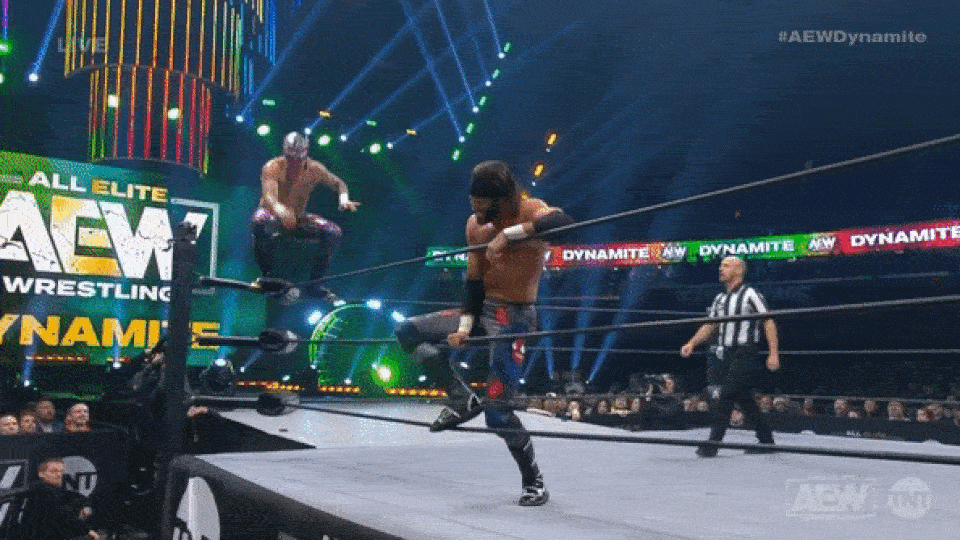
Fénix’s rope “walk” is a beautifully impossible move.
It was a wondrous sight to watch the Undertaker walk menacingly across the top rope; seeing Fénix run across the damn thing was legitimately mind-blowing. An extraordinary feat of speed, balance and agility, the rope-run was a literal high wire act, but somehow even more impressive. He didn’t put one foot precariously in front of the other. He ran - sprinted! - across the top rope. The term “video game wrestling” is often used in the pejorative sense, but the description is apt here. Fénix is capable of executing a manoeuvre that appears to defy all known laws of physics.
The resulting kick was hardly the most deadly strike in wrestling history, or anything, but it wasn’t a finish, at least. And, moreover, if you want to be pedantic about it, the move makes a bit of sense because how can you possibly defend yourself against it?
If you’re a wrestler, caught near the ropes, you can’t blink much less counter the move.
91. Sami Zayn | Suicide Dive Tornado DDT
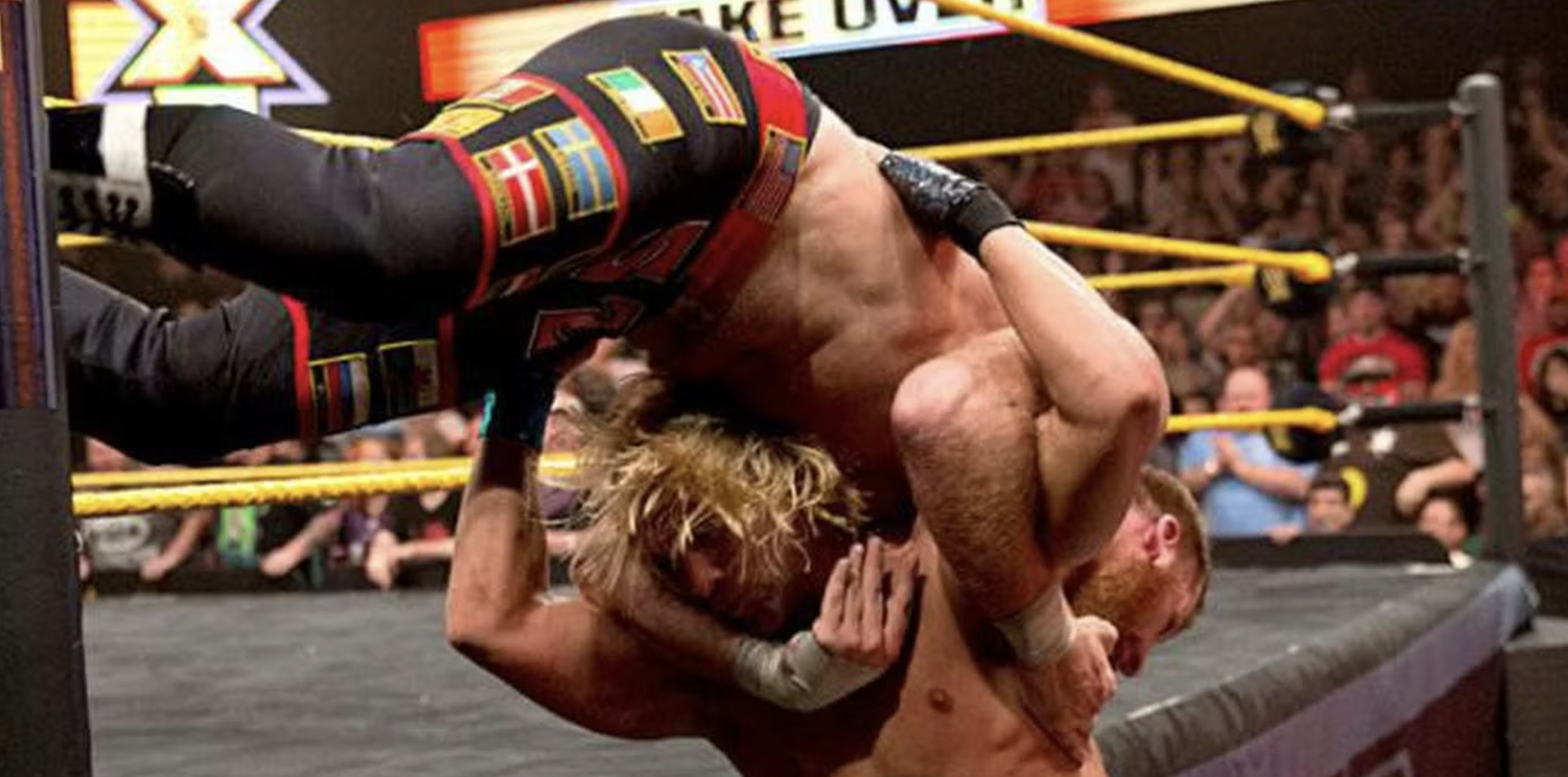
Sami Zayn is universally adored - even those who lean against WWE admire how he manages to be so authentic in that promotion - and yet, somehow underrated.
A believable, principled babyface with an all-timer of a fire-up spot, Zayn epitomised every value of the role without it ever feeling like a checklist. He was born to play a wrestling hero. He has the substance, the emotional connection, the ability to manipulate huge arenas into thinking he’s half-dead - which has enabled him to get even more over well into his physical decline - and he once had the moves.
As El Generico (if you believe that old rumour), Zayn invented two moves that appear on this list, both of which were message board sensations. The first is the suicide dive tornado DDT.
Zayn was and is very intelligent. The move was stunningly creative, just a mind-blowing thing to watch and to have been conceived, but it wasn’t just an outrageous combo: it was launched from such an unusual position that, in the fiction, it was tremendously difficult to counter.
90. Konosuke Takeshita | German Suplex
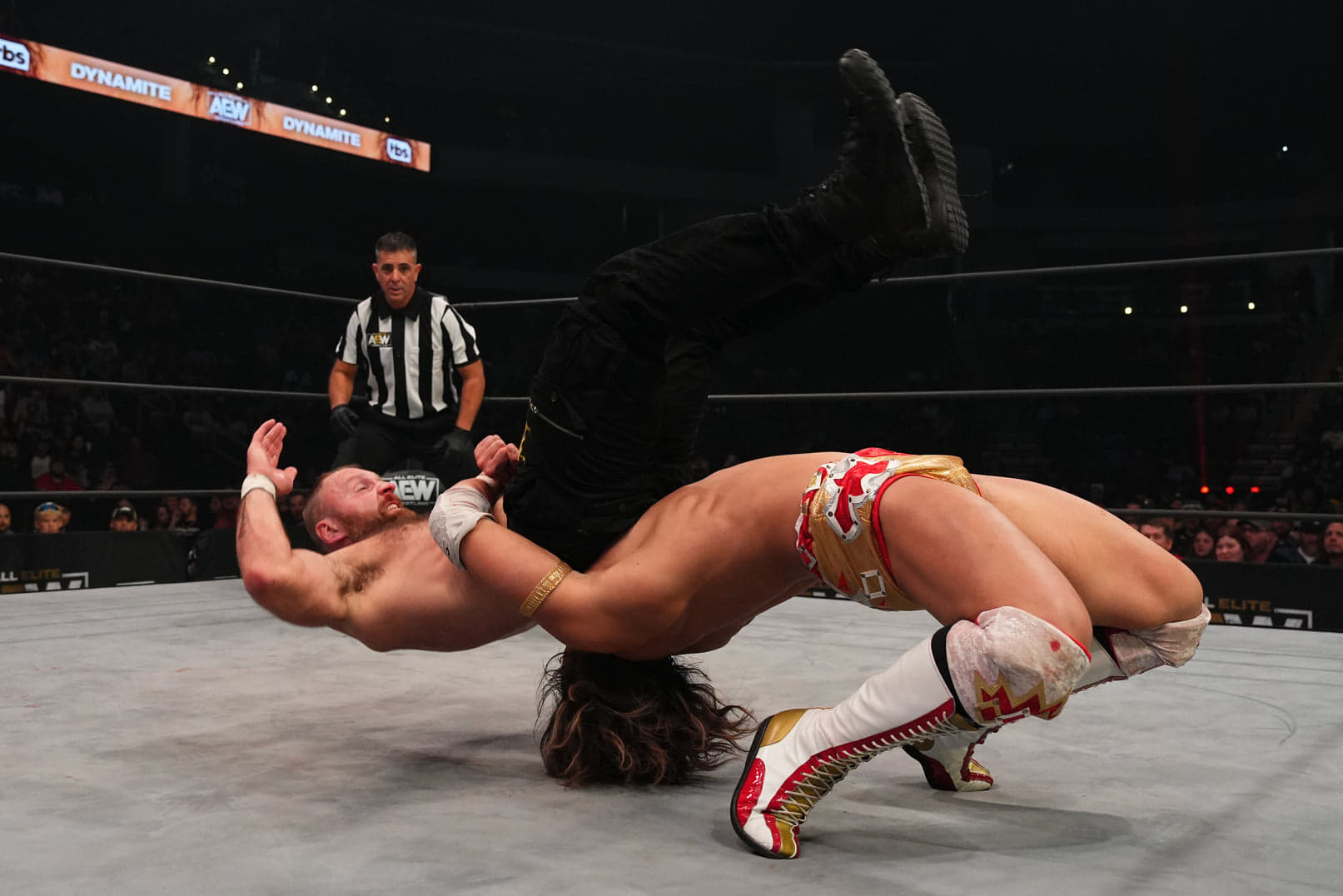
Famously, Konosuke Takeshita wrote his thesis on the German suplex. His practical application of it - the best of all-time - was as strong as the theory.
Takeshita is sensational at shifting through the gears of the arc. He doesn’t launch his opponent too quickly nor too slowly. He registers the ascent just so. He allows the opponent to flail helplessly, but the pacing is such that the recipient can’t overdo the facial expression. Take, from 0-60 in an instant, snaps his opponents on the canvas at the precise moment they realise that they are helpless. It’s this tiny snapshot of theatre that enhances the drama without the moment scanning as anything too silly.
The brunt of the impact is taken across the blades of the shoulders and upper back, but the snap is so exquisite and lightning-quick that it looks like an ugly and ill-advised neck-first drop. The recipient crumples onto the neck almost as quickly as the impact is absorbed.
Invariably followed by a pin attempt, Take’s tippy-toes bridge is beautiful. That he’s such a goddamn unit informs that perfect rating; he looks like he’s monstering people in there.
89. GUNTHER | Chop
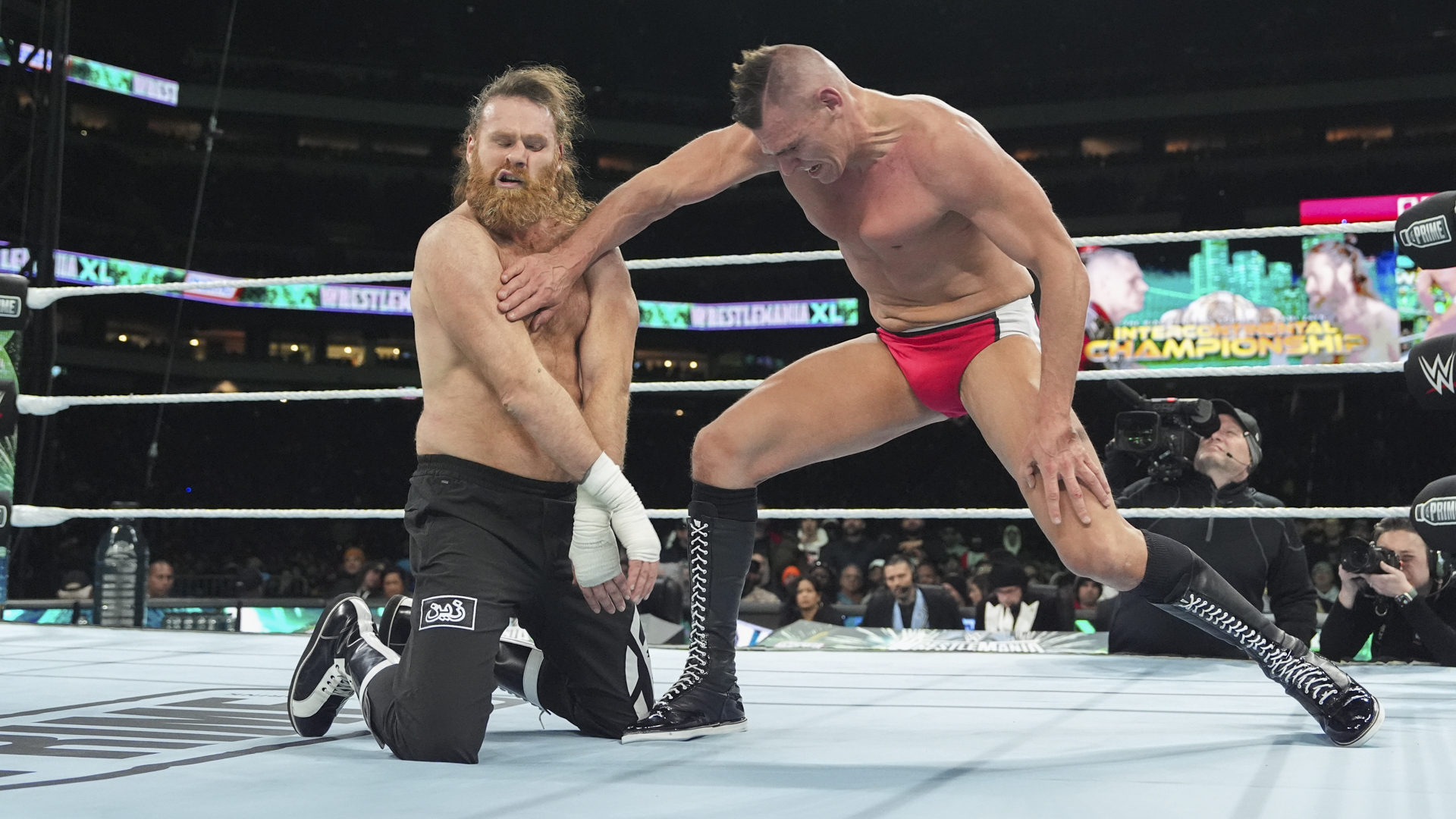
The chop is over-used to the point of virtual meaninglessness because everybody does it.
Well, it’s not meaningless exactly - done well, it always generates a pop - but the move adds to the pervasive, homogenised style that has heavily informed the apathy that surrounds wrestling beyond WWE in 2025.
And, what’s worse, very few wrestlers use it to the same, awesome effect as GUNTHER. It’s toned-down from the WALTER days, since WALTER used to cause such internal bleeding that he would literally blacken the chest of his opponents, but he too has fine-tuned the art of the “when”. He’ll spam chops early, but he’ll slowly ratchet up the power. The flat-back from his harder strikes is an awesome sight that spikes the drama of his best matches.
The sound he makes is revolting, a gunshot blast, and his hardest blows are so frightening that the crowd reaction can barely be described as a pop. It’s more a collective, loud wince - the sound of an entire building feeling the pain vicariously.
It’s perfect wrestling; simultaneously one of the last moves you’d wish to take, and a move that doesn’t cause lasting, real damage.
88. Yokozuna | Banzai Drop
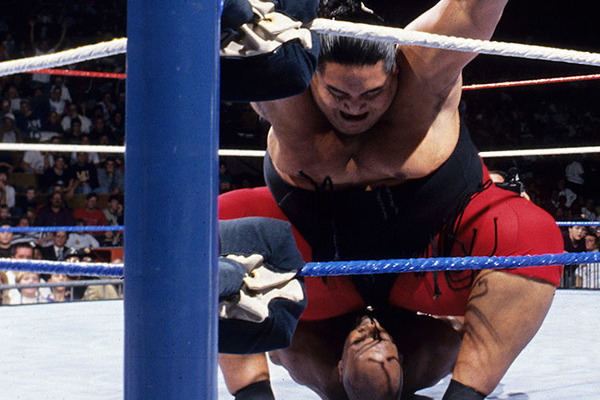
From a perspective of pure logic, the Banzai drop is the most effective finisher of all-time. Which is ludicrous, since it was in effect a flying teabag launched from the middle turnbuckle, but bear with this:
The impact itself was incredible (as, indeed, was the sight of the sumo leaving the mat in the first instance). Yokozuna was one of the biggest monsters in a sport full of them; if he crushed his opponents with every pound of his body, there was no getting up. He was rarely reckless with it, and you could see him do everything in his power to protect the sternum of his dance partner, but those who grew up with it weren’t watching that carefully.
Also: viewed through the lens of fiction, after a certain point of Yoko’s climb, it was better to stay still and just take it rather than attempt to escape. Imagine sitting up as Yoko made the descent.
If he caught his opponents in a seated position as he threw down his immense weight, they’d have broken their neck.
Spectacular (in context) and almost totally counter-proof, the Banzai drop was protected and made perfect sense within wrestling’s daft logic.
87. Swerve Strickland | House Call
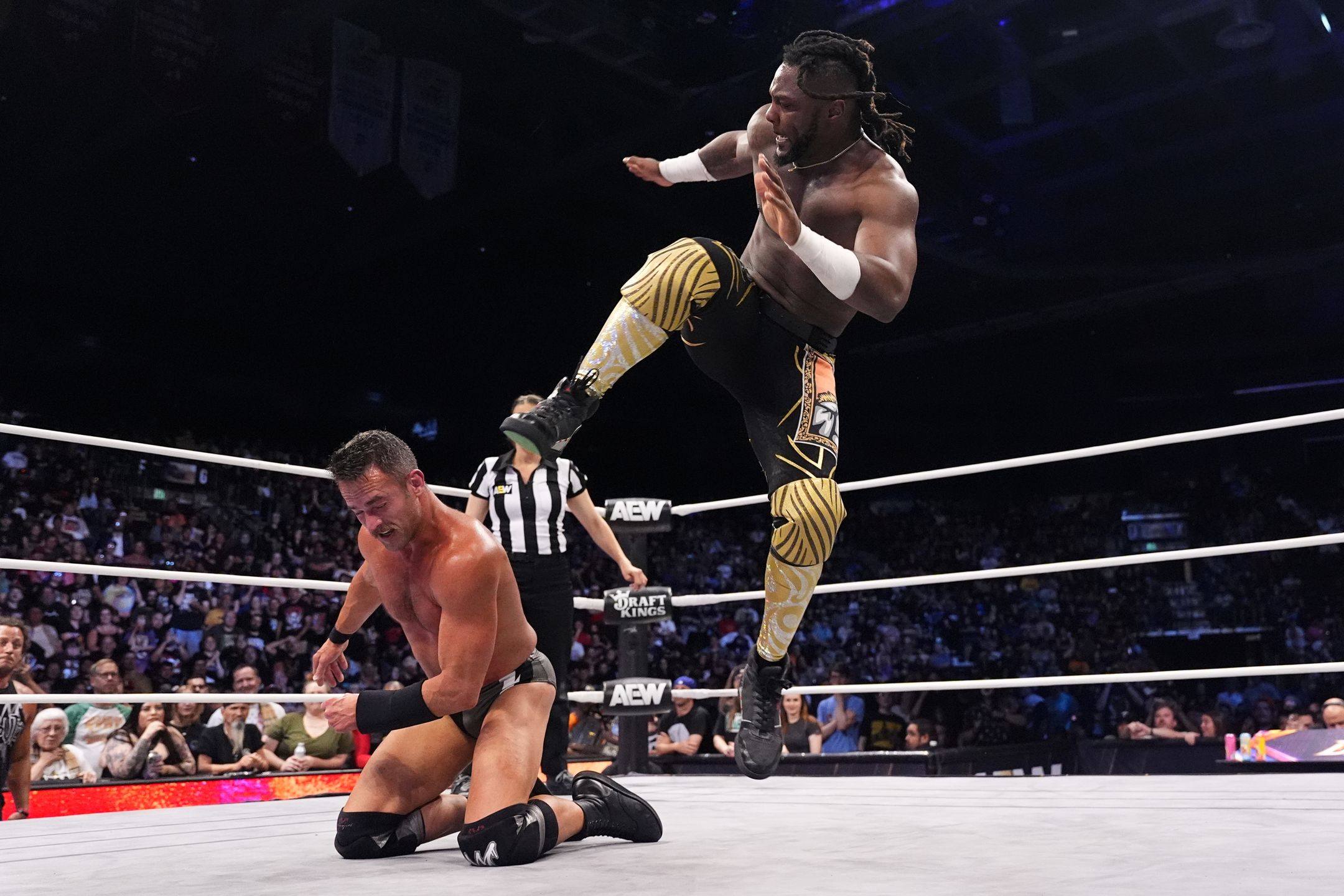
For every move, there exists a counter.
This is a necessary mechanism for driving the action forward; done well, it creates the impression of two strategic athletes who’ve done the necessary studying. It also alters and propels the momentum of a match. The flying nothing is awful, but, say, the Busaiku knee into a powerbomb a nanosecond before the strike hits the cheek?
Perfection.
As is always the case, though, wrestling takes it too far and eats itself. This counter dance was electrifying when it fuelled the New Japan resurgence - and because it got popular, wrestlers everywhere just did it all the time. It too often felt like wrestlers the globe over were doing moves purely so they’d get reversed.
That’s what’s so refreshing about the House Call: Swerve Strickland’s vicious and cruel heel kick to the side of the head. The physical execution is amazing, proper bruising with a pleasing and emphatic thud behind it, but the set-up makes it. It can’t be reversed.
Swerve does it because it can’t be reversed. It shouldn’t stand out as much as it does.
86. Athena | O-Face
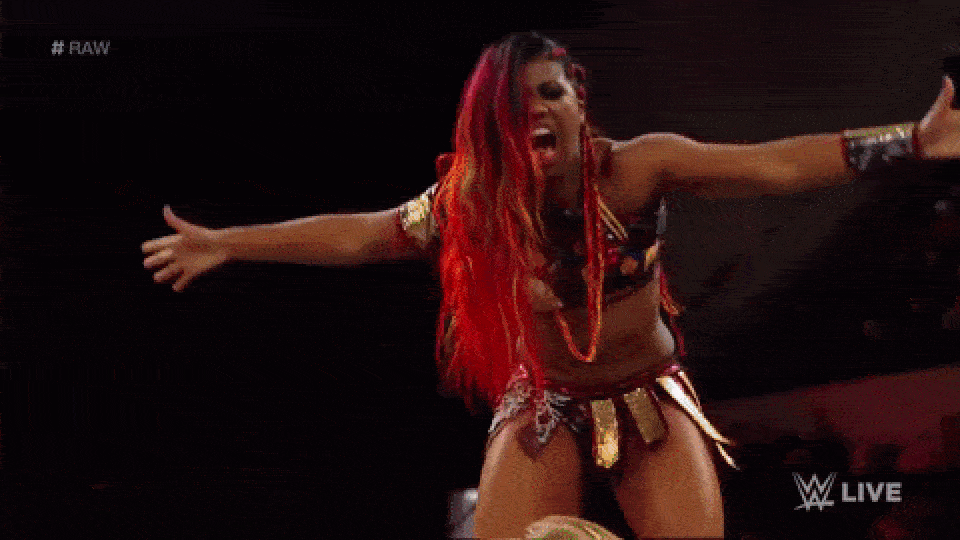
The O-Face is as strangely beautiful and as devastating as any natural phenomenon.
The fusion between set-up and execution is amongst the most ambitious and intelligent ideas ever. They don’t belong together. A stunner from the top rope: how did Athena even arrive at that?
A move associated with a brawler in the latter phase of his career, using the set-up of a gung-ho high-flier: it’s an insane, intoxicating blend, and Athena’s deliriously inventive mind was matched by her gorgeous physical execution.
Athena soars through the air. Her legs flail, but only to create the impression that she’s dominating the screen, a larger-than-life presence that her rival cannot hope to survive. She is however in total control, as she confirms with her magnificent pinpoint precision.
Like every move, it requires cooperation - and the O-Face results in some awesome bumps. Likely because it’s too ambitious, mercifully, those who take it crumple to the mat in agony, and don’t leap stupidly into the air for the sake of a GIF.
The O-Face isn’t as iconic as the Stone Cold Stunner, obviously - but it’s far more parody-proof.
85. Randy Savage | Neck Snap
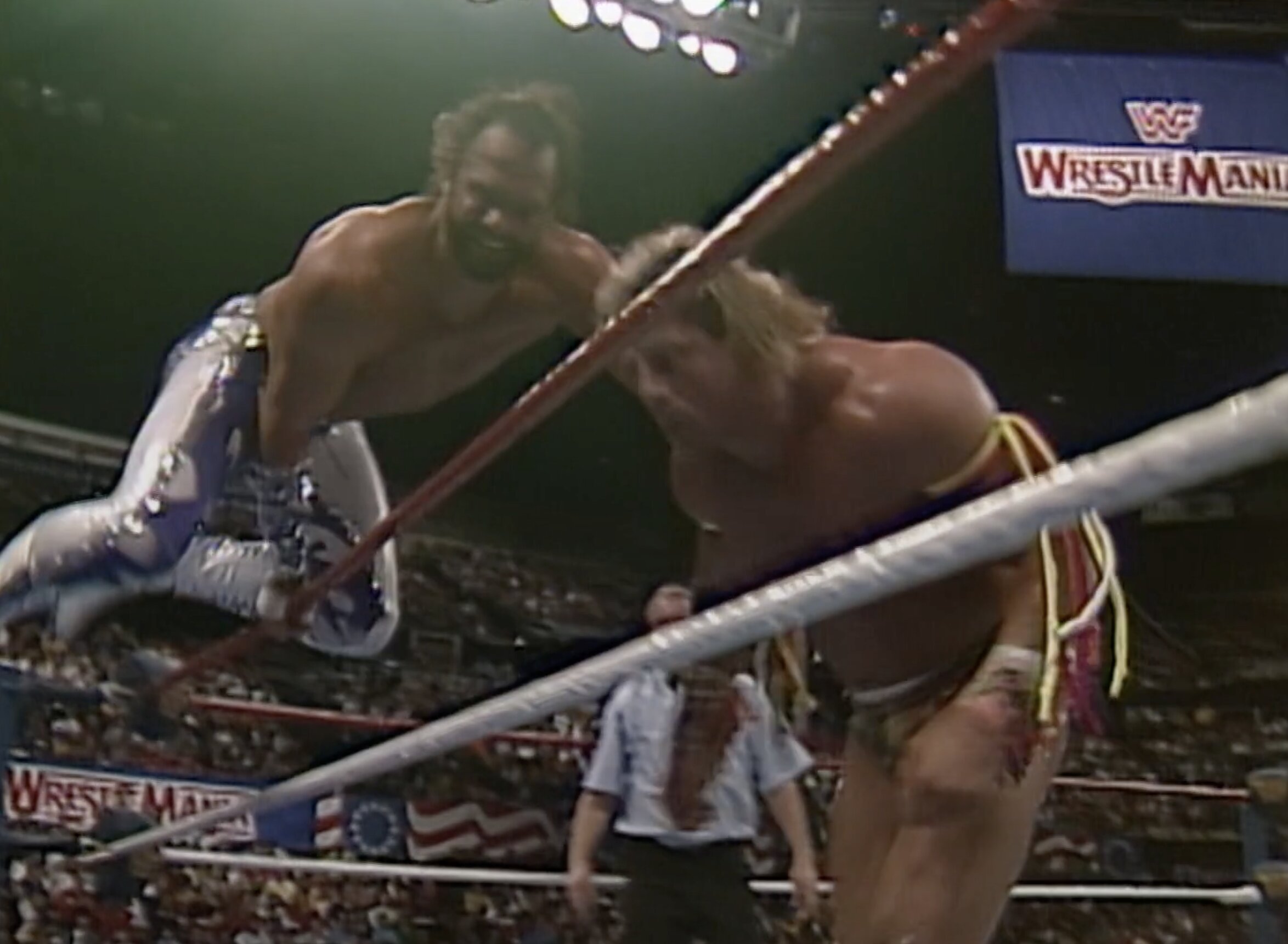
As ostentatious as it was vicious, Randy Savage didn’t have to leap from the ring all the way to the floor with his opponent’s head in his grasp, but he didn’t have to dress or cut promos the way he did either. Randy Savage did things only Randy Savage would, partially out of paranoia, but also out of an immense desire to be the one and only ‘Macho Man’ wrestling could manage.
Savage liked damaging throats with his offence, perhaps in an effort to take away one of the weapons some of his peers shared. He did everything with speed and intensity too, so combining all of his skills for one fittingly spectacular spot made something ostensibly nonsensical make all the sense in the world.
The move left his opponents writhing in the ring, but him on the floor with his people too - a perfect ending regardless of if he was screaming at them as a heel or bonding like few others while working as a face.
84. Mr Perfect | Rolling Neck Snap
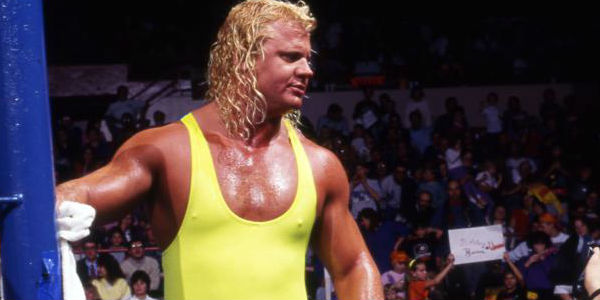
Wrestling’s a work, but there’s a not-insignificant amount of pressure on a competitor that goes by the moniker of “Perfect”. Curt Hennig never made it feel that way. Quite the opposite in fact - he sold the idea that he was simply trying things out and doing them perfectly, rather than simply sticking to what he knew he could perform with perfection.
The rolling neck snap was as good an example of that as anything in his incredibly tight arsenal.
A fittingly flawless blend of athleticism, timing, and theatricality, the move became his most effective-looking signature, particularly in how it logically softened up the neck and back for a Perfect Plex deeper into a match.
The secret to its effectiveness was in Hennig’s own strengths - his leap was explosive yet controlled, creating a gorgeous visual arc flying the helpless opponent. He hooked the head with precision, maintained a tight grip, and ensured the snap looked impactful, even though he was taking the back bump that created the satisfying echo at the end.
83. Stone Cold Steve Austin | Lou Thesz Press
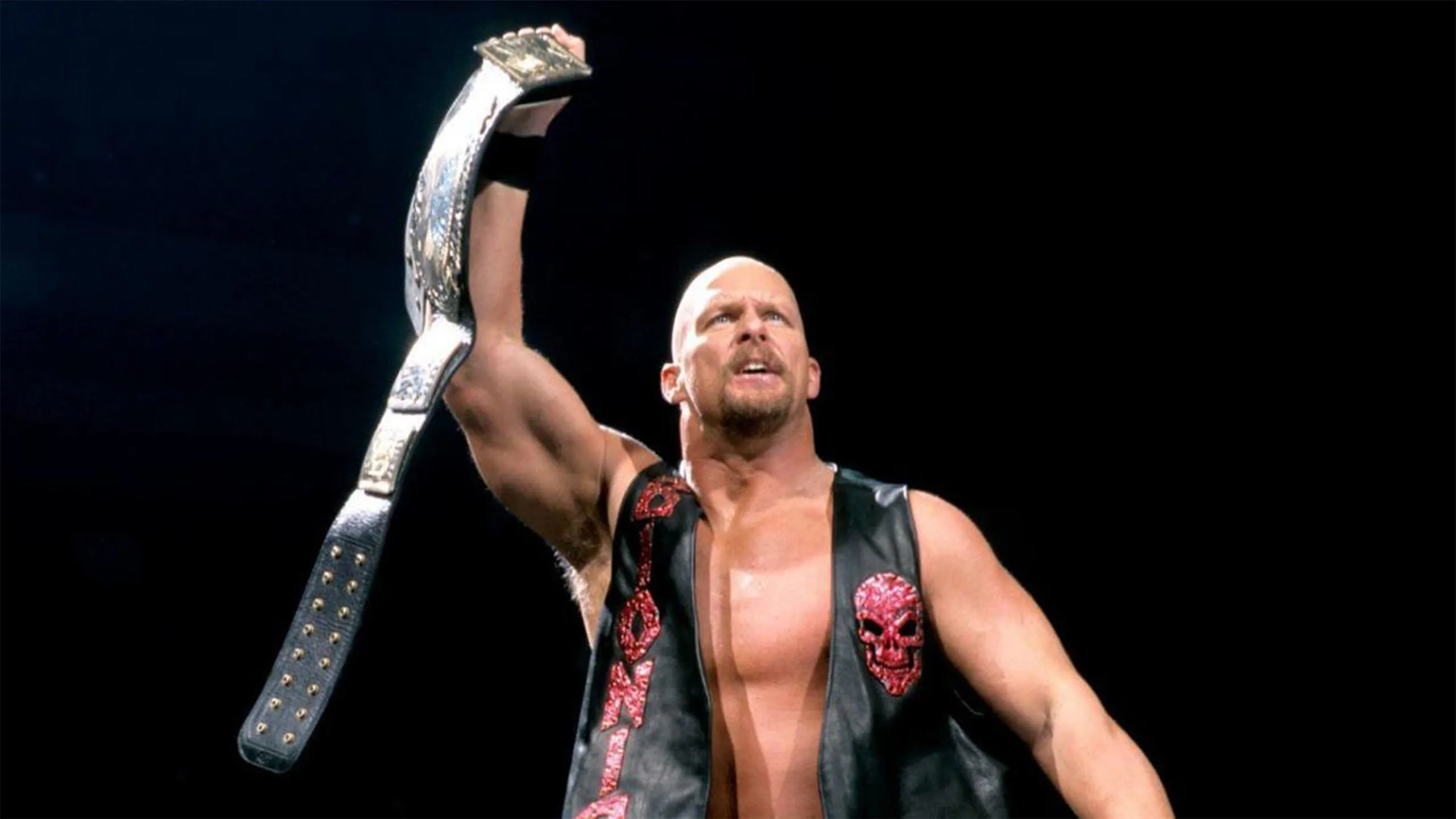
Stone Cold Steve Austin’s Lou Thesz press is a move you can hear as much as you can see. Jim Ross soundtracked many an iconic moment or match, but few wrestlers were as made by the Oklahoman’s iconic drawl quite like ‘The Texas Rattlesnake’. It’s hard to even name the move without hearing Ross note the “fists and fire” but that’s because - like commentator and wrestler - the move and the man were a perfect fit.
A masterstroke of aggression and character, Austin charging toward his opponent with increased intensity is his persona in a single motion. The leap that traps the victim speaks to the danger of being stuck in his crosshairs, and the blows raining down within split seconds of both bodies hitting the canvas speaks to the aggression expected from going toe-to-toe with the ‘Toughest S.O.B’.
Insane crowd connection is another key factor. The explosiveness of the move coupled with Austin’s primal energy draws a pop with immediacy not dissimilar to the one he’d receive for his entrance. It feels spontaneous and as though Austin’s emotions have boiled over, even though it’s a fixture of every fight.
82. Shelton Benjamin | Thrust Kick
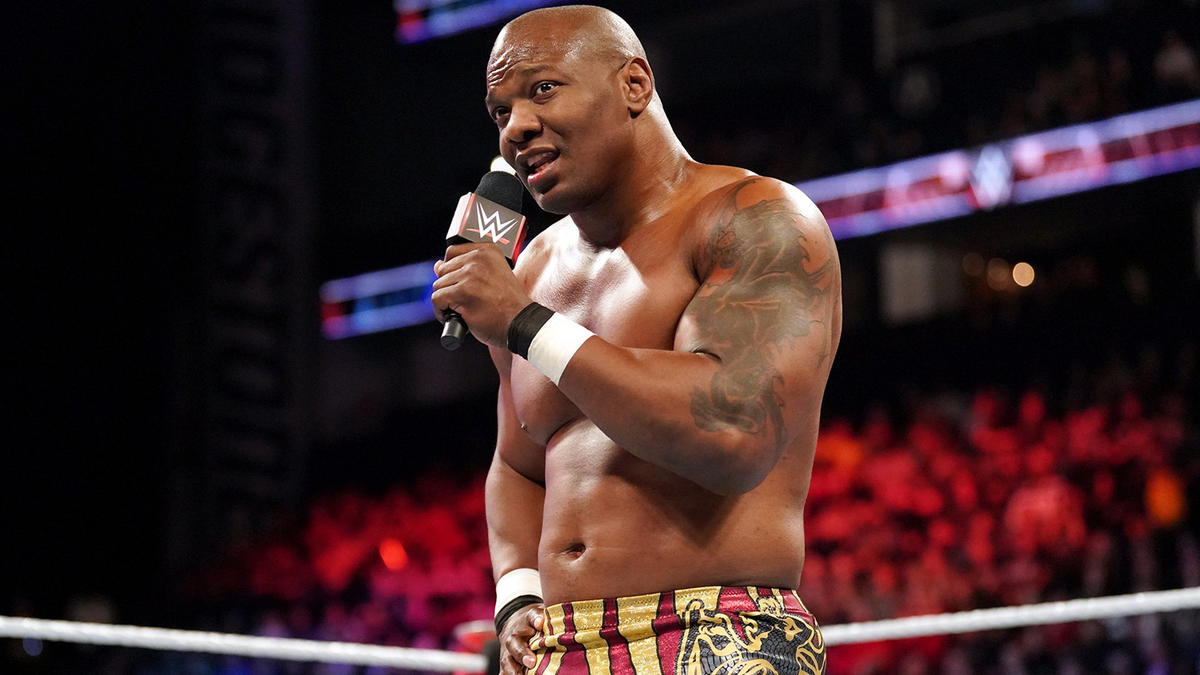
A move synonymous with Shelton Benjamin’s past became part of his present in 2024 when, upon arriving in All Elite Wrestling as The Hurt Syndicate’s first clear and present danger, he became the aggressor rather than the underdog.
Highlighting just how much WWE will always be the land of the giants even when not necessarily pushing all the monsters of old, perennial mid-sized midcarder Benjamin towered over many within AEW, and the domineering presence became a key part of his act. Never was this better illustrated than when he started drilling folk with his thrust kick.
A mirroring of arguably his famous moment could have been awkward for what it was calling back to. Shawn Michaels nailing Benjamin with a superkick from the heavens back in 2005 became the headline of former US Champion’s North American wrestling story, until he started writing a brand new one with a death blow of his own. Powered by an extra step that accelerates the motion and violence, Benjamin understands the assignment and hurts people with that thing, levelling himself up in the process to stand alongside stablemate Bobby Lashley rather than in his lofty shadow.
81. Power & Glory | Power-Plex
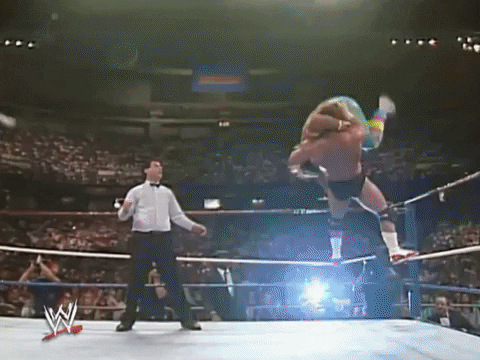
Like so many of the best moves, the Power-Plex is often imitated but never truly duplicated, even if the most loving contemporary tribute is delivered by the pair paying homage to the very genre of doubles wrestling as much as the finisher itself.
If anything, it’s FTR’s impressive ability to ape numerous tag finishers that puts over how incredible the original was that they can’t quite match Hercules and Paul Roma’s finesse on delivery.
A product of its time in all the best ways, the Power-Plex is the highspot microfeast that still slaps a 450 or shooting star press square in the face and tells it to grab a hold. Superplexes and splashes were two of the most impressive moves one was likely to see delivered from the top rope in North America in 1990, but seeing both back-to-back and beautifully in sync from two guys who traded as much on their hubris and looks as their in-ring prowess was all the more incredible.
Capturing the vibes of the kitsch street toughs from 80s action flicks and double-team devastation that meshed The Road Warriors with The Rockers, ‘Herc & Jerk’ lived up to their nicknames as much as their actual ones every time the Power-Plex did the business.
80. Shawn Michaels | Flying Forearm
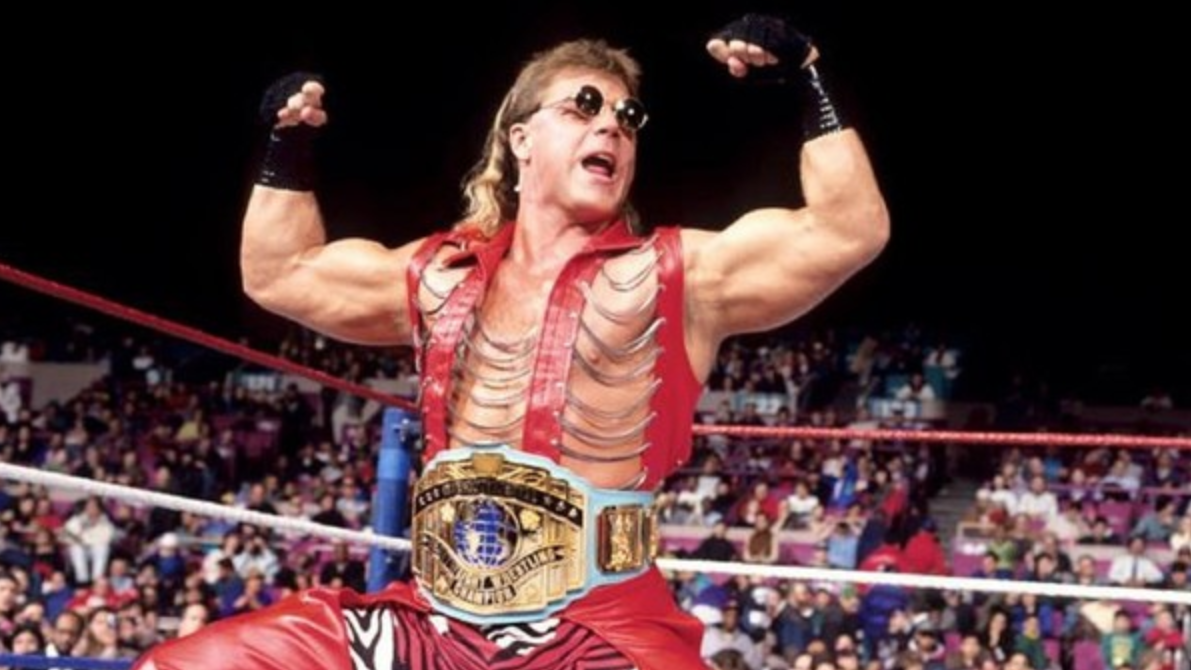
One of several moves Shawn Michaels re-inserted into his oeuvre when he turned babyface in 1995, the Flying Forearm was less about the impact of the move and more about what happened either side of it.
Michaels footwork and movement at the time was such that neither opponent nor fan saw the attack coming as he flew off the ropes. Though similar to any charging strike, ‘HBK’ was so springloaded from his heels that he’d do ten times more than his colleagues to sell the supposed bounce on the hard WWE ring ropes.
Upon nailing the forearm itself, Michaels added a kip-up that often came instantly after he’d landed squarely on his shoulders. A feat of remarkable athleticism and reserve, his ability to instantly propel himself so gracefully back to a vertical base was dragged out for drama in his latter years. The pops might have been louder, but the spot lost some of the peerless arrogance of the 90s vintage.
79. Monty Brown | Pounce
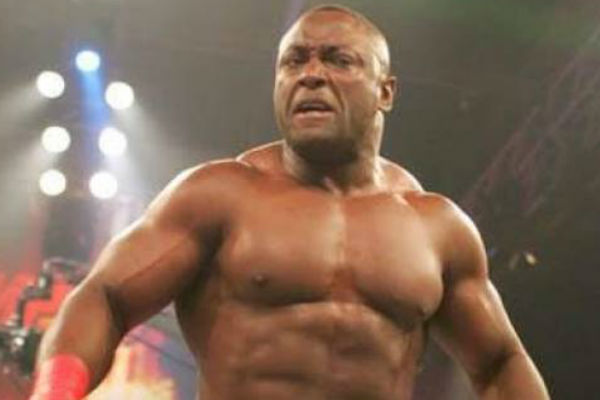
At its core, Monty Brown’s Pounce is deceptively simple. A high-impact shoulder tackle akin to a spear - the same spear that gets used (and overused) by numerous talents to set up and finish major matches. But it’s the way Brown executes it that makes it so devastatingly effective.
Combining raw power, explosive speed and peerless charisma, Brown made the move one of the most effective and visually thrilling versions of the tackle in wrestling history. His predatory pacing and his intense glare created a palpable sense of danger. Brown exploding diagonally across the ring with a level of speed and ferocity that few wrestlers can match. His full-body assault is a masterclass in controlled chaos, with every step adding to the momentum of the impending collision.
The impact is where the Pounce becomes truly iconic. Brown doesn’t simply hit his opponent; he obliterates them, all soundtracked by his own primal screams, and commentators and fans wailing the name of the move as he strikes.
78. The 1-2-3 Kid | Running Legdrop
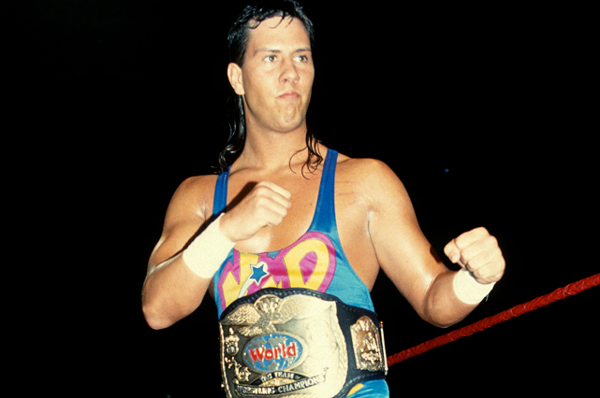
Sean Waltman was the WWE in-ring litmus test during a time where in-ring product meant more to the brand than any time during Vince McMahon’s ownership.
The mid-1990s represented the company’s commercial wasteland, but “New Generation” wasn’t just a marketing slogan designed to neg Hulk Hogan. Just about everything the 1-2-3 Kid and others like him were doing bell-to-bell raised the bar past the organisation’s “land of the giants” reputation, and Kid’s running legdrop might be the most beautifully-executed move from a laundry list of options.
A pneumatic drill of a move, Waltman’s ability to get between his opponent’s head and half the ring via a spring from the ropes over and over again was futuristic in the extreme. Playing to how smaller, quicker guys need to do things twice as hard, twice as fast or just literally twice, it’s the most in-character attack strategy and the most beautifully executed.
77. Kurt Angle | Moonsault
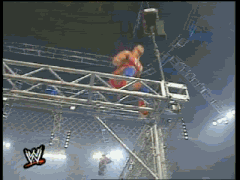
Kurt Angle’s moonsault is a breathtaking example of artistry meeting athleticism; a move that best exemplifies his almost-unparalleled ability to blend technical precision with dramatic flair.
Defying expectations, as usual, hitting the move with the grace he applies almost feels at odds with his rugged amateur wrestling approach, but the flawless execution speaks to his gold medal level. The rotation is jaw-dropping - Angle arcs his body into a picture-perfect backflip, his limbs tucked tight and his motion silky smooth. With balletic elegance, Angle makes time stand still long enough for you to appreciate the majesty before worrying if he’s even going to hit it.
Because Angle’s moonsault isn’t just about looking pretty. It’s a high-impact move that appears devastating should it nail its target. When he connects, his body crashes down with precision, with his weight and momentum driving into his opponent for maximum effect. When he misses, the visual impact of his body bouncing off the mat adds drama and danger, particularly when he makes the deranged choice to fly from the top of a steel cage or similar height.
76. Arn Anderson | Spinebuster
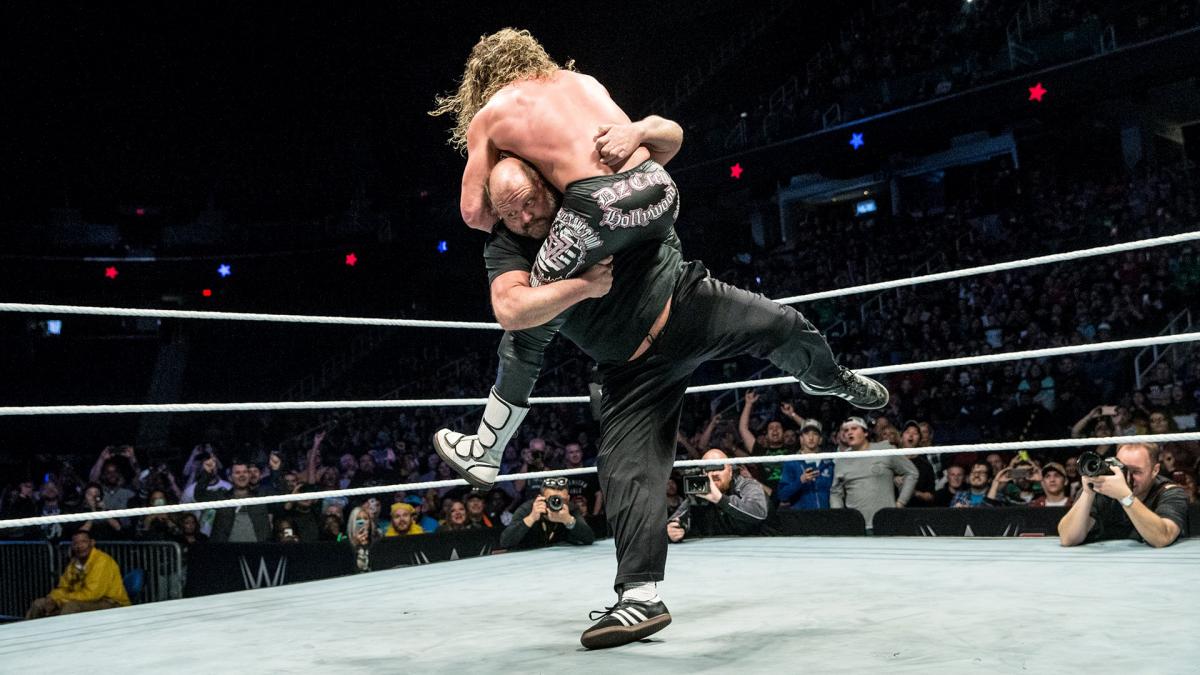
The magic of any spinebuster lies in its mechanics and snap, and there aren’t many wrestlers better suited to those descriptors full-stop than Arn Anderson.
Honed to perfection, Anderson liked to snatch his opponent mid-motion, capitalising on their momentum off the ropes to make the move feel sudden, inescapable and deadly. Rather than chaotic violence, ‘Double A’ chose control. With a firm grip, rock solid posture and perfectly precise footwork, every detail within the move is crisply executed and fiercely believable.
Added to all of that was of course, Anderson’s undeniable aura. No-nonsense from catch to pivot to the final devastating slam, the visual components always aligned with the ‘Enforcer’ himself - understated, but completely effective and absolutely essential.
75. Rikishi | Rikishi Driver
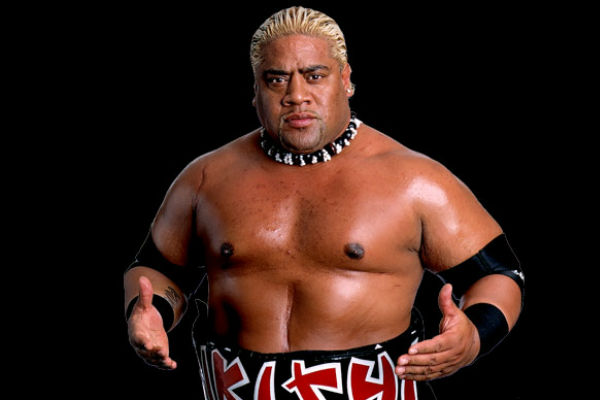
The piledriver - any variation of it - was on thin ice in WWE by 1999, thanks mostly to the damage done to Stone Cold Steve Austin’s neck in 1997, but also due to a series of other serious injuries from moves like it taking out talent for long and difficult rehab stretches.
By 2000 it was completely outlawed, and if The Undertaker wasn’t getting his Tombstone, his BSK brother Rikishi stood no chance of keeping the Rikishi Driver. More’s the pity - as total shock-and-awe head drops go, it's one of the most satisfying ever witnessed within the walls of the market leader.
Dropping to a seated position with remarkable control, the former Headshrinker knew how to make it look like he was taking a few inches off the top of his opposition. The compactness of the move amplified the visual impact, as the opponent appeared to be driven headfirst with no room to maneuver or absorb the blow. Confined more to video games than reality, if the social media feedback loop existed back when Rikishi was at the top of his game, the sheer drop bounce of it all might have generated the same discourse as a Canadian Destroyer.
74. Brock Lesnar | The Brock Lock
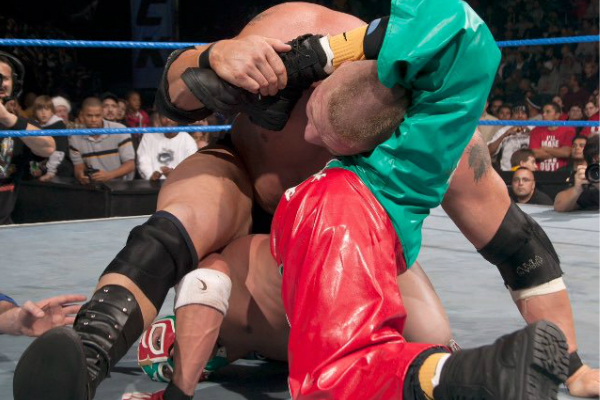
Brock Lesnar’s Brock Lock is a brutal submission hold that exemplifies the sheer dominance and unmatched physicality of ‘The Beast Incarnate.’ While Lesnar is best known for his German suplexes and the F5, the Brock Lock is a hidden gem in his arsenal that highlighted his versatility during his original run. It was both effective and terrifyingly believable.
With ease, Lesnar could seize his opponent’s leg, establishing total control with his raw power. From there, he lifts the leg high and drapes it over the back of his neck, creating an unnatural angle that immediately signals danger. The visual is striking: Lesnar, towering and menacing, stands as his opponent writhes in agony, their body contorted by the relentless torque he applies.
The effectiveness of the Brock Lock lies in its combination of leverage and obvious visible pain. The position stretches the hamstring and hyperextends the knee, while the neck placement creates a believable image of maximum pressure. Lesnar’s strength and intensity amplify the move’s credibility, as his typical body language - gritted teeth, flexed muscles, rage - sells the idea that he could follow all the way through and simply tear his opponent apart with ease.
73. CM Punk | The Pepsi Plunge
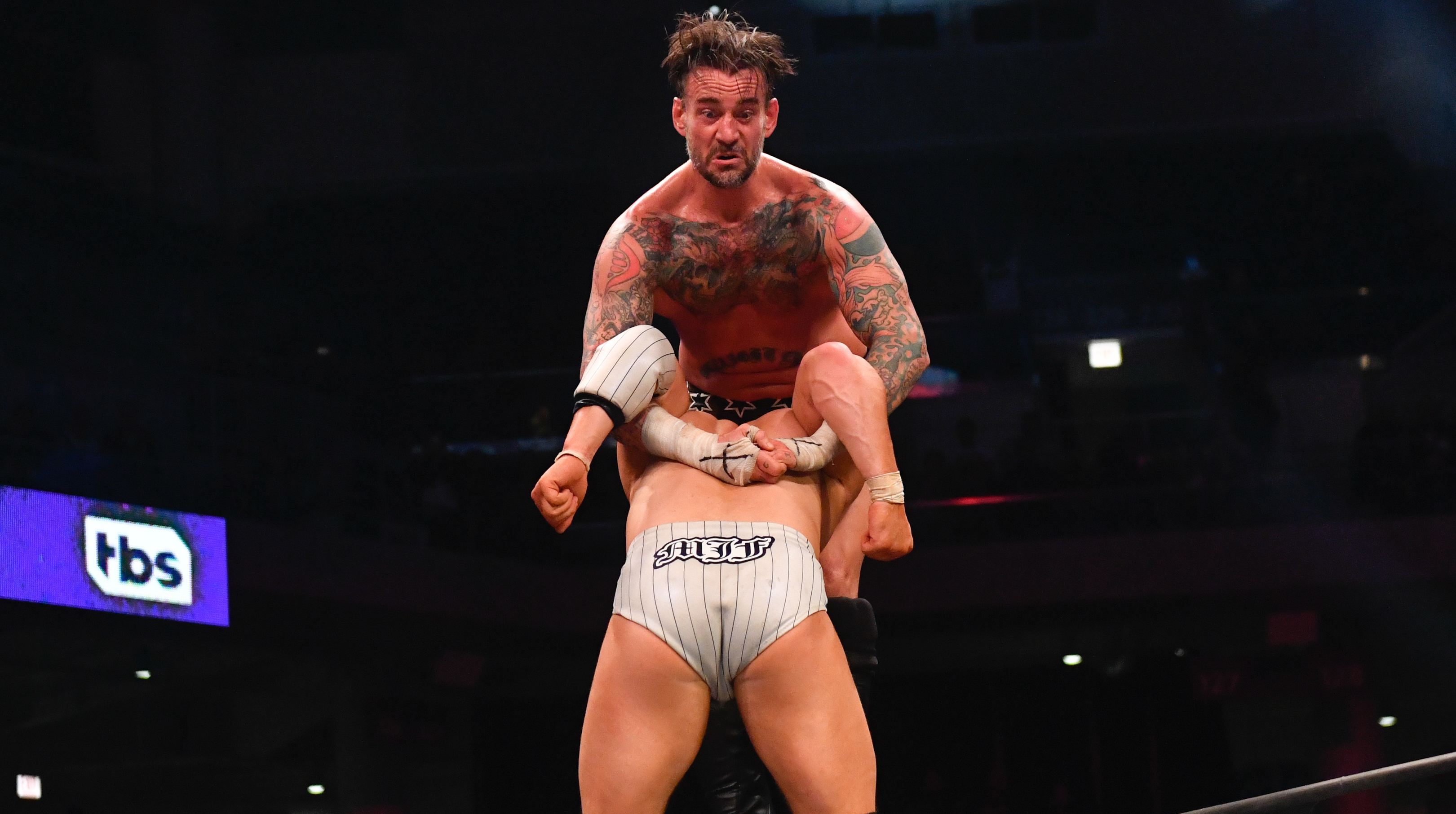
A top rope Pedigree, CM Punk’s early-career finisher defies the traditional aesthetics of high-flying moves and seamless techniques in that it can sometimes look terrible and takes ostensibly more hassle than its worth to even set up. Yet, despite the somewhat clunky appearance, it remains an incredibly effective and memorable finisher, largely due to the inherent danger it conveys and the storytelling it has repeatedly enabled.
When Punk finally drives his opponent head-first into the mat, the move’s impact acts as a certain killshot. The familiar finisher being hit from such a height feels catastrophic and decisive, and though it lacks the fluidity of more polished moves, the sheer visual of the plunge - both the literal drop and the metaphorical statement it makes from somebody who has the ego to even try it - commands attention.
Perfectly aligned with a Punk still working through his formative years in Ring Of Honor, it’s gritty, risky, and a little rough around the edges, but it’s not meant to be pretty - it’s meant to be a finisher in the truest sense of the word.
72. AJ Styles | Springboard Moonsault DDT
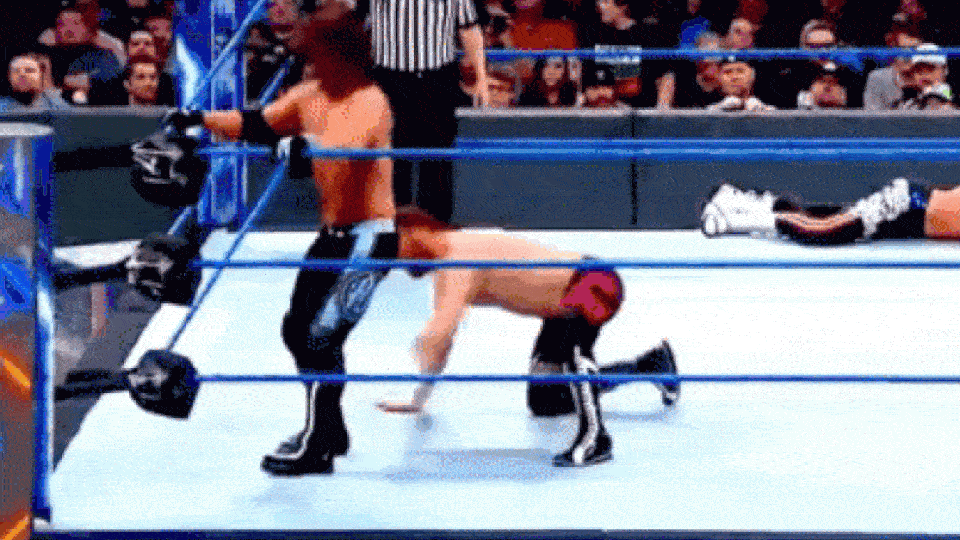
There was a time when watching AJ Styles was like watching a modest time traveller that had returned from 20 years in the future and brought with him every new athletic feat previously unexplored.
If you could think of something, ‘The Phenomenal One’ could do it. And better still, before you’d thought of a wrestler doing something else, he’d do that too. This was the case with his Springboard Moonsault DDT.
Starting with a springboard off the ropes, Styles instantly got fans and his opponents guessing. Transitioning that to a moonsault, it was at least ostensibly clear what to expect after that - until Styles once again flipped the script. Catching his opponent mid-air, he’d seamlessly transition into the reverse DDT, driving the back of their head into the mat with force.
This sudden shift from elegance to brutality was ultimately what made the move so devastating. The trajectory adds extra velocity to the impact, meanwhile visually, it’s flawless. Styles’ timing and the opponent’s cooperation always ensured the landing looked devastating without compromising safety too.
71. Scott Steiner | Steiner Screwdriver
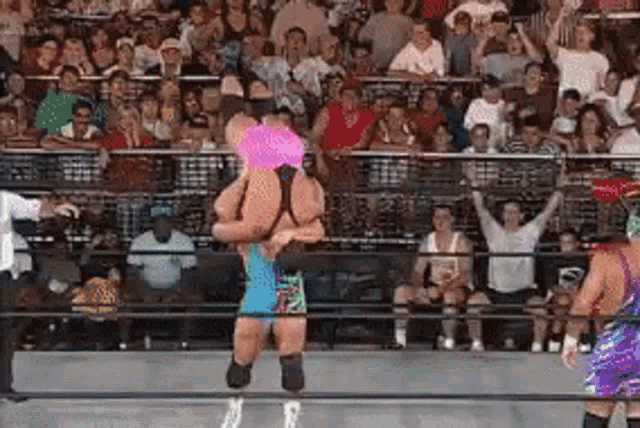
Oddly a better fit for the version of the man that used it less, the scream-inducing brutality of the Steiner Screwdriver belonged in the body of a Big Poppa Pump hoss fight than Steiner Brothers tag matches.
That’s not to say Rick and Scott didn’t know their way around absolutely destroying people, but the bright gear, mullets and occasional smiles ever-so-slightly obscured the violence ahead. ‘The Big Bad Booty Daddy’ delighted in it. And he probably delights in watching clips of the Screwdriver to this very day.
A portmanteau of a move, it is a vertical suplex that ends in a jumping tombstone, but if that simplified explanation isn’t horrifying enough, imagine actually being trapped in it. You’re upside down with only the merciless face of one of the industry’s scariest wrestlers looking back at you, and when you are brought back down to earth, it’s with maximum velocity on your head and neck.
It belongs in a different time as much as it would fit as a finisher in the present day, but could anybody sell owning such a death blow quite like somebody who had no problem going in for the kill?
70. Bret Hart | Sharpshooter
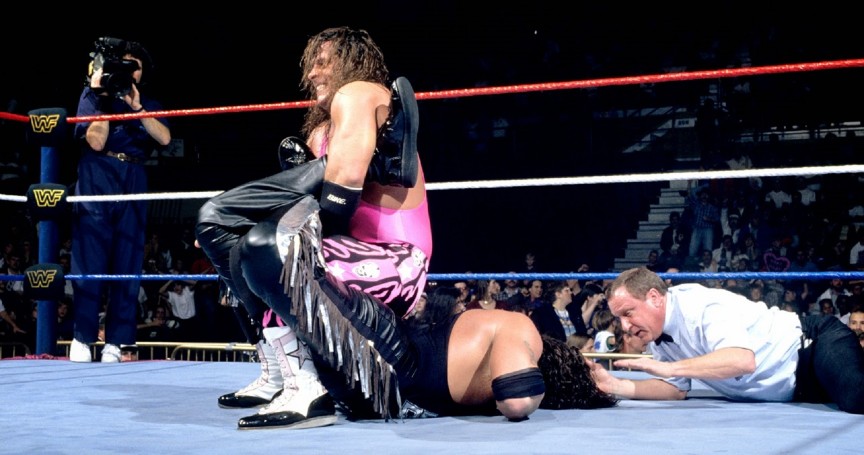
From a visual standpoint, the Sharpshooter was yet another manifestation of its master - Hart’s precision in locking his opponent's legs and turning them over was so tight that the scene resembled a crosshair, as seen by a hit man who was, presumably, a sharp shooter. Meanwhile, back in the ring, the way he leaned back with authority and a grimace of his own sold the pain his victim endured.
Its versatility also contributed to its legacy. Hart could lock it in on anyone, from towering giants like Diesel to technical peers like Mr. Perfect, and still make it believable. It wasn’t just about size or strength - it was about technique and Hart’s in-ring genius. The fact that he often didn’t win matches with it had the opposite effect to a traditional belief that a finisher should have a 100% success rate too. By not always managing to grab the hold, he was able to emphasise just how worthwhile and dangerous it was.
Calculated, devastatingly efficient, and almost impossible to escape, it was and is as timelessly brilliant as ‘The Excellence of Execution’ himself.
69. D-Lo Brown | Frog Splash
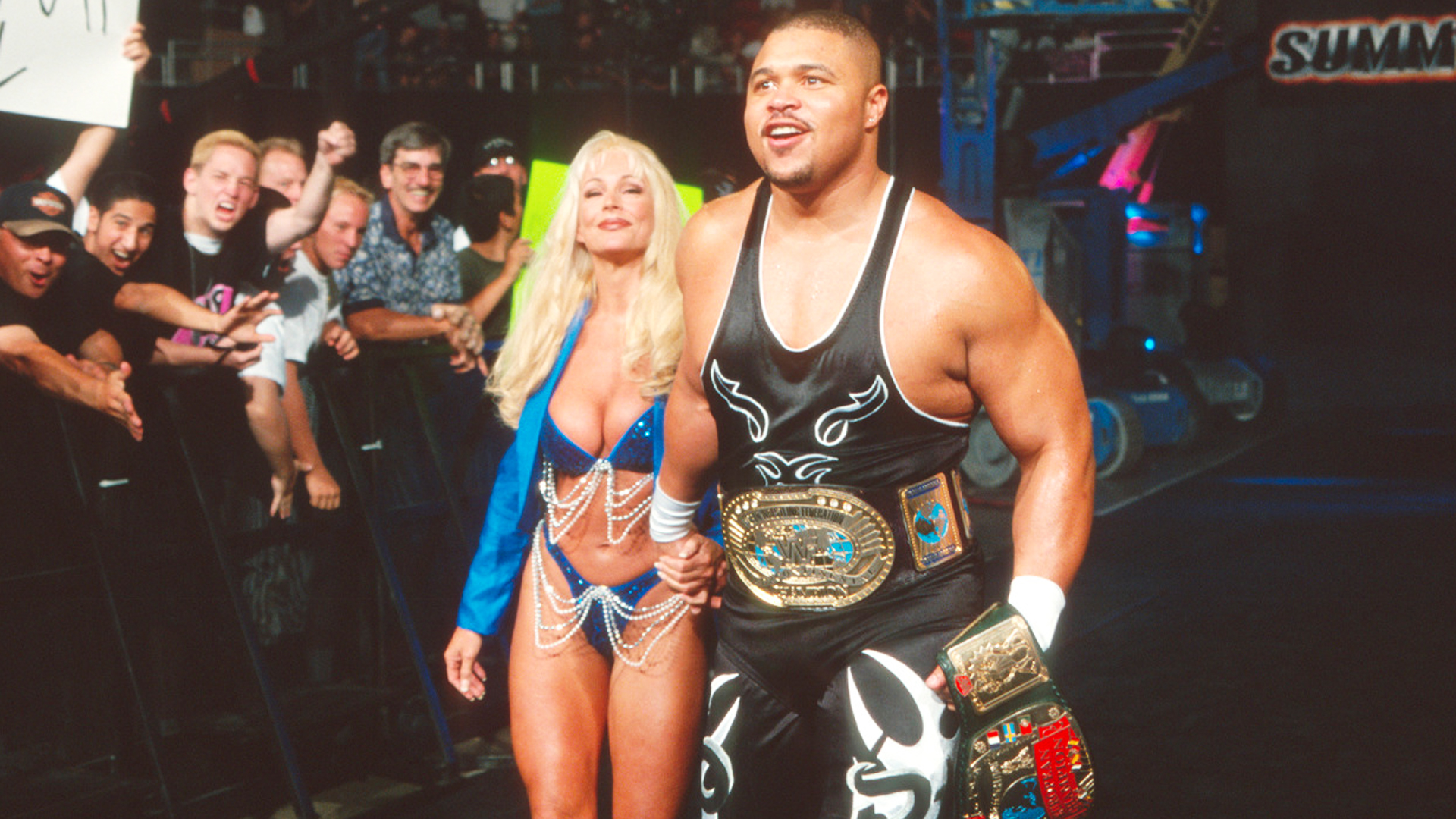
D’Lo Brown’s frog splash was a thing of bizarre beauty. An explosive blend of charisma, athleticism and impact, it was one of the most effective frog splashes in an era full of them, with Brown’s unique take on the leap ensuring just it would stand out amongst and above all the rest.
Launching himself with incredible height and energy, Brown added a signature shake of his shoulders mid-flight, dropping his arms deep in the space between his splayed legs, giving the move a distinct flair that felt entirely his own.
The showmanship didn’t detract from its impact. The slight pause in his descent as he mimicked the titular “frog” created an illusion of added momentum, making the crash onto his opponent seem all the more devastating. Brown’s larger frame compared to other flyers only amplified the move’s believability too. When his chest collided with his opponent’s, it looked like it had the weight to easily finish the job.
68. Hernandez | Border Toss
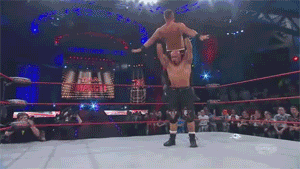
There are countless powerbombs, throws and tosses in professional wrestling, but the Border Toss combined all three with truly frightening results.
Unlike a standard variant where the attacker can control virtually all of the descent, Hernandez launched his opponents so far into the air that it was left to gravity and momentum to do the rest.
The move looked devastating because it was devastating. Opponents crashed to the mat with sickening force, often skidding or even bouncing upon impact. The chaotic nature of the move gave it an air of danger that few finishers could match. It wasn’t clean. It was violent and massive and bombasting, and that’s what made it work.
Unlike much of Hernandez’ surprisingly flashy offence, the Border Toss was never about finesse but raw, destructive power - a fitting exclamation point for one of wrestling’s most intimidating big men.
67. Bull Nakano | Scorpion Crosslock
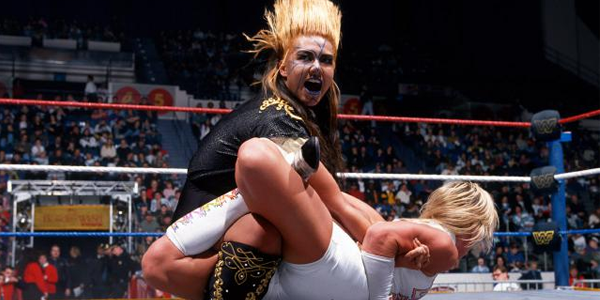
A fusion of technical expertise and theatrical brutality, the Scorpion Crosslock managed to stand out as a particularly brutal submission hold even within the futuristically dangerous world of 1990s Joshi wrestling. When Bull Nakano locked it in, it wasn’t just about winning; it was about making a statement.
The hold starts as a Scorpion Deathlock/Sharpshooter, but Nakano was one of the first to upgrade it to a new kind of sadistic masterpiece. After securing her opponent’s legs, she’d yank their arms backward, arching them into a grotesque crescent of pain. The visual was stunning - Nakano simultaneously crouching and standing tall with her opponent bent unnaturally beneath her, screaming in agony.
Even when it wasn’t a match-winner, it was as if she was breaking them physically and mentally, positioning herself in such a way that she could mock and deride them for their weakness at the same time. Never had submission wrestling looked so cruelly personal.
66. The Dudley Boyz | 3D
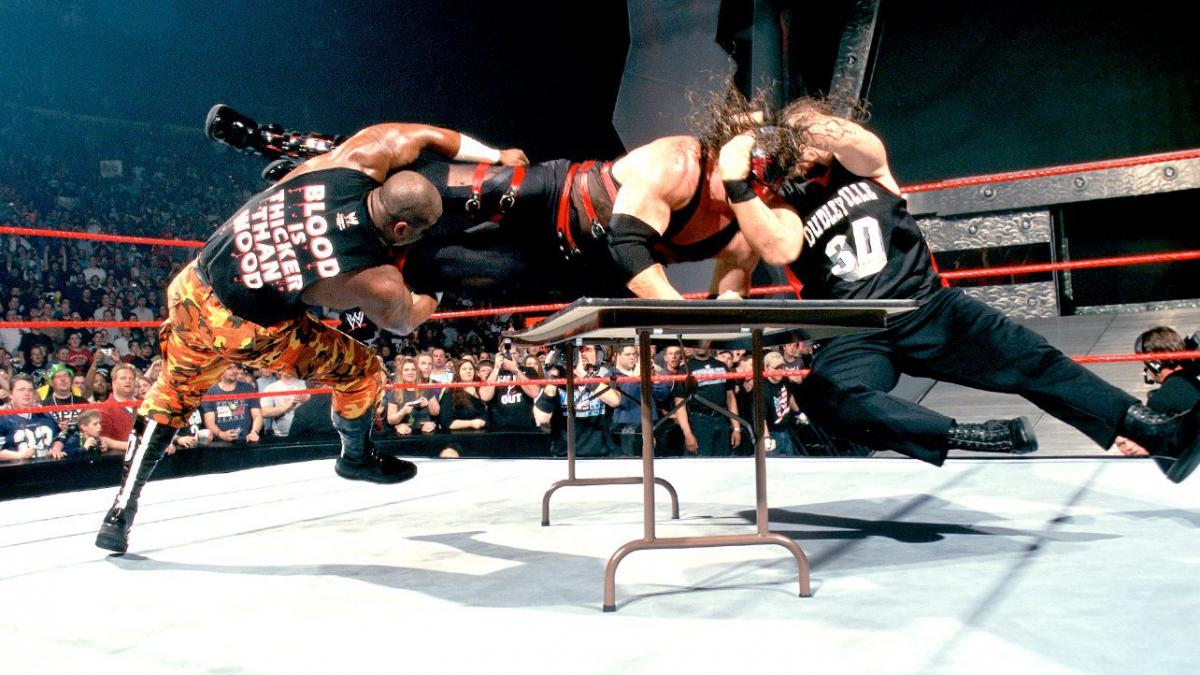
If anything, the 3D might be the most underrated tag team finisher ever.
Yes, it is immortalised thanks to the immortalisation of WWE’s Attitude Era and ECW, and the spaces The Dudley Boyz occupied within those periods of time. But the versatility, believability, impact and sheer love for the move from the crowd truly cannot be understated.
Both Dudleyz can take up either role. Strong enough to lift a wrestler and mobile enough to reach the modest height of their opponent’s neck before driving it into the mat, Bubba and D-Von’s positions are a surprise to the other wrestlers but not to the audience. The reaction that bubbles under as it becomes clear that the Dudley Death Drop is on the way is palpable, and the urge to shout “3D!” along with it further speaks to the deep connection it established all those years ago.
As does the successful rebadging of it by The Usos. The 1D developed a similar reputation for wrapping things up, but will have subsequently become property of Jimmy and Jey to the newest generation of WWE fans post-boom. Bubba Ray Dudley’s not the type of person to let anybody forget anything about the past, but this bit of business respectin’ is more than justified.
65. PAC | Black Arrow
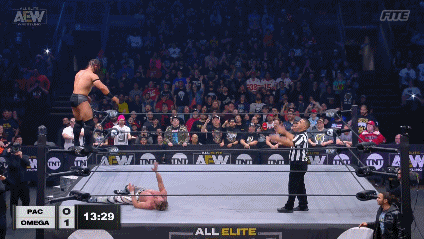
The brilliance of the Black Arrow lies in its seemingly impossible complexity. PAC leaps immediately into a series of mid-air rotations ending on a corkscrew moonsault that defies physics. By the time he connects, his opponent seems utterly obliterated, as if ‘The Man That Gravity Forgot’ has summoned the full force of it to aid his cause.
Every element of the move from takeoff to precise landing demands split-second timing and absolute control. Unlike some aerial moves, the Black Arrow looks devastating without relying on excessive height or reckless speed. Instead, the effectiveness comes from his ability to make it look deliberate and precise, as if no wasted motion exists.
Adding to its aura is the very persona of the modern-day version of PAC. It feels like the exclamation point on a message of dominance. The ability to twist and spin in the air with such fluidity should be reserved for a babyface, but since turning to the dark side, it’s become the ultimate physical statement of what makes the Newcastle-born star ‘The Bastard’.
64. Kerry Von Erich | Discus Punch
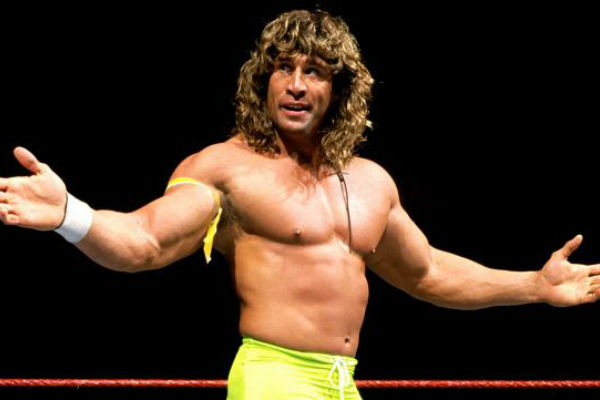
Useful lore for arguably the most charismatic brother during his family dynasty’s Dallas heyday, and smartly rebranded as the ‘Tornado Punch’ when he got his big moment in WWE, Kerry Von Erich’s discus punch was named in tribute to his legacy in a sport he almost conquered before pro wrestling.
Von Erich’s olympic discus throwing dreams ended in heartache, but the knowledge that he could spin his body around at such a rate that he could release a metal and fibreglass disc halfway across a football field became extremely beneficial when he was swinging that same arm at a wrestler’s face.
The rotation added an extra layer of momentum, making the strike look as though it carried the full force of his 250-pound frame. Visually, the move had flair without excess. Kerry’s rotation was quick, and his muscular frame was a blur of motion before the thunderous impact. The connection looked real enough to make believers out of everybody from those that saw him weekly in the Sportatorium to the millions that witnessed him become Intercontinental Champion at SummerSlam ‘90.
63. Randy Orton | Draping DDT
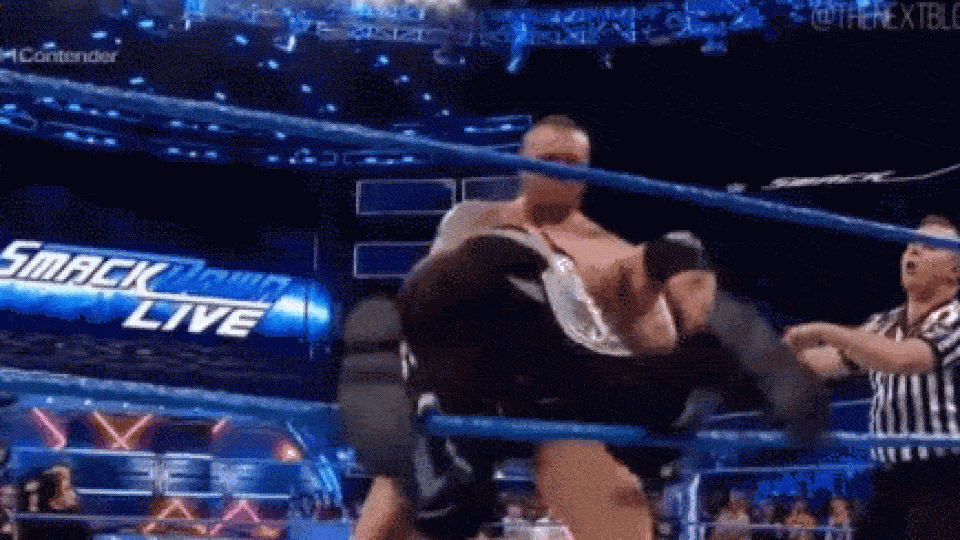
The spindly, snake-like movements of one Randy Orton added a ton to his core offensive choices once he started coming into his own as a worker in the mid-to-late-2000s. That hanging backbreaker whilst cranking an opponent's neck has always been fabulous, and his scooped power slam is excellent, but there are few better signature picks for Mr. RKO (ahem) than his draping version of the DDT.
It's an inventive update on an old classic for sure.
Naturally, as with many signatures and finishers, Randy's set up relies on enemies putting themselves in harm's way at precisely the right moment. They try to sneak through the ropes and get caught, or somehow end up on the ring apron ripe for a boot to the stomach so they double over and prepare for doom. That's when Orton grabs them by the neck, leaves their feet dangling over the middle rope, and drops poor saps head/face/neck first into the canvas.
This always gets a big pop from live crowds, and TV viewers watching from home delight in Randy's trance-like facial expressions. When he's heel, they're outrageously aggressive. When babyface, Orton either flashes a knowing grin at fans or winks at the camera before executing the move. Both lead-in performances give it some personality.
The fact this draping DDT often leads into a mat-thumping taunt designed to tease his evergreen cutter makes it even better. People typically know they're about to see "the three most dangerous letters in sports entertainment" whenever wrestlers drape precariously over the ropes then fall with a meaty thud.
62. Bret Hart | Russian Leg Sweep
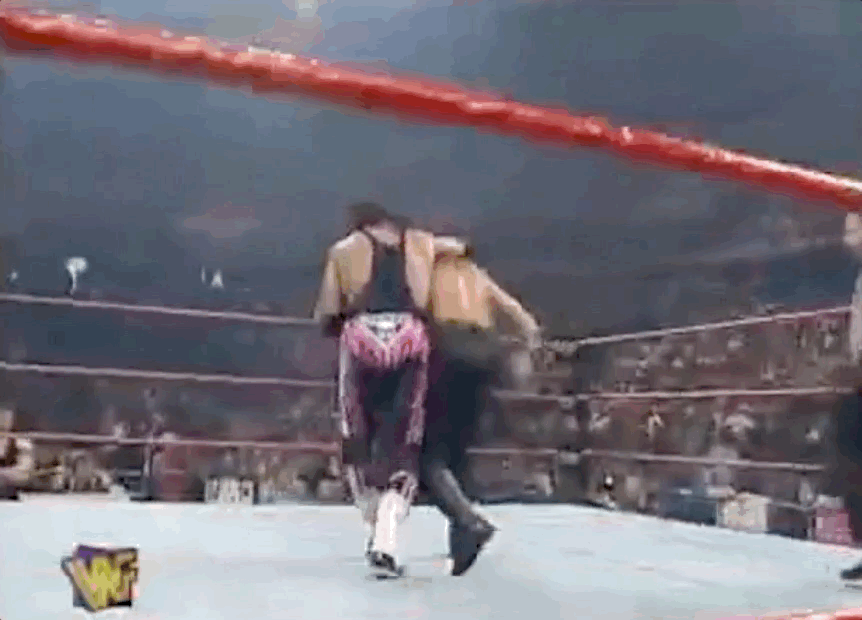
It's tempting to cheat here and shout, 'ALL FIVE MOVES OF DOOM' from behind pink 'Hitman' shades. If you've watched even one lengthy Bret Hart match, then you'll know he deployed the same set of five killer blows to finish opponents. Here's the order: Inverted atomic drop > Russian leg sweep > backbreaker > forearm from the middle rope > trusty Sharpshooter.
So, why has only one of those been picked out specifically? In short, the gusto with which Bret nailed the leg sweep was always a thing of beauty. It would've been easy for Hart to phone that part in, or for other wrestlers to take the sloppiest basic back bump since their first days at a wrestling training school, but no - that was never Bret's style. Everything had to be on point, because he viewed the biz as art and was quite the perfectionist.
After crunching his knee to the erm...spine (honest!) of another man, Hart would deftly dart behind them, position himself just enough in front so that both weren't taking exactly the same bump, then pull back as hard as he could whilst sneakily making sure someone's head didn't smash into the canvas. Again, Bret was an artist and he painted with fine brushes rather than in broad strokes.
Some say Hart always took himself too seriously. He'd say wrestlers can't take pro wrestling seriously enough.
The venomous whip on the sweep, and the satisfying impact it caused, helped feed into the remaining trio of doom-denoting moves in Bret's arsenal. Put it this way: That Sharpshooter wouldn't be anywhere near as great without something so fundamental as the vicious crack of his leg sweep.
61. Triple H | Pedigree
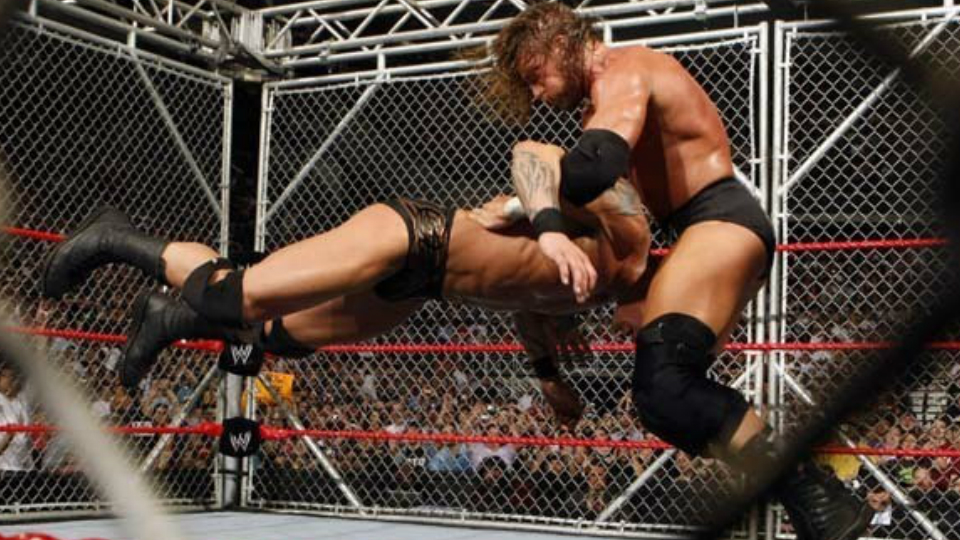
Originally, ol' Hunter Hearst Helmsley (whatever happened to that guy?) used a version of the cutter as his WWF finish upon joining the roster in 1995. His pal Diamond Dallas Page looked on from WCW, then called Triple H up with a humble request. 'Please stop doing that move and come up with something else, because I'm trying to get the Diamond Cutter over as a big deal and build my career'.
Some would've told Page where to go, but Helmsley acquiesced and started looking for another finish. That's when he recalled something he'd seen guys do at Killer Kowalski's training school years before. It was a standard neck-jarring move that involved putting someone's head between your legs then jumping and, in theory, hurting their neck. Hunter thought it looked crap, but he couldn't quite figure out a way to improve the thing by dropping to his knees without potentially breaking someone's face.
The WWF liked a rough run through of the soon-to-be Pedigree in '95, and it was actually Michael Hayes who named the thing shortly thereafter. Triple H appreciated that. He was also over the moon to be safe from further DDP phone calls. Also, best of all, he now had an identifiable trademark move to call his own. Nobody else on the roster had anything like it.
Trips has always pointed out similarities to both the DDT and the piledriver. It's a sort of mish-mash of both, and the Pedigree remains one of the most iconic moves in the industry. It's so great that even Seth Rollins started using it for a while!
60. Claudio Castagnoli | Big Swing
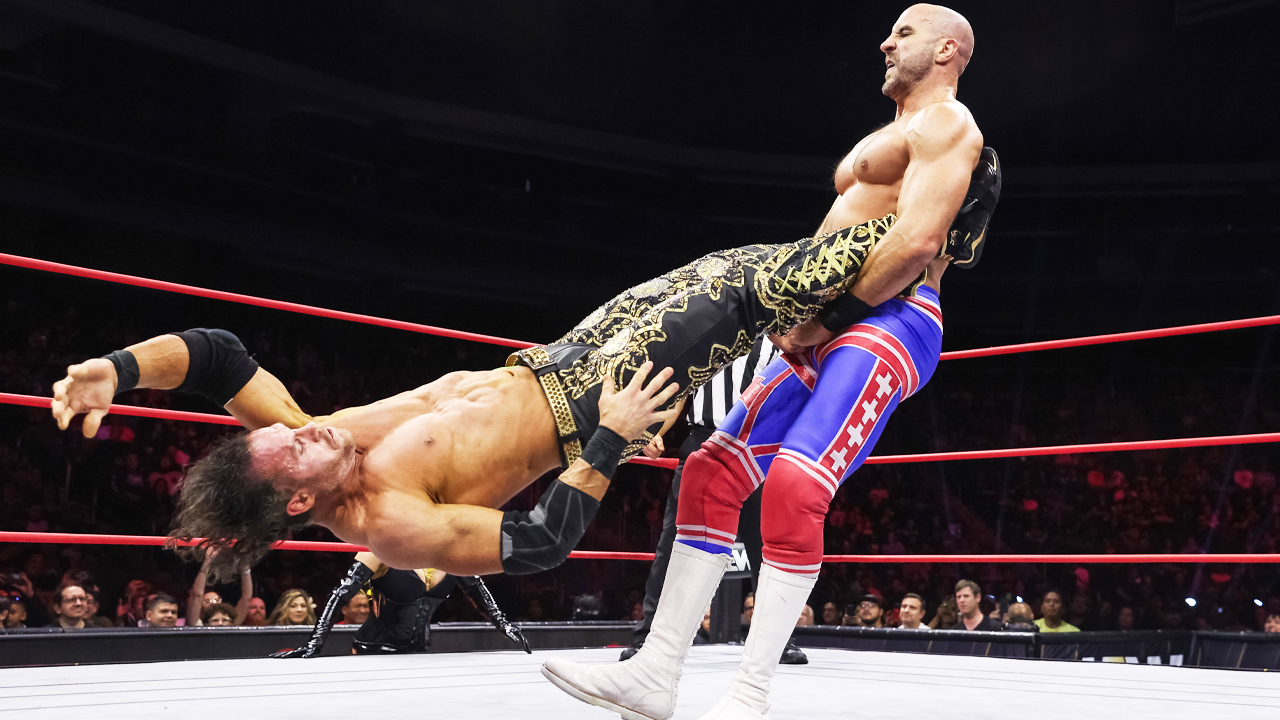
John Cena once called Claudio Castagnoli (who was working in WWE as Cesaro at the time) one of the strongest wrestlers he'd ever met. Claudio is a workhorse in the gym. He's never had bulging biceps like The Ultimate Warrior or insanely puffed out muscles like monsters from the 1980s generally, but Castagnoli is far from small. In fact, he's a big dude who favours strength and performance over pure aesthetics.
Again, that's not to say the ex-Cesaro has never taken pride in his appearance. His muscles pop, but he's a different kind of strong to the raw-boned power of some others. It takes almost superhuman strength, balance and care to perform his Big Swing effectively. Even watching the thing is enough to make most fans dizzy, but Castagnoli rotates his way through spin after spin whilst keeping an eye trained on his opponent's safety.
Their part is protecting their head lest the move drift eerily close to the ropes. Do that (and post up a little with a strong core) well enough, and Claudio will take care of the rest. He's been able to use this move on some big lads who'd take some lifting. Momentum is everything for the swing, but getting it started? Ooft, that has to be difficult.
Even WWE fell in love with what's effectively an old-school move. It's become synonymous with Castagnoli. Think of Claudio and you automatically think of this hold. Next time you see him do it, pay close attention to his footwork. That poise, along with the sheer power involved, is undoubtedly impressive.
What a wrestler.
59. Sting | Stinger Splash
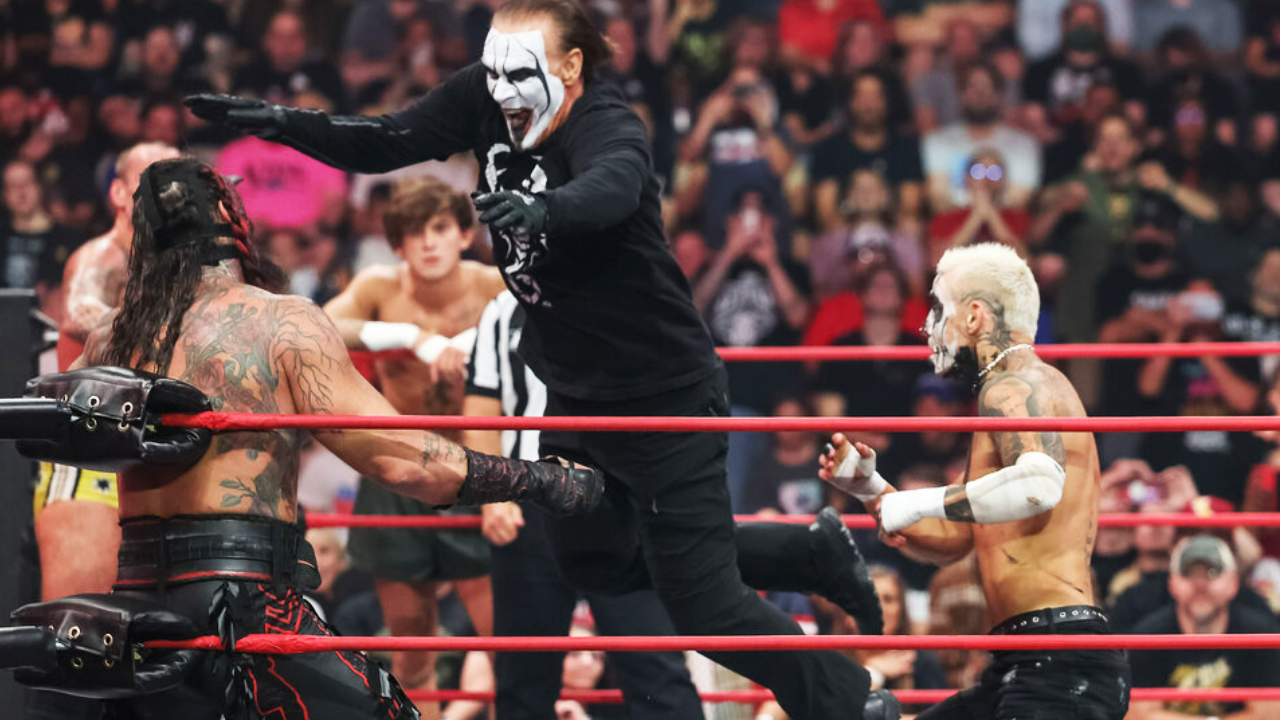
Nobody accompanies the hurtling speed of a Stinger Splash with the giddy, childlike delight of Tony Schiavone. Marking out for all things Stings is kinda his thing, and it has been since AEW realised NWA/WCW nostalgia was a cute addition to programming. In fairness, the Stinger Splash has always been one of pro wrestling's best (and most simple) moves.
It takes minimal effort from both parties, is easy to sell, and it always gets a reaction from crowds. What's not to love? Seeing the face painted icon back up into an opposite corner then wing his way towards a rival is great. Here's the thing: Countless wrestlers throughout history have performed corner splashes or other such moves, but none elicit the same sort of fun from it as Sting. Perhaps nobody ever will.
The corner splash is his move. Godfather's running chest bump variation, be damned!
WCW didn't get everything right, especially nearer the end of the promotion's run, but they did understand the need for corner cams looking over the shoulder of victims. That way, viewers back home would get the full experience. Sting screeched across the mat like he was trying to break some sprinting records, then he'd leap into the air around three quarters of the way. Finally, he'd smack into his rivals like they owed him money. It's still so satisfying to relive some of the best Stinger Splashes in matches against Ric Flair, Hulk Hogan, DDP, The Young Bucks and more.
Again, the sweetest thing about Sting's corner crunch is that it probably felt like a cuddle. However, on screen, it looked for all the world like he'd just wrecked his opponents and set them up beautifully for a Stinger Death Drop or Scorpion Death Lock.
58. Kurt Angle | Triple German Suplexes
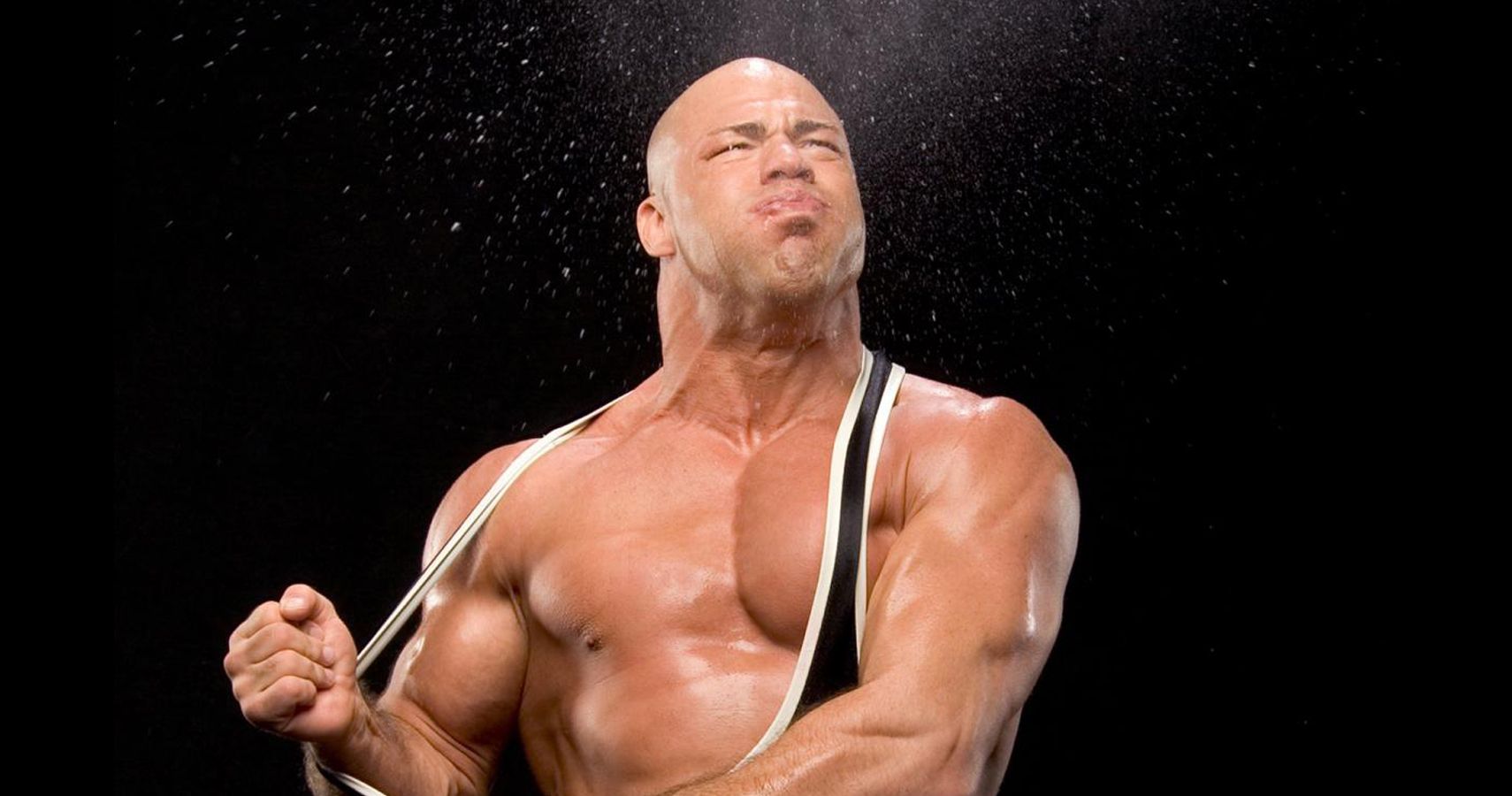
Watch WWE telly today and you'll surely see one Chad Gable hitting back-to-back-to-back German Suplexes on some unsuspecting wrestler. The arch Gable gets on those suplexes is something to behold, and it's reason #1,872 on the list of why so many modern fans compare him to an Olympic great. Kurt Angle was rather fond of hitting the trio of Germans himself, and he was a true master when it came to pacing and spacing.
Here's an in-depth explanation of that latter point.
Any bevy of suplexes should be deliberately stacked in such a fashion that fans have ample time to react to each one individually. Going too quickly lessens the impact each bump has, and Angle understood that better than anyone could've expected from a very-real wrestler coming into a worked industry. There was an exhausting pause between each suplex, almost as though Kurt was letting pain sink in before popping his hips and sending a weary wrestler straight to hell for a second or third time.
Smartly, Angle also maintained his grip by keeping his arms locked around the waists of those taking the suplex series. That way, announcers like Jim Ross, Michael Cole and others could point out how draining it'd be to have an athletic brute like Kurt squeeze the life out of you right before hitting each German in succession. It was sensational to watch.
Others, like Chris Benoit and the aforementioned Gable, also made/make great use of the 'Triple German' spot, but nobody hit each beat better than Angle. His aggression, pacing and in-game patience was stunning.
57. Booker T | Harlem Side Kick
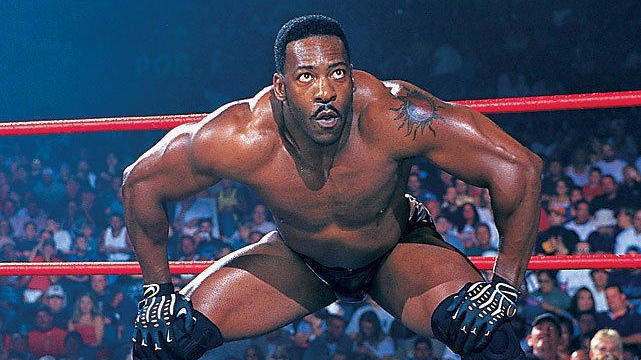
Ready for perhaps the oddest of odd references? OK, so maybe it's not that weird. Wrestling move enthusiasts who also dabble in video games likely spent hours in the creation suites of various WWE titles - that'd be true long before Create-A-Move became a thing. There was a unique pleasure in sifting through move menus to pick out the ideal moveset/signatures/finishers for your created superstar in even the earliest SmackDown games.
In 2002's SmackDown: Shut Your Mouth, Booker T made his PS2 debut and was one of the most fun wrestlers to play as. Sure, spamming his spinarooni taunt was always some laugh, and his axe kick finish looked ace, but there are few things more rewarding in SYM than repeatedly hitting a Harlem Side Kick on opponents and watching them bump like Curt Hennig in his prime over and over again.
That kick looked photorealistic to the one Book would hit on episodes of Raw and SmackDown too. Stretch back a little further than that to WCW Nitro and Thunder to see some of the most visually pleasing versions of the signature strike. This was the Jerry Lawler or Bret Hart punch of the kicking world, no doubt. That's how well-worked each one was.
Booker's Harlem Side Kick blended a spinning heel kick, a superkick and even elements of the traditional big boot. Imagine Sheamus going for a Brogue Kick, but using the side of his leg rather than the sole of his shoe. So, there you go, this strike was killer in reality and in the video game world.
Don't hate the player, hate the game? Nah, love the game for enhancing this signature gem.
56. Kevin Owens | Pop-Up Powerbomb
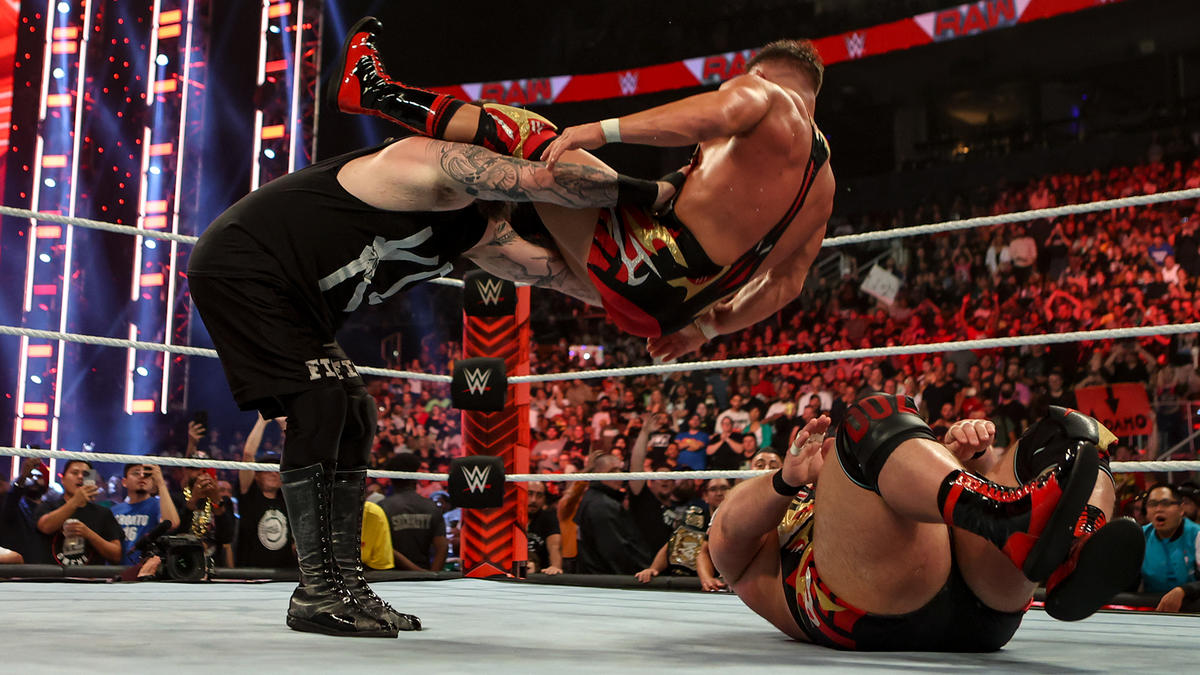
Speed and sheer impact are the hallmarks of moves perfect for either ending matches or luring people in with a crowd-fooling near fall. Kevin Owens understood that when looking for an easy way to lace his bouts with a move that could achieve both. Sometimes, he's won major matches with the Pop-Up Powerbomb. Other times, it's little more than another tease-heavy spot that convinces most a wrestler sustaining it is toast. '1...2...he-got-him-no-he-didn't' vibes.
KO uses Steve Austin's classic Stunner a lot of the time, which is fine. That finisher is over with fans as a legacy move, and it'll always get a pop because of the suddenness of it all. The Pop-Up Powerbomb has the same kind of air, although there's a bit more time for fans to settle in and prepare due to Owens firing opponents off the ropes before hitting it.
On that: Kev sporadically hits his Powerbomb to cut off an offensive bid from someone else. For example, he might duck a clothesline then meet enemies bouncing back off the opposite ropes. It's the fact that everything happens in the blink of an eye that makes the move so aesthetically cool. High fives all round in the stands when KO goes Pop-Up, basically.
Variations on the Pop-Up Powerbomb include one Owens nails on the ring apron. That always looks gnarly, and has been deployed to great effect when running injury angles, turns or the like with workers like Bryan Danielson/Daniel Bryan or Sami Zayn. Once again, the evil speed of the move helps there.
55. Keiji Muto | Shining Wizard
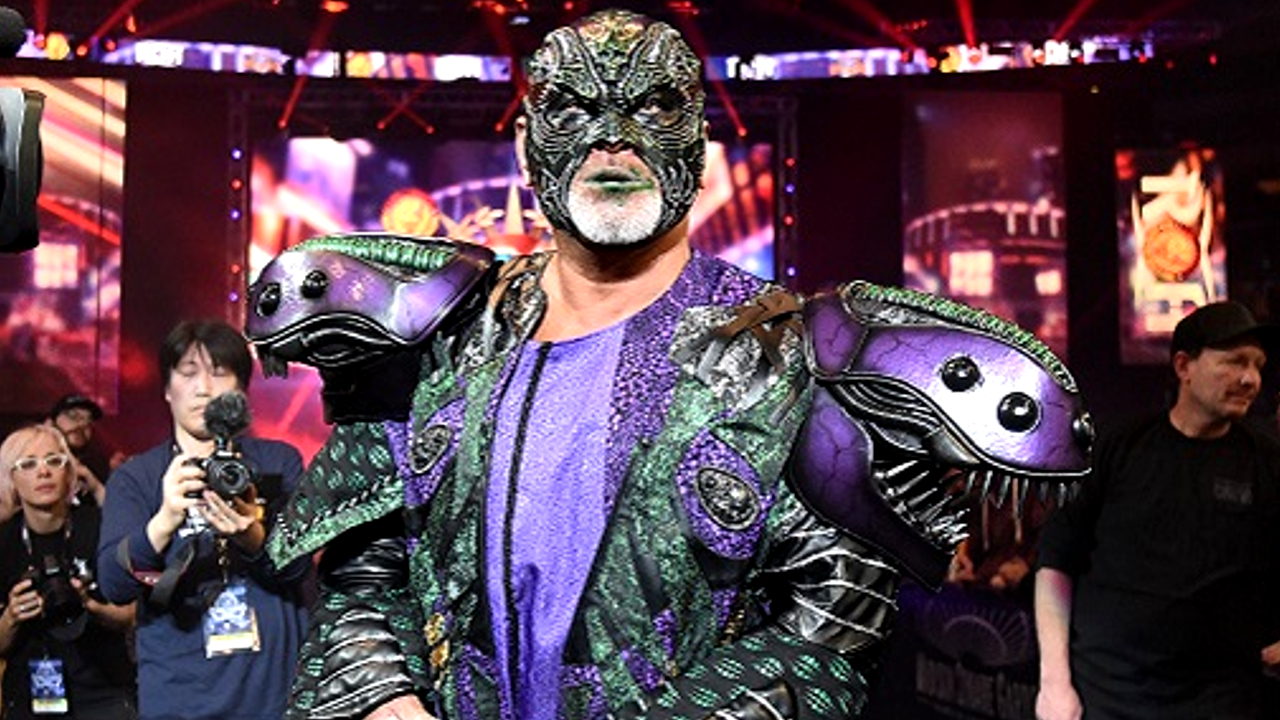
The Great Muta is rightly regarded as one of the best and most creative pro wrestlers of all time. As he grew older, Keiji Muto sought ways to keep his moveset hard-hitting and memorable without having to rely on moonsaults or other aerial attacks that'd put unnecessary stress on his knees and joints. That's why he came up with the fantastic Shining Wizard knee strike.
Hundreds of wrestlers have adapted the move and turned it into either their finisher or a high spot, but Muto performed it flawlessly. His Shining Wizard had some beef behind it, and it often looked like he'd taken an opponent's head clean off his shoulders. Before hitting the move, Keiji would get someone down on one knee so he could sprint towards them for the knockout blow.
One leg screw or sweep then...BOOM!
Arguably the finest compliment one could pay to Muto's knee strike is that it looked impossible to counter. Even wrestlers who managed to get a hand up (few did, because blocking the Shining Wizard outright was rarely part of the match) could be realistically cleaned out by the brute force of a big knee flying right at their chins. It's still one of the most satisfying moves ever when done correctly.
Another quality the Shining Wizard has? Versatility. Muto was able to hit it in the centre of the ring, right by the ropes, in the corner, or outside on the floor. He even used weapons like steel chairs to springboard from and add extra oomph over the years here or there, Sabu-style.
54. Scott Hall | Fall Away Slam
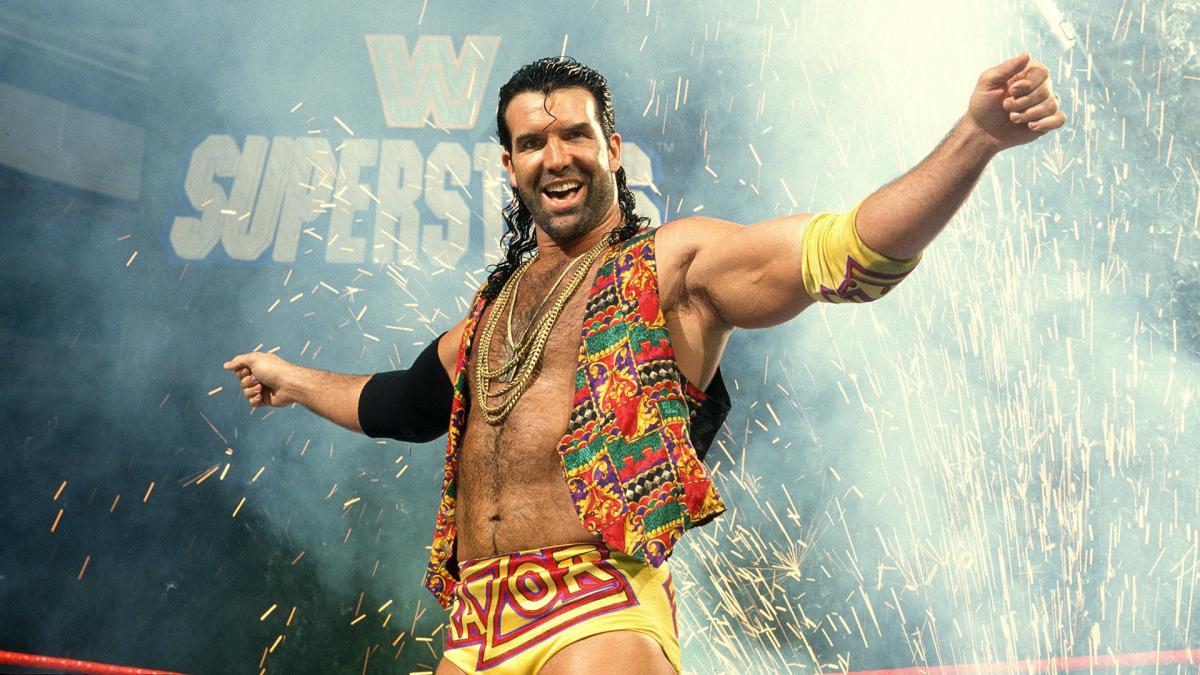
News flash: Scott Hall was a deceptively big dude. Hanging around with an even bigger lad like Kevin Nash for most of his career tricked some into thinking the ex-Razor Ramon was mid-sized. No, he was massive. Realising that all over again makes some of his matches against Bret Hart, Ted DiBiase, The 1-2-3 Kid, Jeff Jarrett, Diesel, Goldberg and others even more impressive.
'Big' Scott Hall hit his fall away slam on pretty much all of 'em, and he did so with ease.
There's something appealing about a move like this. Seeing one wrestler manhandle another, and hold him comfortably without the need for kicking legs ('you're not going anywhere!') or screaming, before dumping him overhead and doing the hand slap taunt after a job well done is rather cool. Hall was the best at it. His fall away was little more than a rudimentary back bump for him, but it looked killer for those taking the other half of the move.
They'd spin over Scott's head and land on their back (ideally) in a heap. Those who wanted to make things seem a little fancier might tumble again so they reached the ropes and did that weirdly-sweet 'fly caught in a spider's web' sell after landing awkwardly. That'd be juxtaposed with Hall casually showing out to the audience and acting like he'd done something as basic as taking the bins out.
Variations on the theme include a fall away slam from the middle turnbuckle, which always looks mighty. It speaks volumes about Razor's size and power that even his ground-based original matched that sort of fall.
53. Eddie Guerrero | Three Amigos Suplexes
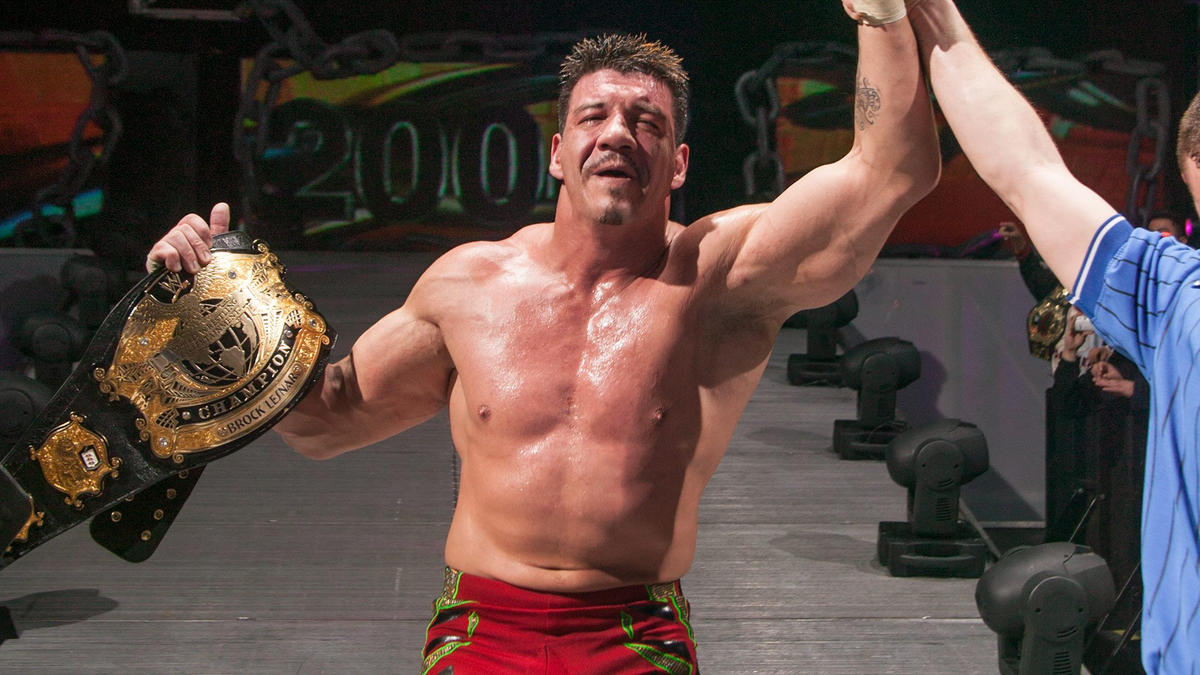
Ask anyone who worked with the man to describe Eddie Guerrero and you'll get various words thrown back at you. Amongst other things, Guerrero was technically brilliant, charismatic, tempestuous and passionate about wrestling. One word normally echoes no matter who's asked to talk about 'Latino Heat' though. He was so, so smooth between the ropes.
Eddie made everything look so effortless. It wasn't, of course, but producing great matches came naturally to somebody who'd been around the game his whole life. "Smooth" was never more accurate than when Guerrero landed three sweet consecutive suplexes that involved a float over so slick you'd swear someone had sprayed WD-40 on his joints before going through the curtain that night.
The "Three Amigos", as they became known, should've been a basic (or even slightly dull) routine brought out during matches when the great man was fresh out of ideas or needed a breather. Nope. Eddie didn't operate that way. He turned something apparently everyday into a spot that had people jumping up out of their seats to cheer him on. Or boo him when he was playing heel.
This tri-pronged suplex series had range.
Each suplex was delivered with a sweet snap to it as well. That enabled Guerrero to keep hold of someone, spin his hips around, then position them for the next move. All three were usually identical too - that's how crisp Eddie was in-ring. A lot of modern day WWE stars use the Three Amigos as a tribute spot to one of their favourites. No-one does it quite as well as Guerrero did.
52. Baron Corbin | Deep Six
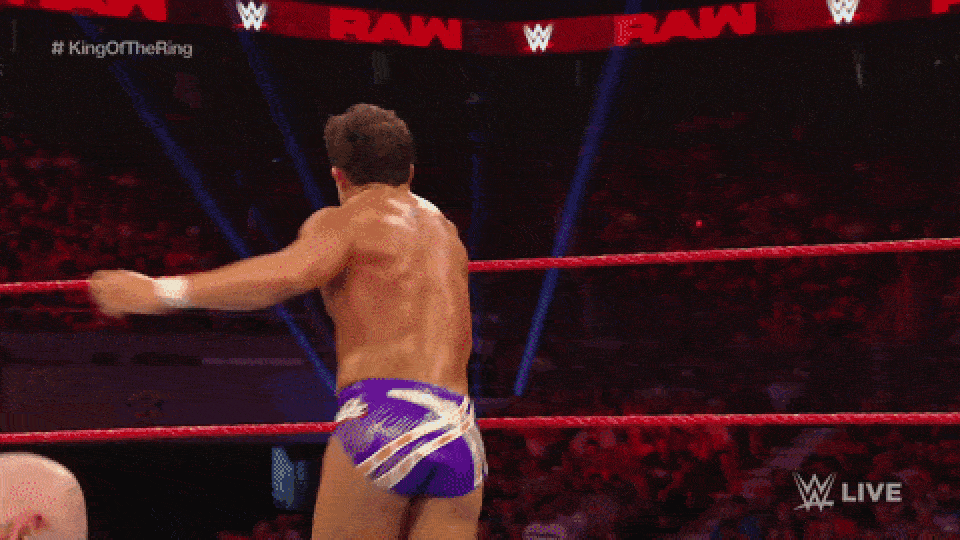
You might not have expected to see the name Baron Corbin here. After all, Corbs sickened everyone to their stomachs by working a frankly rotten retirement match vs. Kurt Angle at WrestleMania 35, and he was oft-called a Vince McMahon pet project nobody asked for. That doesn't tell the whole story. Baron had some value, but the way he was shoved down fan throats was a tad forced.
Slick moves like that dash around the ringpost before coming in for a clothesline, his finishing End Of Days, and the Deep Six explored here all had merit. The latter was particularly awesome. One could watch Corbin hit that move on Dolph Ziggler endlessly; few knew how to perform the spinning wildly out of control sell better than Dolph, and he was ideal for the Deep Six.
At heart, the Deep Six is akin to that sidewalk-style deep slam Big Boss Man hit in his heyday. There was always a bit more flamboyance to it, however. Corbin sent opponents off into the ropes, then positioned his body just to the side so he'd be well placed to spin them around and around before landing wrestlers flat on their back. At once, it seemed he'd sent them neck/back of the head first into the mat.
Nah, they landed safely enough. That danger was part of the illusion.
On heavier workers, the Deep Six looked a bit like The Rock's famous Rock Bottom (or Booker T's Book End if you're a WCW hardcore). On lighter or more agile ones, it was more akin to something you'd see at an AAA show.
51. AJ Styles | Pele Kick
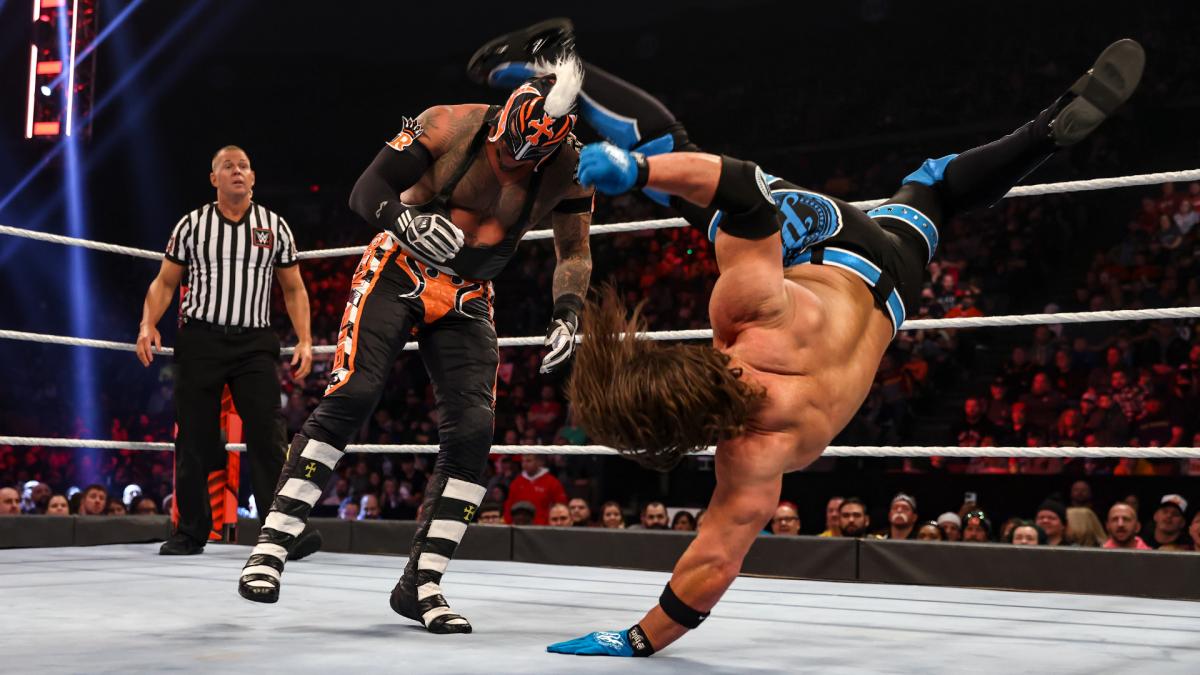
There are countless kick variations in pro wrestling. Big boots, spinning heels, superkicks (lots of them!), axe kicks, stomps, straight thumps to the gut and more. One of the best has to be the Pele Kick one AJ Styles has used to great effect over the years. It's so good, in fact, that many workers across different promotions have copied his homework.
AJ's kick sees him start a backflip before stopping short of a full rotation and sending his foot/shin into the face of unsuspecting victims. Cleverly, most on the receiving end lean into the strike so it looks like Styles knocked their block off. Without that early lean, there's a chance AJ would miss his target and the spot would look flaky as a result. Someone as celebrated and skilled as Styles couldn't have that - he has a reputation to maintain, after all.
The Pele Kick normally occurs deep into a match when the 'Phenomenal One' needs a quick comeback or at least something to halt his foe's momentum. The Pele is either followed by a smart double down in the match, or it leads to a quickfire assault from AJ that swings that momentum in his favour. It's a really, really useful tool for him as a worker.
Styles was one of the more inventive names during TNA's early days. His X Division choice cuts vs. everyone from Amazing Red and Jerry Lynn had everyone talking for the right reasons, and he's never looked back.
50. Jeff Hardy | Whisper In The Wind
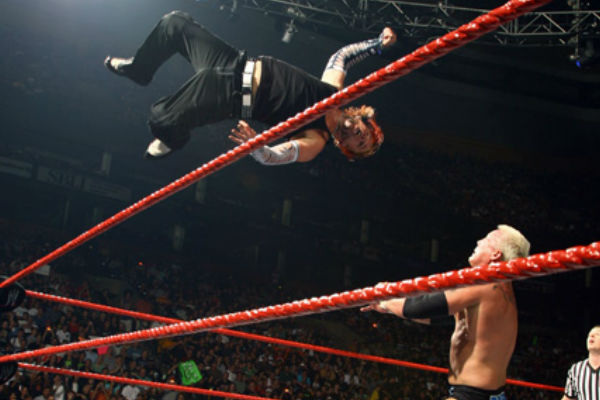
The subject of inventive and creative wrestlers couldn't pass without mentioning human pinball Jeff Hardy. That dude has put his body through the wringer over the past couple of decades. It's actually a minor miracle Jeff can walk at all, never mind still hit Swanton Bombs or other trademark pieces of aerial artistry he's become known for. Enter the stupidly great Whisper In The Wind.
On the surface, it's a fabulously simple high flying move that swings each match Hardy's way and lets commentary teams gush with praise for his balance and skills. Nowadays, Jeff is more likely to slowly climb the turnbuckles to set up for a WITW, but that wasn't always the case. Previously, he'd literally run up the ropes like a parkour king before seamlessly spinning into an attack that'd make anyone creating moves in WWE 2K games proud.
Everything about the sequence flowed beautifully.
Arguably, Whisper In The Wind (and that springboard double leg he'd do after leaping from his brother Matt's back) could be considered more impressive than the finishing Swanton. Sure, that Bomb has given Hardy's career multiple Hall Of Fame moments. He's hit it from the top of terrifyingly high ladders through tables, for example, and those memories will live forever.
However, Whisper has a subtle grace to it that should never be overlooked when talking about Jeff's best contributions to the industry. His dash up the turnbuckles was very Sean Waltman, and had more than a splash of lucha flair about it too. Fans watching the WWF's product in 1999 didn't see a ton of this sort of thing.
They'd soon get used to it. Hardy made sure of that.
49. Tajiri | Tarantula Stretch
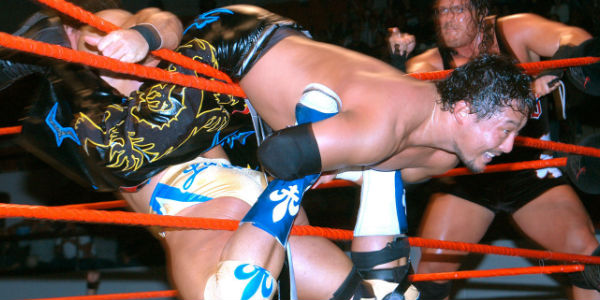
Yoshihiro Tajiri isn't the only pro wrestler to make use of the agony-inducing (but not really, of course!) Tarantula hold, but his exploits inside WWE and ECW rings made the move more famous in front of a casual audience. Technically, unless he was working a 'No DQ' match or something like that, William Regal's favourite couldn't win bouts with the submission. Referees had to start a five count because both he and an opponent were tangled up in the ropes.
That meant the Tarantula couldn't stay locked on for very long. In truth, this only added to its mystique. On the whole, commentators like Joey Styles, Jim Ross, Michael Cole and others did a damn fine job selling the idea that opponents wouldn't survive being held that way for longer than a few short seconds anyway. Without the ref's mercy, they'd be cooked.
Fundamentally, the Tarantula was a hanging Boston Crab-style move with some spicy extras. Tajiri heightened the painful-looking hold by mugging for the cameras with some tremendous facial expressions. Meanwhile, he cranked back on someone's legs and used his own pins to arch back their shoulders and back. It was a torturous visual, one made even better if the Cruiserweight star's mouth was drooling black mist.
Someone mainstream needs to bring this one back in a hurry. It pops up occasionally, but nowhere near enough. If producers are switched on, they'll switch to a camera angle showing the victim screaming their way through it too. That, combined with Tajiri's expertise, made this one a true winner.
48. Scott Steiner | Frankensteiner
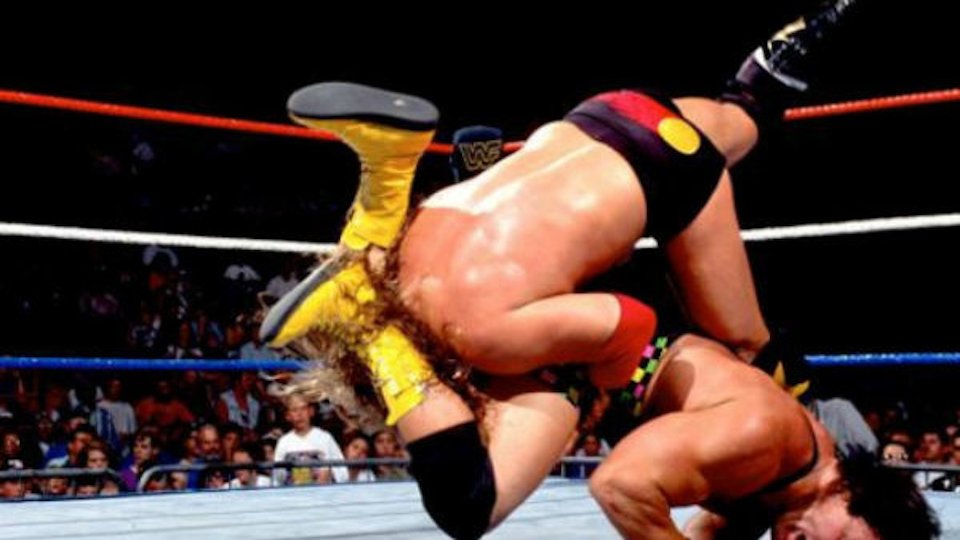
Wrestling fans tuning into WCW back in the early-1990s couldn't believe their eyes when they witnessed athletic freak Scott Steiner flying around the place like he was half the size. Well-muscled and known for hitting sweet sit-out powerbombs and a variety of suplexes, Scotty also had one hell of a party trick: His finishing Frankensteiner was one of a kind, especially for somebody with his bulk and upper body.
Truthfully, unless the person taking it was switched on, the move could be dangerous. Sure, that could be said for pretty much every wrestling move out there, but this was a 270lbs monster with thighs that'd crush steel effectively spiking someone else's head into the mat. It took some serious flexibility and precision for opposing wrestlers to make the bump look gnarly without taking a post-match trip to the hospital for concussion checks/facial injuries.
Check out the bump one of The Beverly Brothers took at the 1993 Royal Rumble over on the WWF side, if you want to see how menacing the Frankensteiner could look. In years to come, Steiner took umbrage when people started calling his move a hurricanrana or something else - to him, it was always the Frankensteiner or nothing. Holla' if you hear that!
Scott's agility for someone who'd packed on so much muscle was undoubtedly impressive. Of course, he'd use the move less and less as the years rolled on and he got even bigger, but it was legit one of the industry's most eye-popping finishes during the late-80s and into the early-to-mid-90s.
Nobody was kicking out.
47. Sheamus | 10 Beats Of The Bodhran
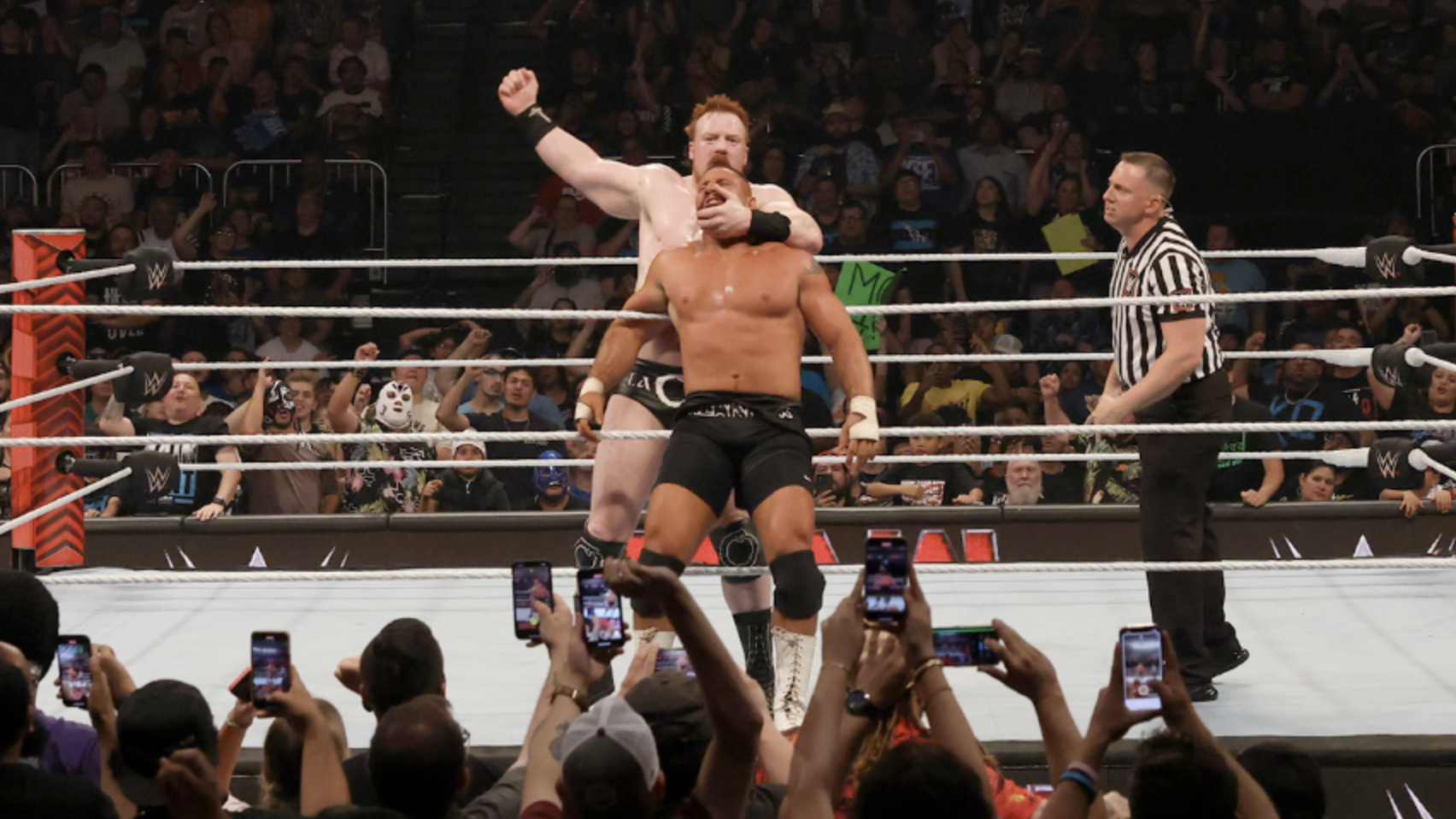
What is it that's so pleasing about hearing a rowdy wrestling crowd collectively count to 10? The old double digits punches in the corner spot is a classic, but so is the '10 Beats Of The Bodhran' routine Sheamus has popularised during his lengthy stint in WWE. Everyone sees it coming, and yet nobody can resist the urge to prove they can count by chanting along with each thumping strike.
This is actually something Sheamus initially used as a heel. The 10 beats were supposed to hammer (ahem) home his vile superiority over hapless foes. The spot was never designed knowing sold out audiences would look forward to it; it was meant to be something they dreaded as they helplessly looked on at their heroes being clubbed to dust.
Smartly, Sheamus turned something so evil to his advantage once he went babyface in 2011. Since then, even when playing the role of villain, he's embraced the singalong aspect of the sequence. It's become a more visceral version of the aforementioned turnbuckle punches. No Sheamus match feels complete without it.
Other Sheamer favourites include White Noise (effectively a lower Samoan Drop) and his Irish Curse back breaker. Both, like 10 beats, are signatures complementing his finishing Brogue Kick, and they rarely win matches. Unlike those though, the bodhran bashing doesn't lead to a near fall. Nah, it exclusively exists for the counting thing and to break someone's spirit mid-match.
Sheamus doesn't hold back either. He's managed to blend crowd interaction with visibly painful strikes. Match made in heaven - or hell, if you're the wrestler on the receiving end.
46. Mick Foley | Stump Piledriver
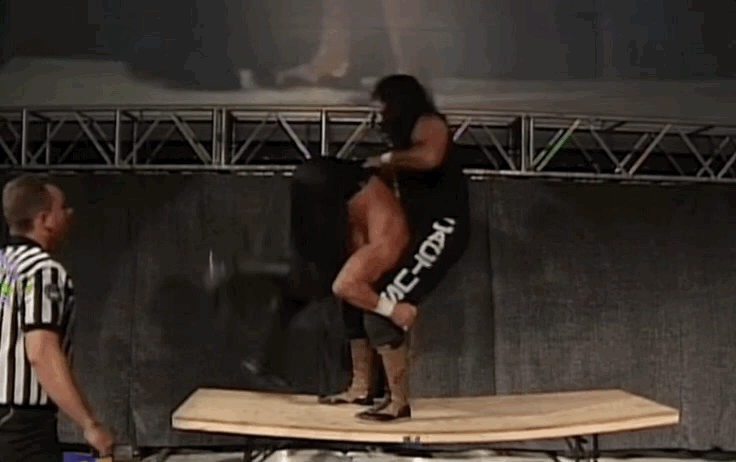
Not all piledrivers are created equal.
The Undertaker's Tombstone variant is a firm favourite of many fans watching from the 1990s onwards, whereas Jerry Lawler's classic style is burned into the memories of anyone who grew up watching the Memphis great do his thing long before that. Then, there's the stump/pulling one Mick Foley used to great effect whether he was himself, Mankind, Cactus Jack or Dude Love.
If you want to get really in-depth, then consider this: Mick performed the stump piledriver slightly differently when Mankind. There was an almost lazy or clumsy quality to it when he donned the mask (deliberately so). If that sounds super-weird, then check out his match vs. Shawn Michaels from late-1996 compared to how he'd hit it on Triple H when playing Cactus a few years later.
It's so subtle, but Mankind almost stumbled into the move rather than hitting it with precision. He'd haul at his foe's ring attire and use that to gain momentum. As Jack, he was much more likely to hoist them up by the waist like someone normally would when using the piledriver. That, fellow wrestling fans, is the kind of tiny attention to detail that made Foley one of the best to ever pull on a pair of boots.
The guy rewarded those who looked beyond the obvious.
Further, whilst someone like Lawler simply sat down to execute the move, Mick kicked his legs out from underneath to give the piledriver a more vicious snap. That, when teamed with the fact he was clawing and scratching at someone's tights/trunks, made broken necks seem like a given.
45. Hiroshi Tanahashi | Dragon Screw

A basic move is better than a spectacular move, provided it is executed at the ideal time for full dramatic effect. The best illustration of this principle is Hiroshi Tanahashi’s dragon screw leg whip.
Now, the move itself is excellent. Tanahashi executed it with a ferocious snap in his prime. The person on the receiving end did their bit, selling as if their knee ligaments had been shredded. At its best, the dragon screw was incredible; any fans of legit sports knows that the specific way in which the knee bends is often a season-ender of an injury. The dragon screw epitomised the core concept of suspension of disbelief.
Tanahashi was a genius who grasped the principle of the “when” as well as any wrestler ever. He executed the dragon screw in every single match, but, every single time, he inserted it when it made the most sense and when you least expected it, all at once. Whenever he’d convinced the crowd that he was done for, he’d bust out his reliable signature to alter the momentum of a match thought lost.
In one awesome tweak, at his most desperate, he once used two arms to clutch at Jay White’s leg and take him down.
Informing his work with a sense of pathos, post-prime Tana was better than most wrestlers operating at the peak of their powers.
44. Mr. Perfect | Perfectplex

Generally speaking, Curt Hennig was better known for selling than he was for hitting moves himself. The exception to that rule? His Perfectplex. It was a wonder of the biz once he started using it, and that remained true even when he was a heel in the WWF. People loved to hate Mr. Perfect, yes, but everyone high-fived their pals when Curt slapped on his finish.
The fisherman's-style suplex is nothing outlandish in modern terms. Watch any number of matches across majors like WWE or AEW and you'll definitely see a couple of similar moves. No-one arched their back and pulled opponents over with the stunning mix of grace and power that Hennig did though. His fisherman's was fittingly perfect.
Perfect.
Older WCW superfans will recall jaws hitting the floor when Curt performed the move on The Giant/Big Show/Paul Wight like he was Rey Mysterio. Hennig's technique was incredible, so much so that this particular Perfectplex earned a standing ovation from fans around ringside at Monday Nitro. Everyone was impressed by how flawlessly Hennig snapped into the move despite Wight's gargantuan physical size. That cannot have been an easy feat, but Perfect made it look like it was.
Any bridged suplex with a pinning combination relies on stillness post-impact. It wouldn't do, if a wrestler flopped over and collapsed instead of keeping the bridge strong mid-pin. Hennig understood that assignment, and he arched his back the same way every single time.
His 2-3 second pause before nailing the move also added to the anticipation of what was about to happen.
43. Barry Windham | Float Over Superplex
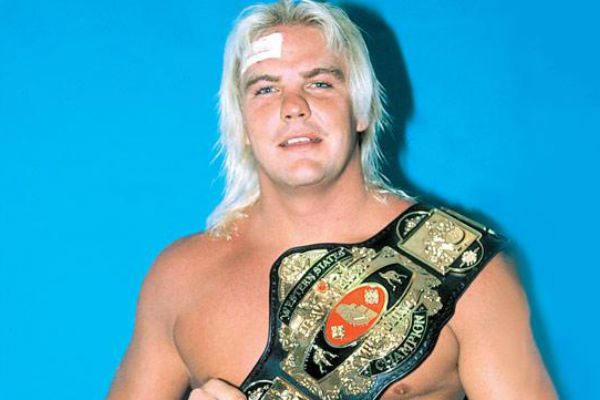
Watching Barry Windham's third run in the WWF between 1996-1998 was kinda sad. The ex-NWA and WCW stalwart was a pale shadow of the wrestler he'd been a decade or so prior. For proof, just look at the difference between Barry hitting a sweet float over superplex in the mid-90s compared to how he'd do it earlier in his career. There's footage on YouTube showing the differences between them.
Windham always got terrific height on his superplexes. He'd rarely bend forwards and lessen the visual. Instead, he'd pull his peers directly overhead and stand straight up to increase the distance both he and another worker tumbled before crashing to the mat. Then, in a quite cunning example of using natural momentum to one's advantage, Barry would wait until he'd bumped onto his shoulders/back to effortlessly glide over into a pin.
When he got it right, it was one of the best moves in wrestling history - Windham could be pinning his victim within one second of them taking his superplex, and that meant commentary teams could put over how switched on a wrestler he was. Inevitably, age and injuries would catch up with Baz and stop him from hitting the float over so fluidly from the mid-90s onwards.
In his pomp, the float over superplex ranked amongst wrestling's finest finishers. Barry's strength, height (those taking the move had a long trip to the canvas), and agility made it so special. Windham was someone who truly understood the art of the superplex. It wasn't a routine high spot for him, that's for sure.
42. Trish Stratus | Stratusfaction Bulldog
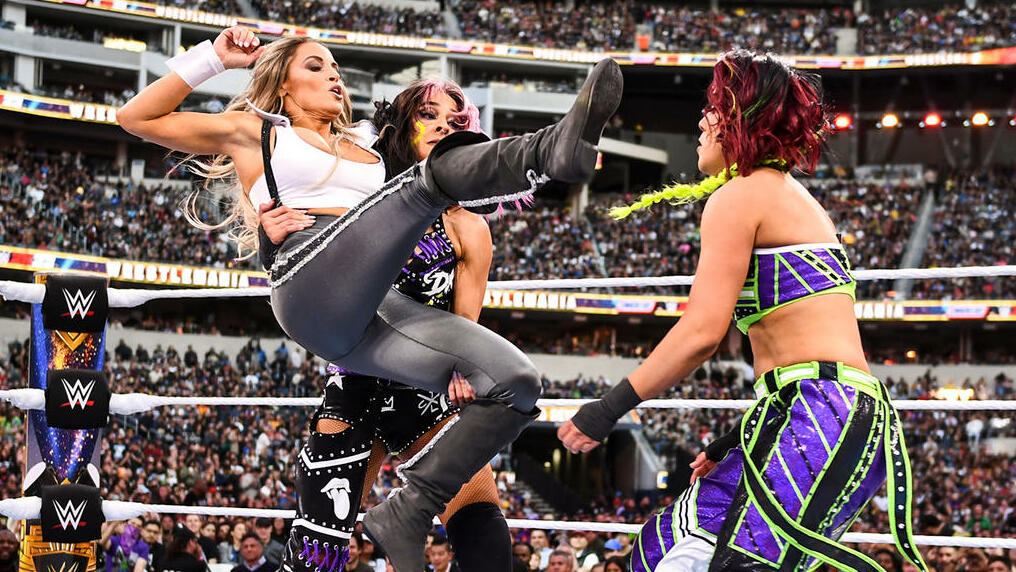
Credit where it's due: Trish Stratus knuckled down and refused to become mere eye candy as a "Diva". Yes, Trish knew looks played an important part in her career, but she yearned to be recognised as something more. Stratus successfully broke out and surprised many by becoming an accomplished in-ring star who (alongside Lita) made WWE history as one of the first female headliners ever.
She was one of the biggest stars on the roster for years, and Trish is still highly regarded whenever she dips a toe back into wrestling nowadays. A crucial component of her arsenal was the humble Stratusfaction bulldog. It was comprised of three distinct parts. One, a side headlock clutch and raised arm in the air from Stratus. Two, her springing off the ropes. Three, a satisfying front bump that led to wins more often than not.
One of the finest compliments someone could sling at the Stratusfaction bulldog is that it worked on anybody. Trish hit this on a few of the guys over the years too, and all of them sold it like they'd been levelled by a truck. Her leg strength was cited as one of the main reasons why. The way Trish would spring off the ropes? Smooth, and timeless.
Adding that springboard element into the sequence was an inspired decision by Stratus. It showed that she was creative between the ropes, and it turned an otherwise basic running bulldog into something unique to her matches. That's always a grand idea for any worker, regardless of weight class, gender or style.
Resist. The. Urge. To. End. By. Saying. Stratusfaction. Guaranteed.
Sorry!
41. Kevin Nash | Sidewalk Slam
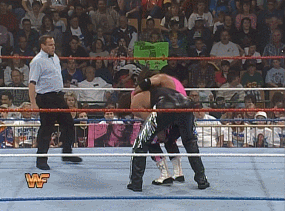
Jim Cornette's eyebrows would float somewhere near the clouds if he saw Kevin Nash here. Infamously, when teaching Glenn Jacobs/Kane how to be Diesel in 1996, Cornette remarked that Nash only had six moves. By his own admission, the nWo man relents that he didn't have vast range, but what he did he did well. Real well.
The Jackknife Powerbomb became his go to way to finish matches, but that meant he needed a few moves perfect for near falls. Before joining the WWF in 1993, Nash (as Vinnie Vegas over in WCW) started working a sidewalk slam into his bouts. It wasn't long until he was one of the best in the industry at landing it flush. Kev was always a big dude, so he had the right kind of size and strength to make sidewalks work for him.
By the time he reached the federation, the then-Diesel was carrying workers around with him for a second or two. Then, he'd spin into the slam movement to make it seem even more violent. This was clearly something both Bret Hart and Shawn Michaels agreed looked impressive - both took that move several times in matches vs. Nash. However, he could also use it on larger dudes like The Undertaker and Sycho Sid.
Remember all that muscle? Nash had it.
There was nothing lazy about Kevin's landing either. He wouldn't fall to his side and take the brunt of the bump on his hip. Nah, Nash pretty much performed a full on leg drop by kicking one of his feet into the air and bringing the other up at the last possible second.
40. Steve Austin | Stun Gun
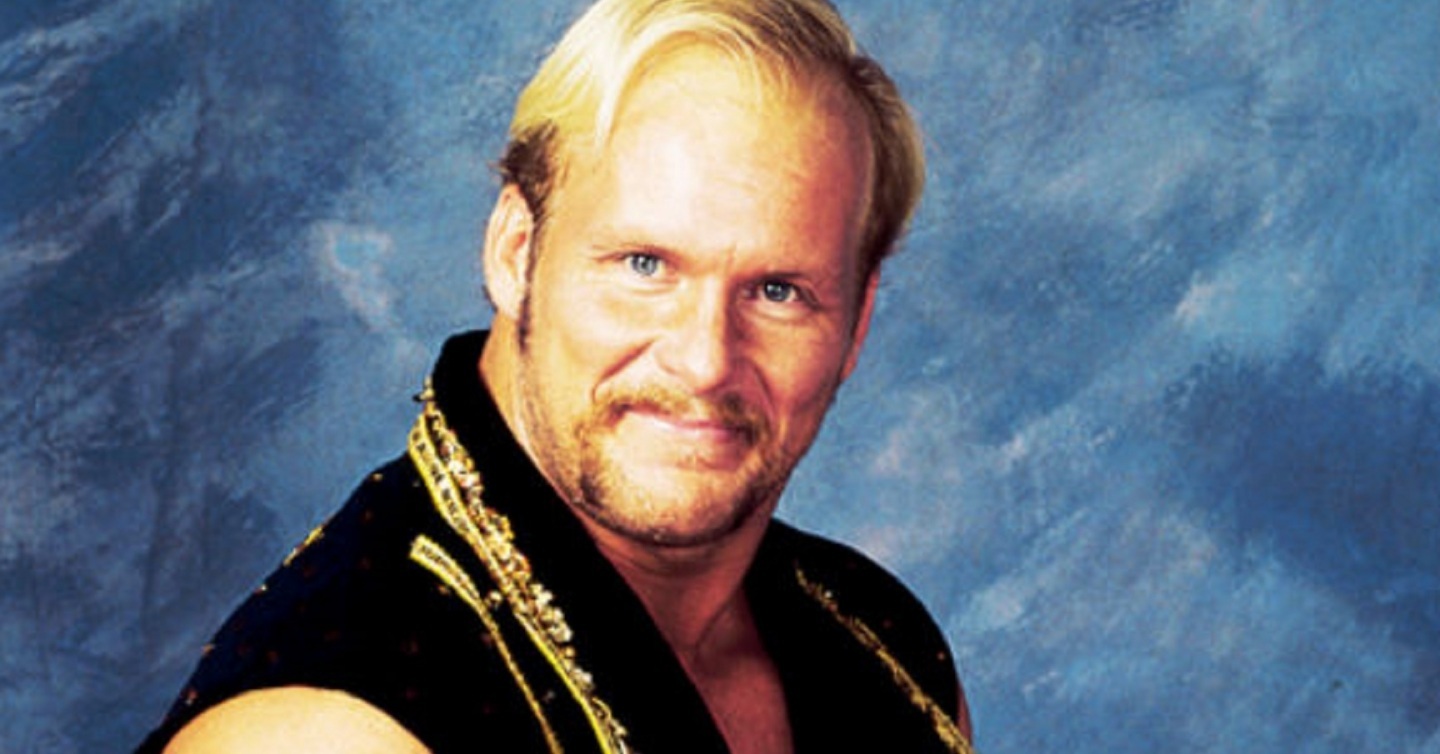
Steve Austin, inspired by Eddie Gilbert, used the Stun Gun in the days before he transformed the business as ‘Stone Cold’.
It was an awesome move; he’d lift a charging opponent up by the waist and, while still attached to them, drop them throat-first across the top rope. It was a great illustration of his persona as a precocious genius - the ring is itself a weapon, and Austin was intelligent enough to exploit it as such. The throat is such a vulnerable body part. It’s easy to become desensitised to the visual of a wrestler falling on their back. The Stun Gun therefore stood out. It was sold like a hanging by Arn Anderson in particular.
It was probably better as a signature counter than a finish, since the best versions required his opponent to make an error.
Austin abandoned it, mostly, because a move that looked so brutal was in fact brutal, if not executed correctly. It was too precise to get right 100% of the time, especially, as Austin pointed out on his old podcast, during the final phase of a long match when he was blown up or close to it.
39. FTR | Shatter Machine
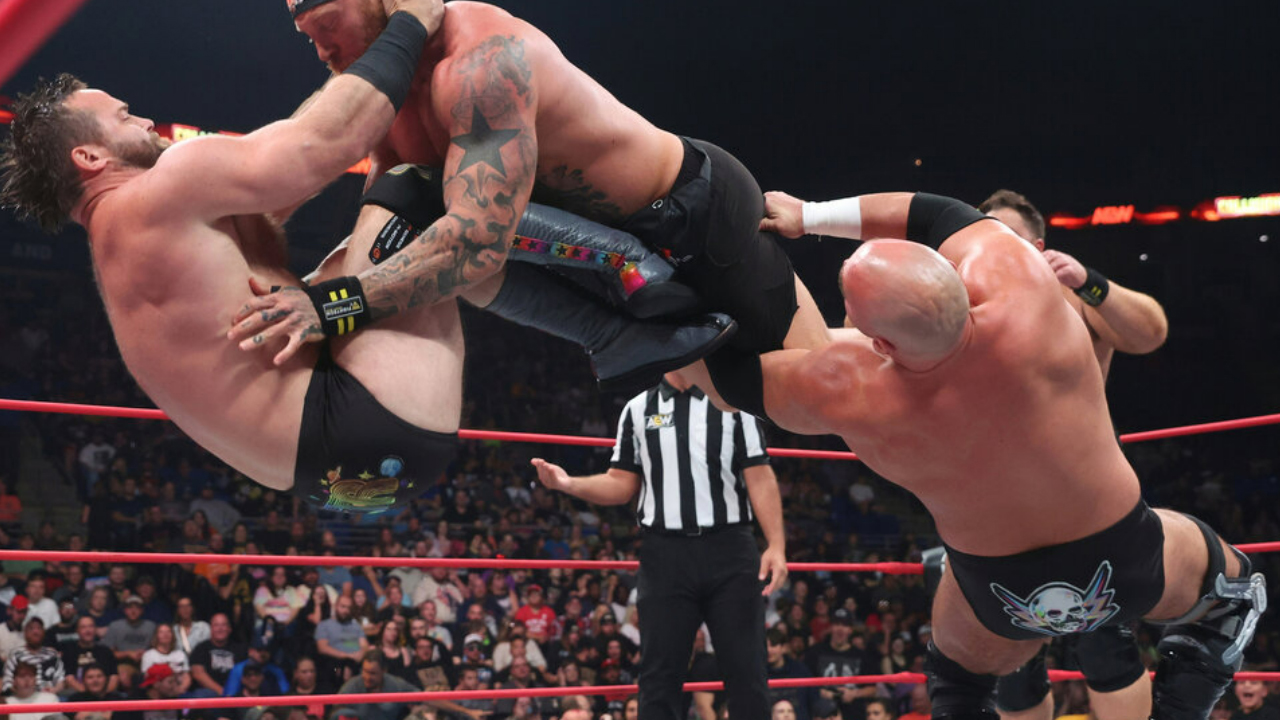
The Codebreaker, innovated by Naomichi Marufuji, was itself an excellent move. Driving both knees into the chest of his opponent, Marufuji (and later, Chris Jericho) did a stellar, creative and brutal-looking job of knocking the wind out of their opponent en route to making the cover.
It was modified and perfected by FTR.
Dax Harwood does the lifting, with a flapjack set-up, creating significantly more momentum behind the subsequent impact. It’s up to Cash Wheeler to drive his knees in, and his ever-present braces add to the wince-inducing, jaw-breaking effect.
The tweak takes an iconic move and makes it look even more awesome, but it’s also rich in logic. It’s essentially counter-proof. What is the recipient meant to do? They can’t cover their face, otherwise they risk a pair of broken wrists. They can’t poke Cash in the eye, either; it all happens too quickly, his face is obscured, and his entire body is shaped in such a jagged way that the only thing you can do is take it and like it.
So long as the guy’s partner isn’t there to block Dax, the recipient is absolutely 100% f*cked.
38. KENTA | Go To Sleep
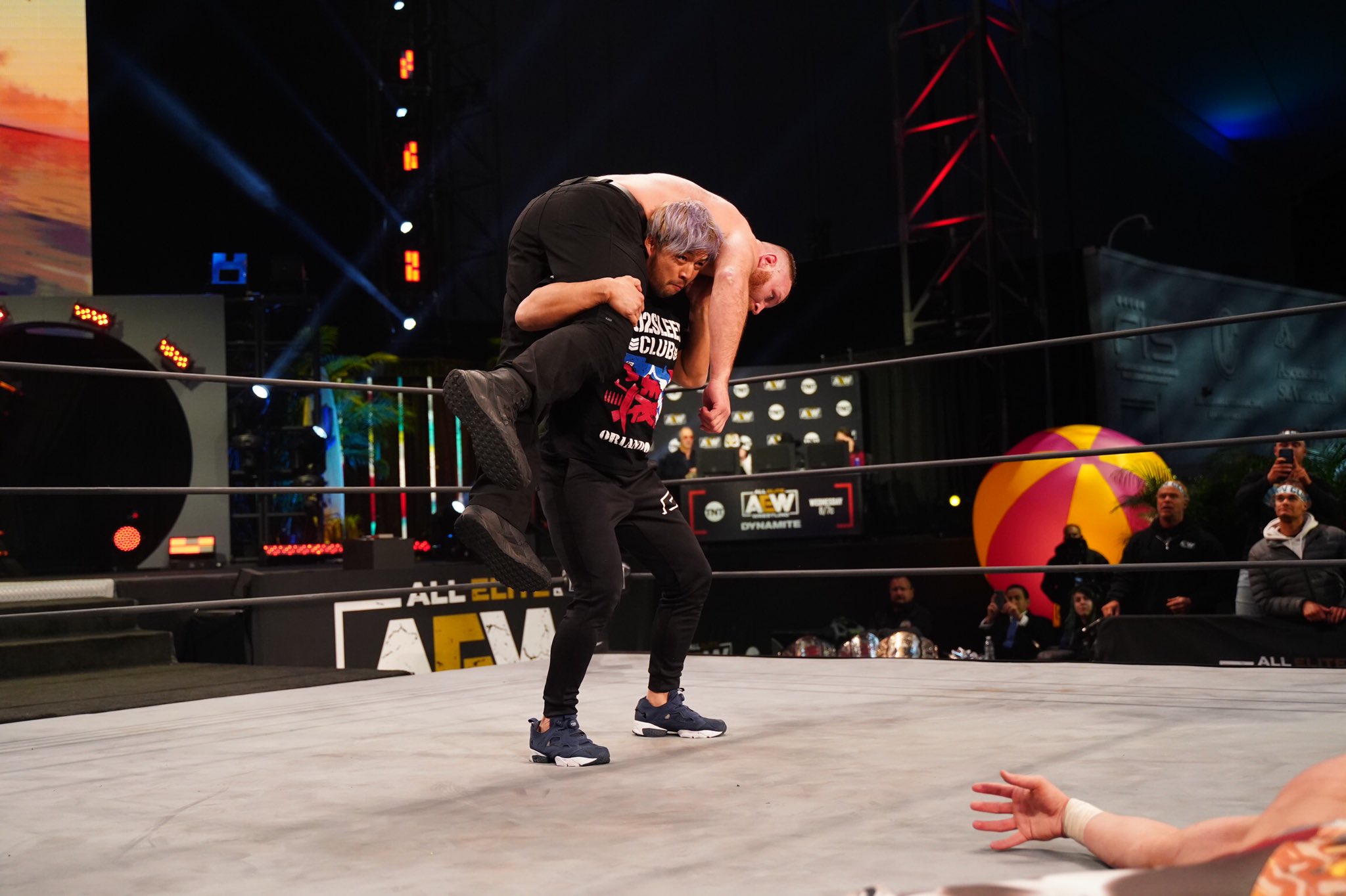
Alongside AJ Styles, KENTA is the most influential wrestler of the 21st century. His incredible Go To Sleep warrants inclusion here on merit, but it would be a disgrace, were none of his moves to feature here.
The move is a beauty from a sheer action perspective. KENTA lifted his opponents into a Death Valley Driver set-up, but, rather than drill their upper backs onto the mat, he instead connected with his knee flush in their face. He always struck it so cleanly, resulting in a killer ‘Platoon’-style sell.
The Go To Sleep is also superb as a way of conveying KENTA’s character.
A full-on troll during the latter period of his career, KENTA was always an abrasive, mischievous prick of a heel. His finish was an extension of that; his opponents must have been somewhat relieved, when they were hoisted upon his shoulders. What next was sure to suck, but at least I’m not eating yet another strike from the world’s preeminent specialist.
Then he kneed them right on the button, again.
37. Hardcore Holly | Alabama Slam
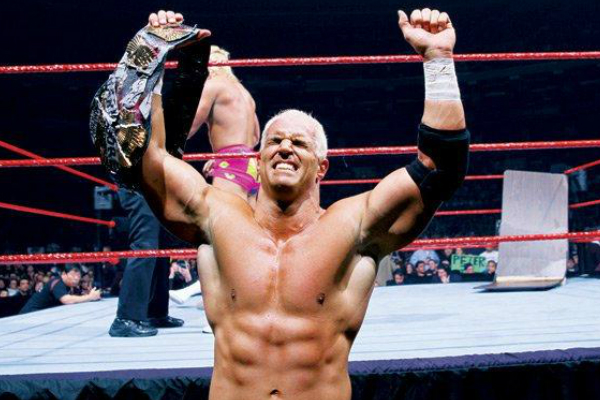
There’s a certain level of guilt associated with being a wrestling fan.
The industry itself is an unregulated circus that is definitionally unethical. Being a fan of it full stop is a bit shady before you pop at its more illicit thrills. Chair shots to the head should be banned - but there’s a reason the device was commonplace for so long, isn’t there?
Bob Holly was a mediocre pro wrestler who seemed to enjoy doling out punishment rather too much. Under the guise of legitimacy, of “making it look real”, Holly was a stiff old bastard in that ring. This, obviously, is not on.
However.
The Alabama Slam - a nauseating descent with a disturbing impact - was undeniably thrilling. An ostensible powerbomb without a protective gut-wrench set-up, there was such a nasty and reckless feel to it for a flat-back bump. It looked like a move that sucked to take - the rotation looked horrifying, and it seemed far easier for the recipient to flail than adequately protect themselves from the high risk of whiplash.
It’s a move widely feared within wrestling circles. Rob Van Dam is one of the many to have mentioned that there’s not much the recipient can do to break their momentum.
It’s still exciting. Sorry.
36. Bobby Eaton | Alabama Jam
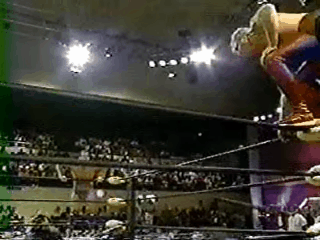
Wrestlers past warn future generations not to execute two particular moves: the flying headbutt, and the leg drop.
Hulk Hogan’s back is a grotesque mess, and he “merely” performed it from the ground. The impact is absorbed on the hips. Eventually, body parts get fused into body parts that should not be in such close proximity. Even the wrestlers who are perceived not to “try” are broken by the form in the end.
If you’re going to suffer for your art, best make it look artful - and Bobby Eaton’s Alabama Jam was a majestic top-rope leg drop.
Soaring through the air, Eaton’s landing looked impactful. It looked like he’d just caved his opponent’s face in.
In reality, at the exact moment of the supposed impact - Eaton, whose woodpecker of a worked punch, incidentally, could be included here - bends the leg into a rooftop shape, allowing him to miss their face entirely.
Not that you’d know, unless you slowed down the footage to a still.
35. Kurt Angle | Running Belly-To-Belly Suplex
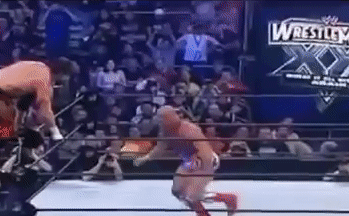
The complaint, among some, is that Kurt Angle lacked crowd psychology and was inelegant with his pacing. There’s some truth to this, but also, if anybody can believably get away with blitzing through their sh*t with minimal dramatic pauses, that person is an Olympic gold-tier athlete with a death wish.
But consider this, and picture yourself in the position.
You’re wrestling Kurt Angle, a lunatic with unprecedented stamina who also happens to be a genius at the actual fundamentals of wrestling. He is absurdly over-powered. There is nobody more driven, and, making matters all the more unfair, Angle’s ability to withstand pain is also supernatural. You finally, finally, get this guy down on the mat long enough to launch a risky, aerial attack, and guess what?
He can recover and sprint-climb up each turnbuckle and smash you to the mat with a perfectly executed belly-to-belly suplex before you can even leave your feet.
Angle was very, very good at escalating the drama, using his freakish athletic prowess to tell a story.
34. MJF | Headlock Takeover

MJF is too talented. He can do every move and, because his skin is almost translucent, he’s sometimes too keen to show them off. He can work Meltzer bait bangers to a ludicrously high standard - but MJF is better when he wrestles like MJF.
His use of the headlock takeover is marvellous.
It’s a lovely, timeless, slick move that should never have gone away, sure, but it’s the context with which MJF uses it that makes it mean something. It underscores that the MJF character, at his core, is full of it. He claims he’s a classic wrestler skilled in the pure art of it, and is in fact so technically astute that he can beat you with the basic throws that everybody knows. He’s simply that good at them. He doesn’t need any reckless bombs imported from New Japan.
He’s lying. He cheats before he executes the headlock takeover, which is little more than an empty brag from a desperate man hollow on the inside.
Everything in wrestling is about effective promotion, and that principle applies to the actual moves.
33. Taz | Tazmission
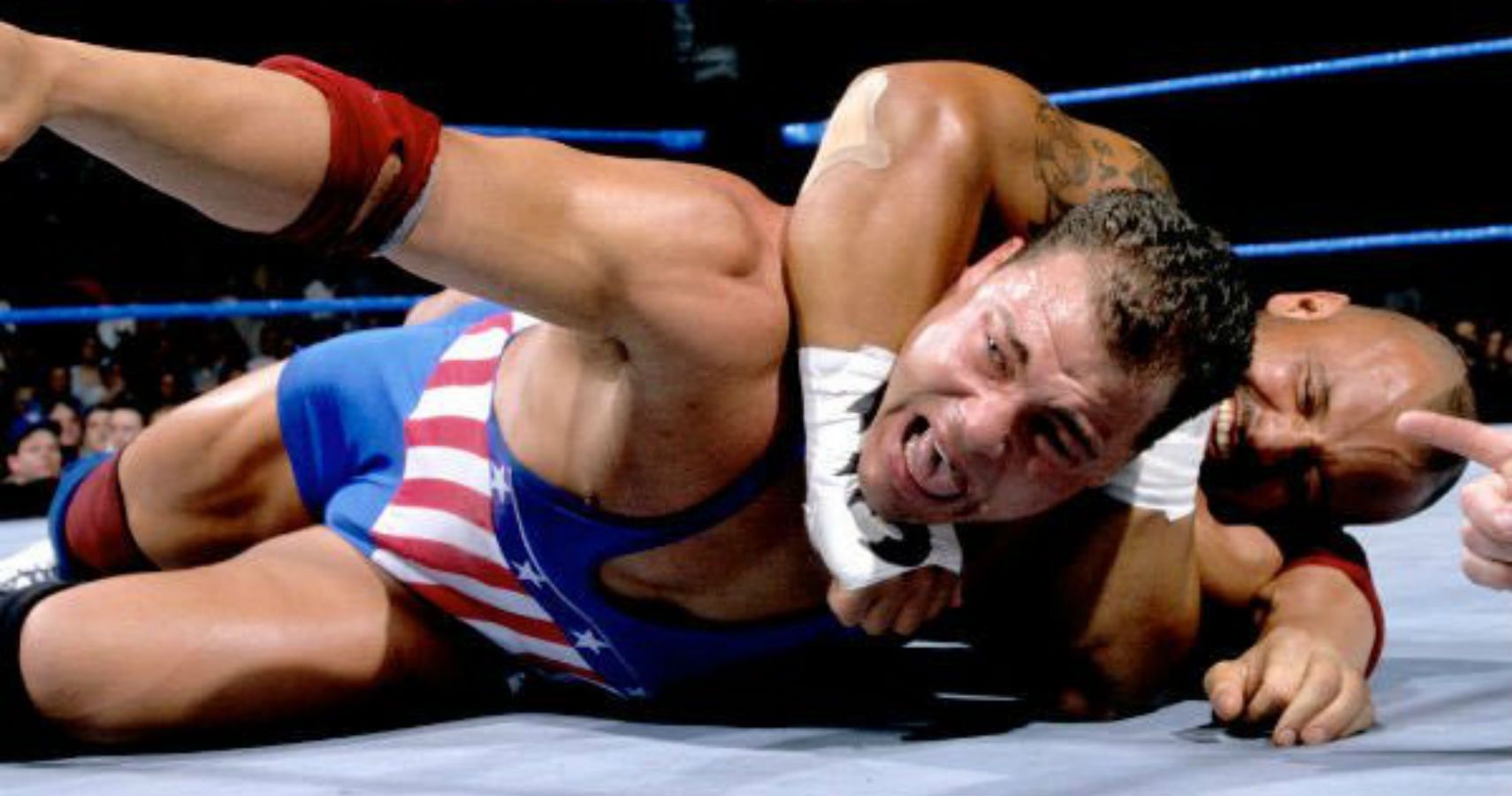
Taz boasted a superb array of suplexes, all of which could feature here.
His head-and-arm Taplex was probably the best variation - a vile-looking throw with a terrifying landing before he ventured up the top turnbuckle to perform a white knuckle avalanche modification - but all of them ruled. Taz could pop his hips like nobody else to make it seem as though he was in total control of any opponent, no matter their size. His MMA-inspired look, combined with his mastery of dangerous-looking angles, elevated his suplexes into video nasty territory.
His finish deserves high placement for its layered innovation.
The Tazmisson, or kata ha jime, was a judo choke with an imported real combat legitimacy to it. The move itself was unique and believable on its own terms, and, as with so much else in ECW, was rendered even cooler in contrast to the dreck offered up by the WWF and WCW at the time.
Taz also made his opponents tap out, rather than verbally submit - and is thus directly responsible for a transformative and permanent shift in the dramatic principles of the very sport.
That agonising hover of the hand over the canvas does not exist without Taz.
32. Cody Rhodes | Cross Rhodes
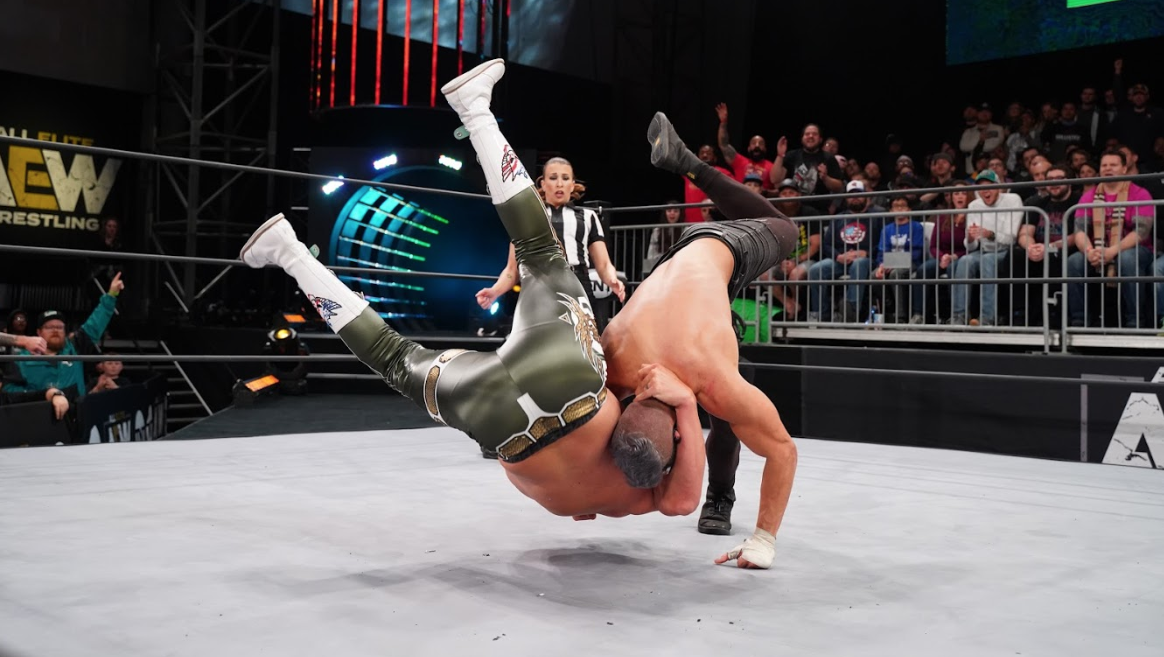
When Cody Rhodes voluntarily left WWE in 2016, few people expected what was to come.
He wasn’t an amazing wrestler and was out of fashion - but to use a cliché, if you’re never truly in fashion, you’re never truly out. Cody played the long game, mastered the art of self-promotion, learned how to get over in front of different audiences, and was intelligent enough to sense that the counter-fest advertised dream match epic would burn itself out.
The origins of Cody Rhodes: biggest babyface of the 21st century can, however, be traced back to WWE Battleground 2013.
Saving his storyline job, he drove Seth Rollins to the mat with his gorgeous Cross Rhodes finish. A creative DDT/cutter hybrid, the best bumps for which look like the recipient has just suffered a stinger, the set-up allows Cody to appeal to the audience with a fiery babyface roar.
The emotion coursing through him on the best night of his first WWE run was incandescent - his mouth looked bigger than his entire head - was beyond stirring.
31. The Rock | The People’s Elbow
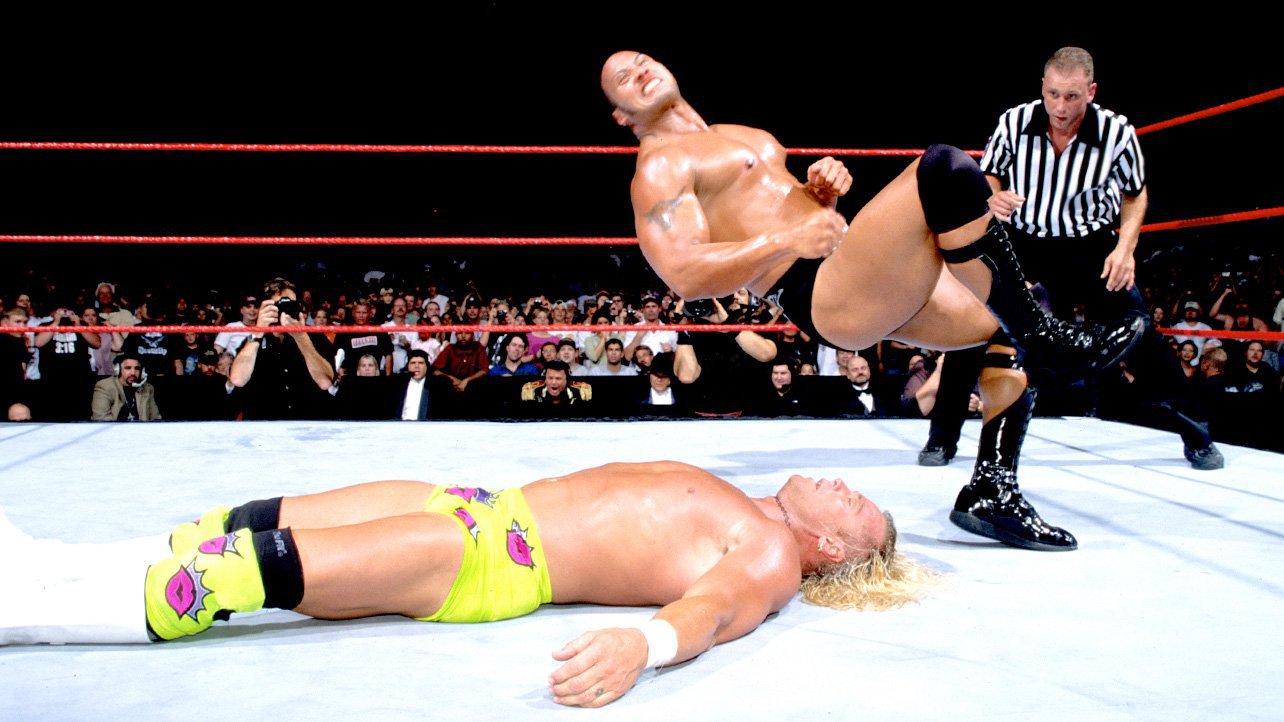
The Rock’s People’s Elbow is, of course, utterly ridiculous.
The move illustrates the truest maxim in all of wrestling. Whatever works, works. Stars are stars irrespective of what they do, and wrestling is a star-driven industry. It’s not about making the people believe, or even telling the best stories: if you effectively promote a charismatic mega-star, you win.
The Rock stretched this premise with the glee of Stu Hart. The move comes agonisingly close to pure, insulting parody - but the sheer, bold arrogance of it is what made the Rock the Rock. An utterly extraneous rope run as a non-set-up to a very basic elbow drop: it’s dumb theatre. The dumbest.
But that inhalation of air, elbow pad removal, the cross of the arms - it all exists to illustrate that the Rock could get away with anything and you loved him for it. Before he got gotten-to, he was the coolest man alive.
It teeters on the cliff’s edge and only stops falling because the Rock was an unbelievable specimen.
Driving his elbow flush on the chest of his opponent would have absolutely killed.
30. Samoa Joe | Uranage

Samoa Joe is one of the coolest wrestlers of all-time.
He simply radiates it. He makes a pro wrestling entrance feel like a boxing ring walk. His facial expressions are terrifying, but he’s savvy enough to play it cool and aloof before turning it on; that way, the fans know that his opponent is in the deepest of sh*t. Strutting like the king of this whole thing, his infamous walk-away spot defines his essence - but he’s also able to convey his elite-tier wrestling persona through his actions as well as his body language.
His uranage requires something in the way of contrivance - you’d think a halfway intelligent wrestler would by this point have learned not to attack Joe while he’s stationed in the corner - but it’s so awesome that, really, who cares?
The impact is fist-pumping “hell yeah” stuff, but it’s the sheer disdain with which he throws his opponents down to hell that makes the move. The idea of punishing a fool for even trying with his contempt-loaded body language is quintessentially Joe.
29. Trevor Lee | Cave In
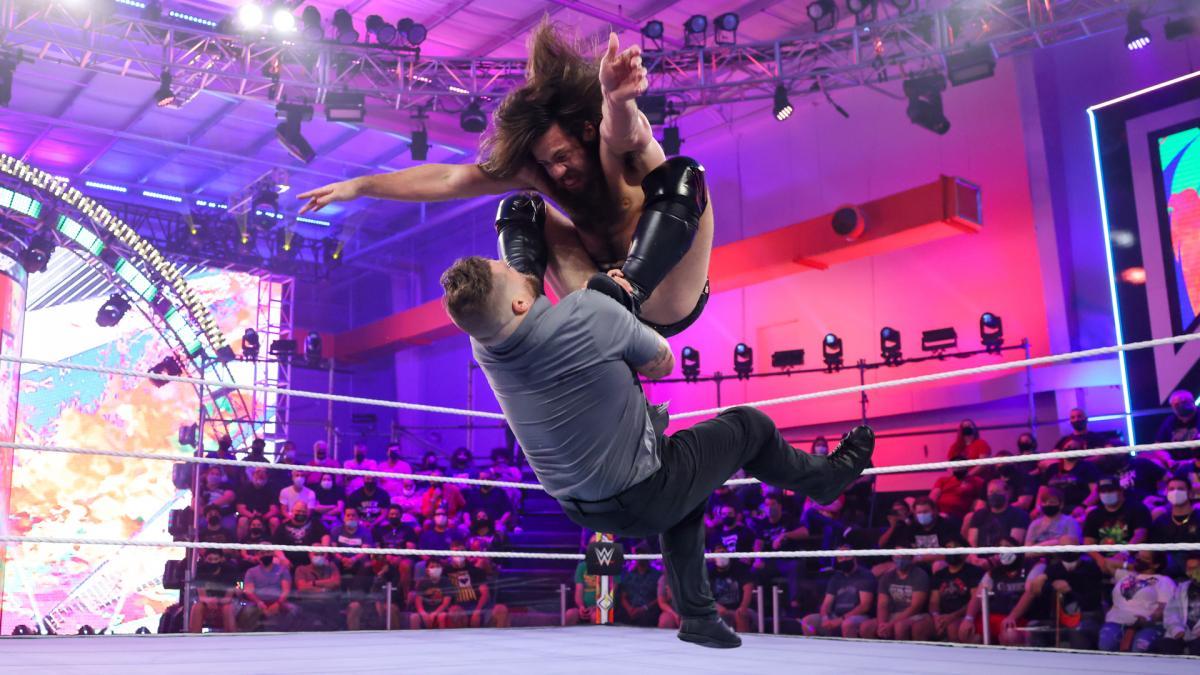
The Cave In is an extraordinary athletic flex and creative strike.
Trevor Lee, with an astonishing vertical leap, jumps several feet in the air and drives both soles down into the chest of his opponent - who, completing the trick, goes up just before the flat-back. A unique finisher with an awesome and dynamic impact, it’s also reflective of a character who, inexplicably, hasn’t had a fun episodic TV run in years.
Trevor Lee is a booker’s dream.
He’s piss-funny as a heel and as solid as hands go. His finish works when he’s playing this role, since he’s a cowardly stooge with a deceptive level of skill. In that context, the Cave In is a tremendous smash and grab.
As a babyface, Trevor Lee with his (knowing) dimwit charm is massively endearing: the Cave In doubles as the move that he can only hit once he thinks he’s beaten and the adrenaline of defiance courses through his body.
Intersecting the spectacular and the disgusting, the Cave In doesn’t look too clean either, conveying a nastiness or sense of struggle, depending on the situation.
28. Hangman Page | Buckshot Lariat
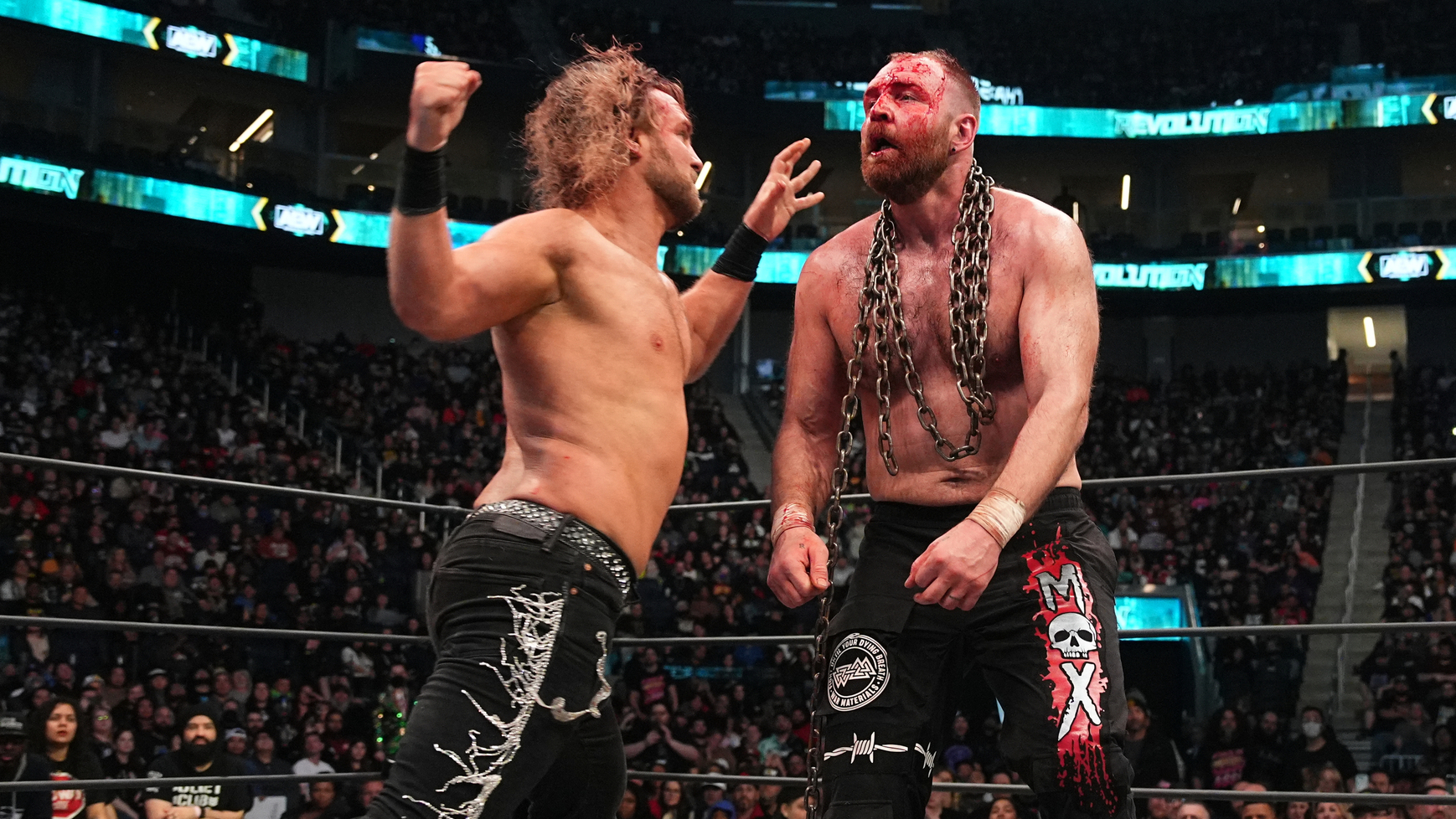
The Buckshot Lariat is not a perfect move because, you could argue, the front-flip set-up is a bit wasteful. It looks awesome, but if you think about it too much, Hangman Page does rather halt his own momentum before connecting with the lariat. Sometimes.
When he hits it perfectly, the momentum does carry him forward into a jaw-rocker of a blow. Other times, he needs a small moment to get his bearings, which undermines things very slightly. (The impact is bruising enough, thankfully).
While he’d be better off simply sprinting, it’s better to receive the Buckshot as pure wrestling theatre.
Page is a phenomenal wrestler, a future all-timer working in his prime, so the not immaculate execution isn’t important. When he’s deep in that finishing stretch, there’s a strong chance that he’s in the process of crafting something transcendent. He can generate a pop purely by hopping onto the apron and slowly gripping the top rope with his hands.
Wrestling is as much about making the crowd make noise as it is making it look like it hurts - and Hangman’s now-iconic finish intersects those two principles beautifully.
27. Vader | Moonsault
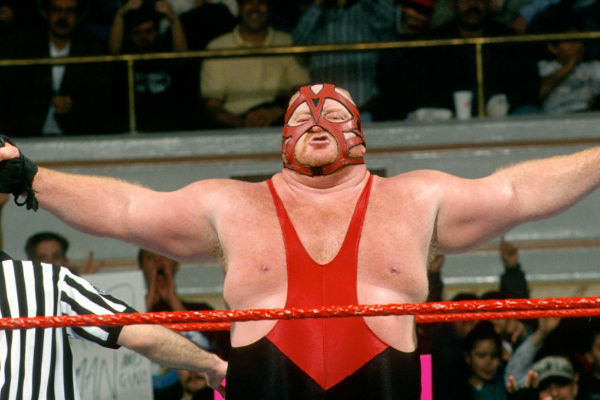
Vader might still be the best working big man ever.
He didn’t need to hit the moonsault. Watching him cauliflower a dude’s ears with those bear paw strikes was painful to watch. He was the wrestler to best capture the feeling of being fenced in with a wild, magnificent beast. You could only hope he got bored before ripping you to shreds.
The moonsault was a ridiculous flex, in that the risk-taking element was all but pointless - but at the same time, the momentum and force behind a flying wall of mass was so immense that it also made perfect, horrifying sense. Vader didn’t need to do it - but he was such a phenomenal piece of work as a heel that he enjoyed it.
It wasn’t the most majestic, clean arc, but the awkwardness put it all the way over. He was ungainly up there, and it never seemed like he was going to complete the full rotation, but it had the look and effect of an avalanche. It looks like it’s never going to happen. And then it does, and then you’re dead.
With no exaggeration, only until you saw the guy survive with your own eyes, it was legitimately hard to watch Vader’s moonsault without worrying about the recipient’s innards exploding out of his a**ehole.
26. Jon Moxley | Death Rider
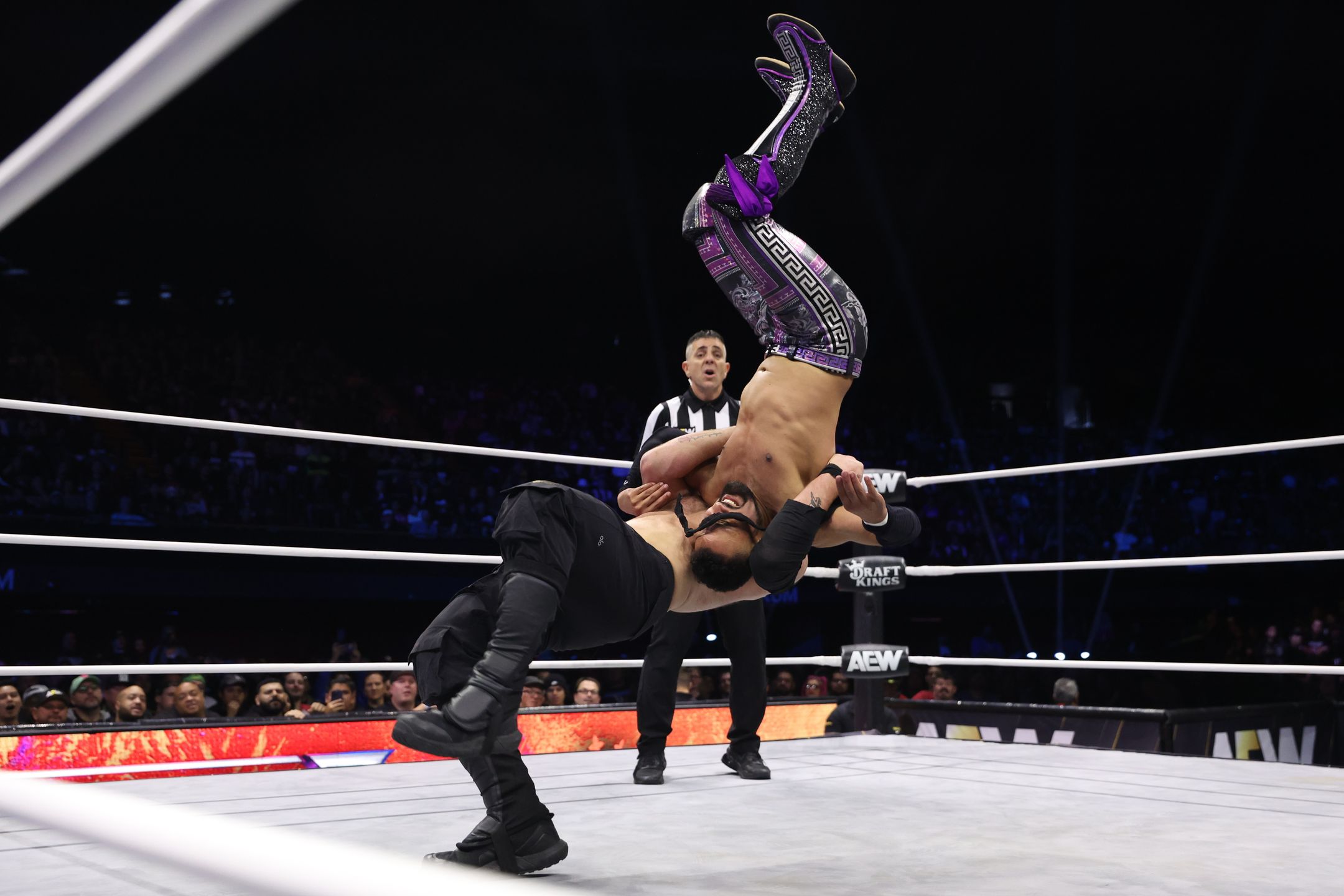
An intelligent worker will always exploit context to their advantage. Few were as clever as Jon Moxley upon exiting WWE in 2019.
Mox, after his infamous tirade on Chris Jericho’s podcast, killed the idea of Dean Ambrose. He was humiliated and depressed by what had become of the character, and vowed to reinvent himself.
The Death Rider (or Paradigm Shift) was, through Mox’s expert self-promotion, a transgressive move all over again. Beyond WWE, wrestlers dropped one another on their heads all the time. The difference is that Mox put some heft and drive behind his underhook DDT, something that went beyond the impressive physical commitment.
Reborn as a hard bastard in 2019, Mox felt different and used his dire recent form to his advantage. Other, lesser wrestlers have tried their hand at the same bit and failed. “They wouldn’t let me be in that other place!” is easy hack material, but Mox was brilliant enough to actually play with the contrast. When he said he was going to dump guys on their head, it was as if he was picturing everybody who tried to make him look stupid when hoisting them up.
Ambrose was a joke whose threats of violence were laughable; Mox was the real deal whose delivery of violence actually felt dangerous.
25. Kenny Omega | Snap Dragon
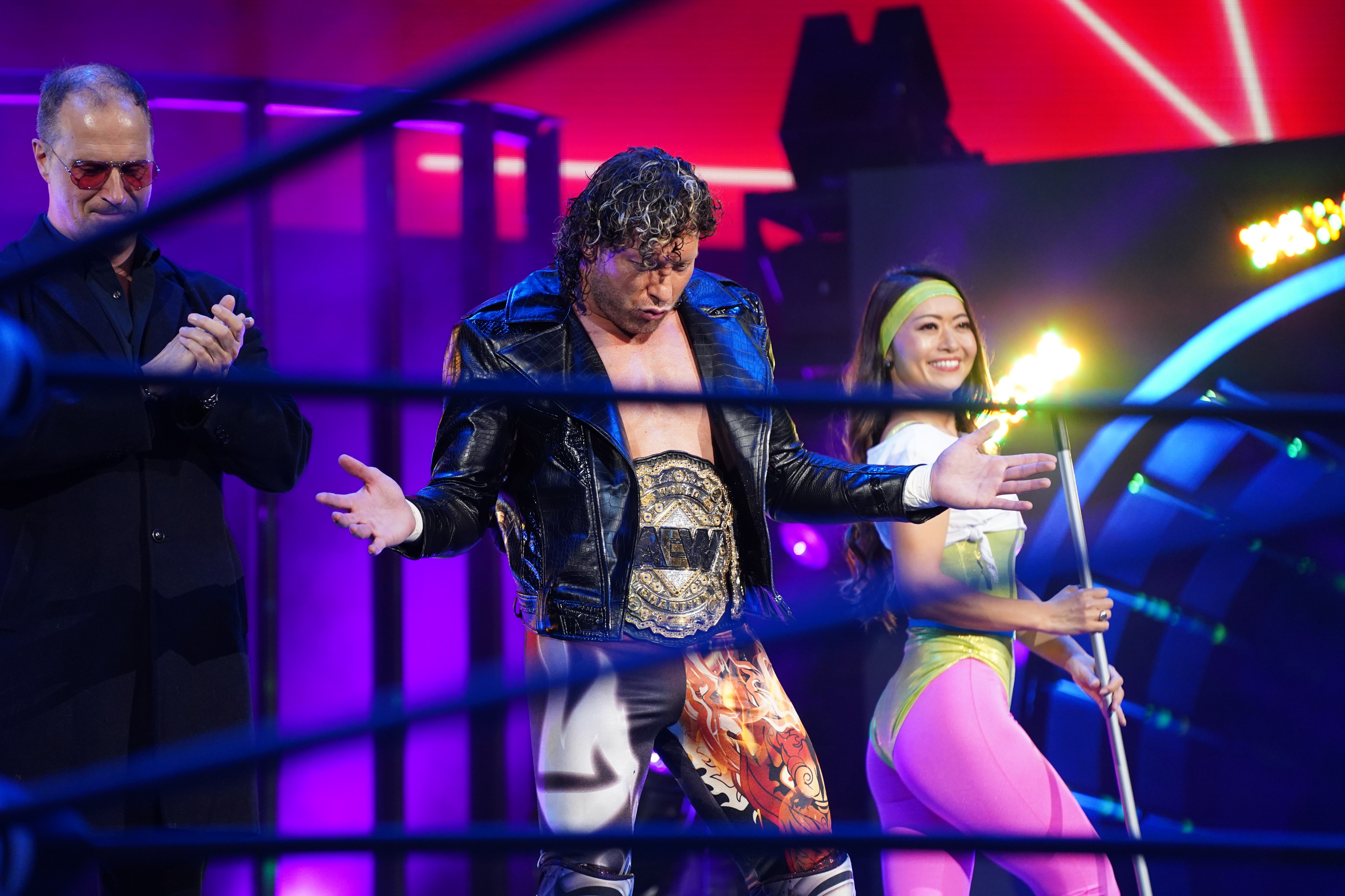
You know what doesn’t make a great deal of sense, when you think about it?
The dead-lift set-up.
It’s an impressive feat of strength, yes, which often works on a pure dramatic effect basis - but the mere existence of the dead-lift reveals that wrestlers happily “go up” for everything else. The dead-lift almost always generates a rising crescendo of noise, which is why it (and indeed most things) prevails - but it’s flawed.
What isn’t flawed, and what underscores his genius, is Kenny Omega’s anti-dead-lift move: the snap dragon suplex.
It works as an excellent pacing device. When Omega hooks his arms underneath the shoulder blades, and drives his opponents to the mat with light-speed quickness, it signals that the frisson is about to explode. It’s a great transition, one of many, into his V-Trigger. The flow of his matches is electrifying; the snap dragon is a mechanism with which he enters his trademark, brain-melting feeling of overdrive.
It also just looks devastating, resulting in an awesome bump with such momentum behind it that the recipient lands on their tiptoes at almost the exact same time their heads crack against the mat.
24. Faarooq | Dominator
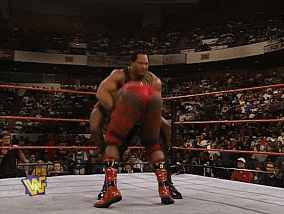
Ron ‘Faarooq’ Simmons probably won’t be remembered as a legend of the business.
He was important historically, and a huge inspiration, which is more important than boasting a catalogue of great matches, and he was a very good, intimidating promo before he was reduced to a catchphrase - but he wasn’t a headliner for long.
This isn’t an attempt at a mean-spirited burial, but a ham-fisted way of articulating that, sometimes, a move is so fundamentally awesome that it endures despite an inability to recall quite when it happened.
The Dominator was one such move.
There’s a nasty, scary quality to it. A wrestler doesn’t usually take a move from that position. The disorienting descent is probably more unbearable than the impact, because who knows where you might end up?
Your stomach and flush on the kneecaps, if you’re lucky, but for his part, Faaroow never seemed to care. He executed it with a magnificent disdain, as if his opponent was a rolled-up carpet he was tired of carrying up a flight of stairs.
An aptly named (and quite literal) throw, the Dominator ruled as much as it looked like it must have sucked to take.
23. Mike Awesome | Awesome Bomb To The Floor
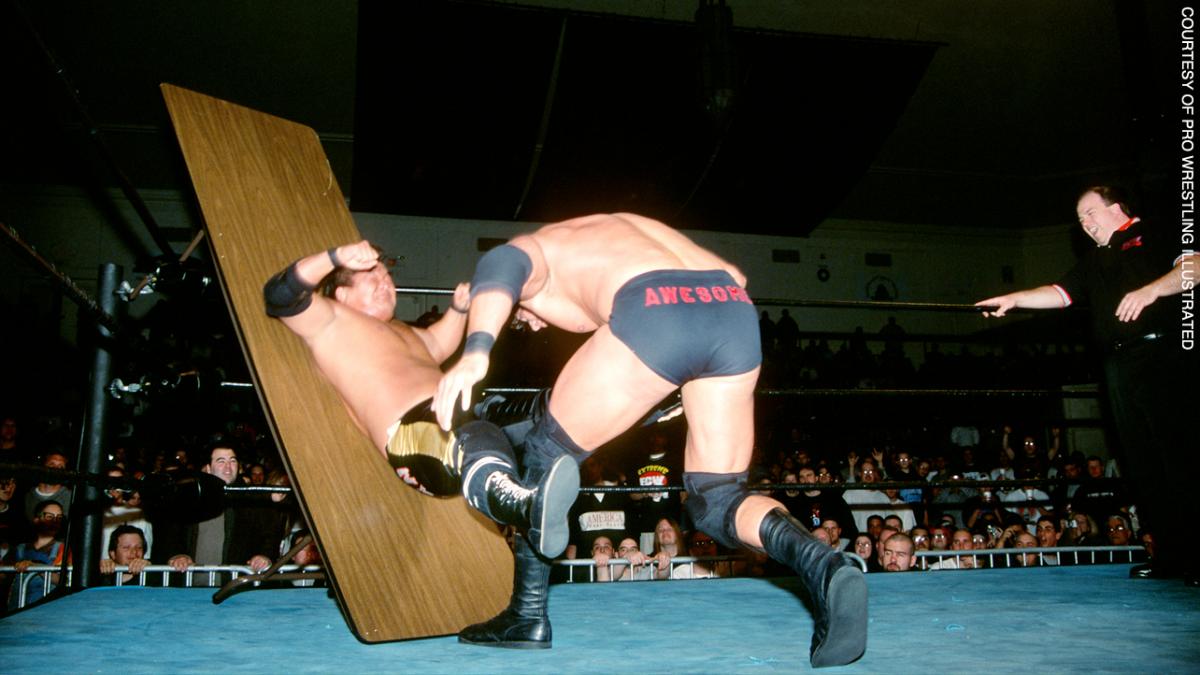
Mike Awesome ruled so f*cking much, man.
He was at once a man out of time and a timeless badass. He rocked up to the U.S. wrestling scene, when nu-metal was king, with a mullet. ‘Awesome’ wasn’t even in the vernacular; that word was no longer kewl. He looked at least a decade out of date, and yet, for the most brief and spectacular time, he was the coolest.
A Half-Life-loving metalhead, Awesome’s wrestling psychology was actually closer to Doom. He didn’t crouch and strategise. He ripped and teared until it was done. His gloriously fun matches were non-stop violence, and much like Doomguy, his range of weaponry was awesome.
He relied heavily on the Powerbomb, and used several variations of his Awesome variation of it. Furthering the analogy, his Awesome Bomb to the floor was equivalent to the BFG: a super-devastating thrill to watch him fire off.
Invariably detonated through a table, the Awesome Bomb To The Floor blew up the entire screen with flying shrapnel, and in added, glorious visual effect, the brave, splayed soul who took it would often find their head trapped underneath a guardrail because the force of the move was so seismic.
22. Becky Lynch | Disarm Her
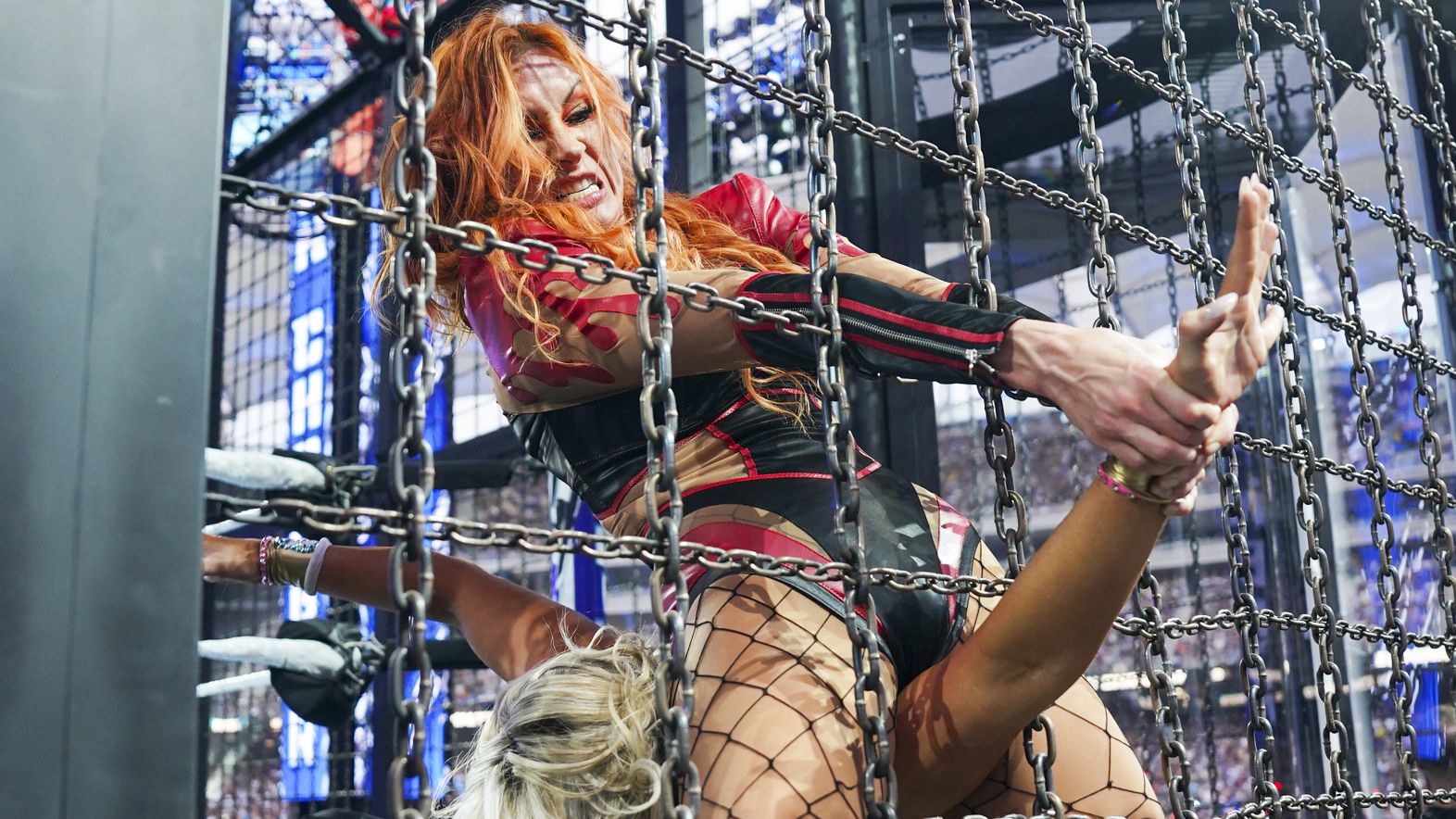
Becky Lynch’s Disarm Her is a rare, logical-by-wrestling-standards finisher.
She sits on her opponent’s back and wrenches back on their arm. It’s difficult to reverse, or at least it looks that way. Her opponent can do nothing with their legs, other than flail, and their other arm can’t bend far enough in the natural direction for a counter, either.
She can achieve it via multiple set-ups, the best of which is when she punishes a wrestler for kicking out. Lynch is a very intelligent pro wrestler; it’s fitting that she’d use a finisher that doubles as a trap, a chess move.
The actual execution of the move is good enough, but it goes beyond that. Becky is clearly visible throughout. She has a great, expressive face - so much so that even when Nia Jax concussed her, she still carved an expression that allowed her to get all the way over as The Man - and her fired-up facial, in addition to rallying the fans behind her, is effective in obscuring that she isn’t actually attempt to dislocate anybody’s shoulder.
The application of the hold isn’t perfect, nor is it John Cena level bad, but her face fills in the blank.
21. Brody King | Gonzo Bomb
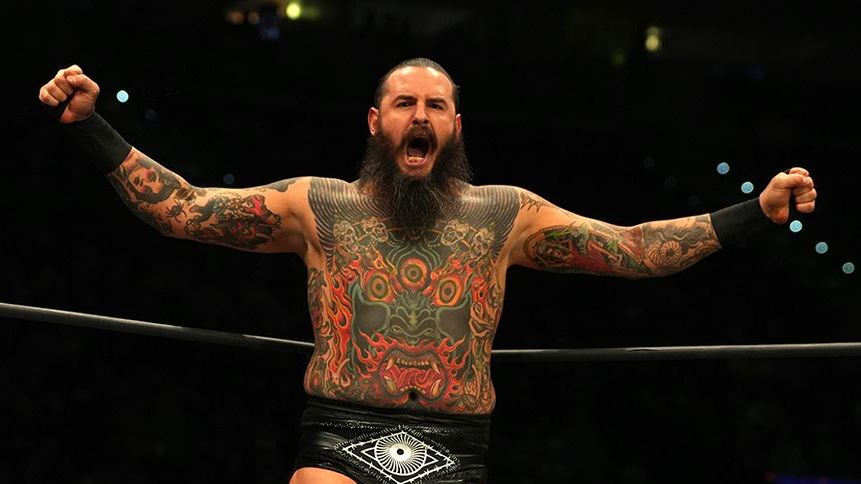
Every time Brody King hits his Gonzo Bomb piledriver, it looks like he’s injured somebody. It looks like he has done nothing to protect them as their head bounces, horrifically, against the canvas.
Brody King has never injured anybody with his Gonzo Bomb piledriver.
It’s a stunning move in and of itself. King is one of those wrestlers who can do anything and make it look brutal. His awesome size helps, as does his aura and look, but it’s more than that. He’s actually incredibly skilled, which his late entrance into the game and wild man persona often obscures.
What’s especially impressive about his Gonzo Bomb is that he’s so assured with it. He doesn’t feign dramatic effect as his opponent positions themselves to take it: it’s a gut-wrench, dominator set-up, onto the top of your head you go, pal. It feels more reckless without actually being dangerous.
The manner in which his opponents take it adds to the oomph, the wince: he holds them in half so much that the smaller guys, like Darby Allin, practically touch their head with their toes.
20. Andrade | Spinning Back Elbow
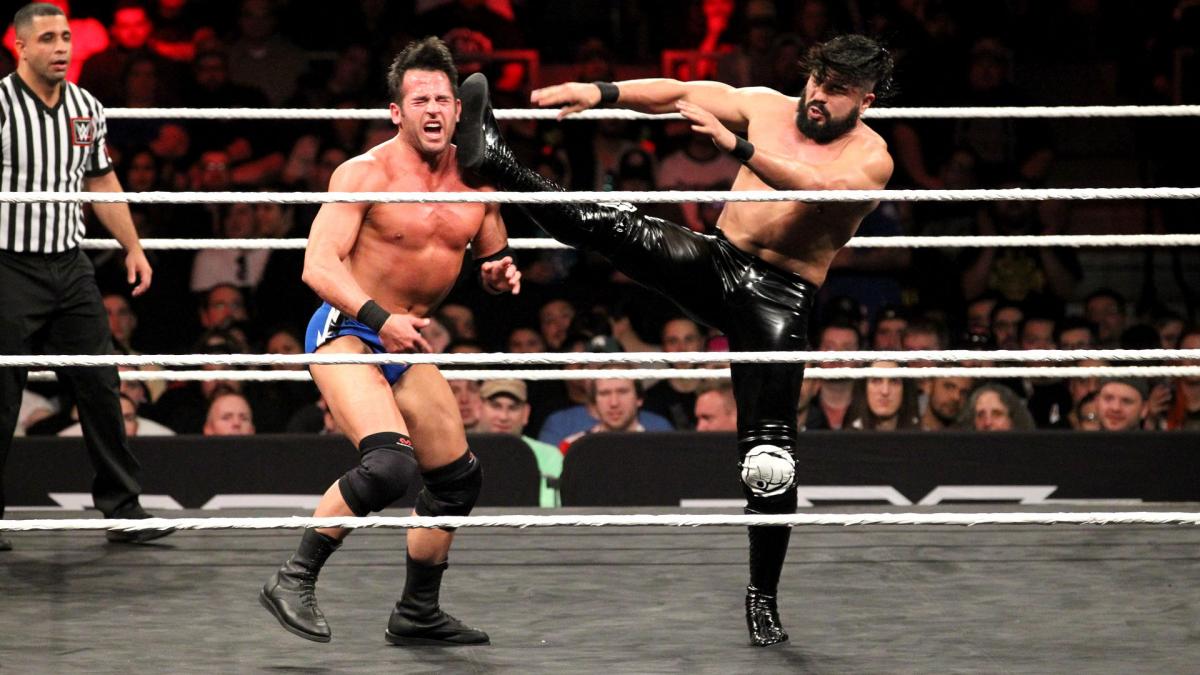
Andrade might not ever put it together.
Handsome, a great worker, a wrestler who has headlined to awesome effect in the past - albeit it several years ago in NXT - Andrade, after his obligatory Vince McMahon era main roster failure, which doesn’t count, has now failed to grab the ball in AEW and an in Paul Levesque’s WWE. Neither are perfect, but in both promotions, a wrestler tends to get rewarded for consistently superb output.
Andrade is a bit of an enigma, though it’s possible that he simply doesn’t have the intangibles (nor, per various reports, the attitude).
Even those who don’t rate him all that highly wonder aloud why he isn’t a far bigger star whenever he executes his sensational spinning back elbow strike.
Well, a few seconds pass by before they can think straight, The initial reaction to the strike isn’t a thought but rather an impulse feeling of awe and fear. His movement is beautiful, the deception effective every time, and the execution is gruesome. It looks like a horrific concussion, but of course it isn’t: it’s a masterpiece of footwork.
The lunge with which Andrade steps into the move is breathtaking, a martial arts chess move that looks beyond deadly.
19. The Undertaker | The Last Ride
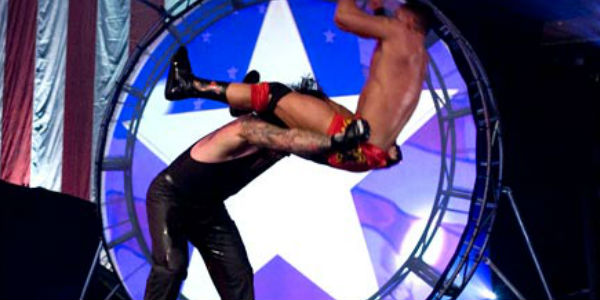
Born out of necessity during a WWE piledriver ban that included the Tombstone, the timing of a company rule change couldn’t have suited The Undertaker better.
The Last Ride fit ‘The American Bad Ass’ like a hand in a fingerless leather glove on the handle of a beautiful Titan bike or whatever it was he was into at the time. ‘The Deadman’ had been known not just for a “methodical” pace but for theatricality in how he buried the lost souls that came his way. By 2000, The Undertaker was (paraphrasing one of his future entrance themes), a bad ass kicking assholes’ asses. And The Last Ride planted assholes’ asses into canvases with the most force WWE had ever seen.
An elevated powerbomb, the move saw hapless victims dropped from heigher than usual thanks to a pre-ride wedgie ‘Booger Red’ served them before they hit the deck. It looked incredible, and after a decade of destruction, provided his former finisher with a welcome rest before restrictions on it were eventually lifted.
18. Rey Mysterio | 619
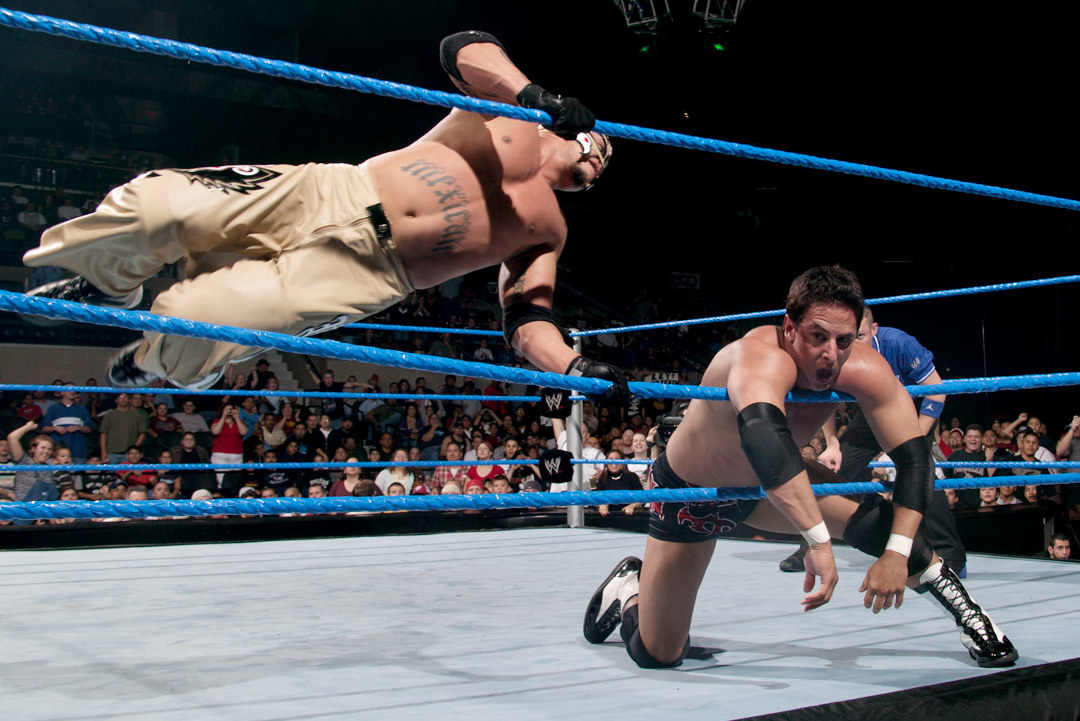
Rey Mysterio's intoxicating old 'more rotations than your average Olympic gold winning gymnast' hurricanranas and arm drags helped him catch fire during the WCW days. The WWE legend is still remarkably flexible considering all of his injuries, but he won't be seen spinning around peers like crazy these days. Today, Mysterio has to pick his spots to go lucha. Quite literally.
The 619 is timeless. It could be performed fairly gracefully even if Rey's knees turned to dust and he had hips like The Great Khali. That's one of the best things about Mysterio's finish, to be honest. Unlike his old West Coast Pop, which needed the wrestler taking it to flip over suddenly hurricanrana style, the 619 works on every size and shape. That, dear fellow fans, is the sure sign of a workable, long-term wrestling move.
619 is as easy to use on Big Show as it would be on Hornswoggle.
Fans know the drill as soon as Rey whips his next victim into the ropes and they conveniently land throat first across the middle strand. Seizing the moment, Mysterio runs across the ring, bounces off the ropes himself, then uses his momentum to lean into a swing that sends shins/feet thumping into someone's face. It looks unreal when he gets some speed behind the spring.
The 619 used to feed into the 'West Coast Pop'. Not these days. Now, that double leg strike is enough to get the job done for Rey-Rey in most matches he hits it. Simplicity is typically a chef's kiss endorsement when seeking out moves with the most longevity.
17. Dynamite Kid | Diving Knee Drop
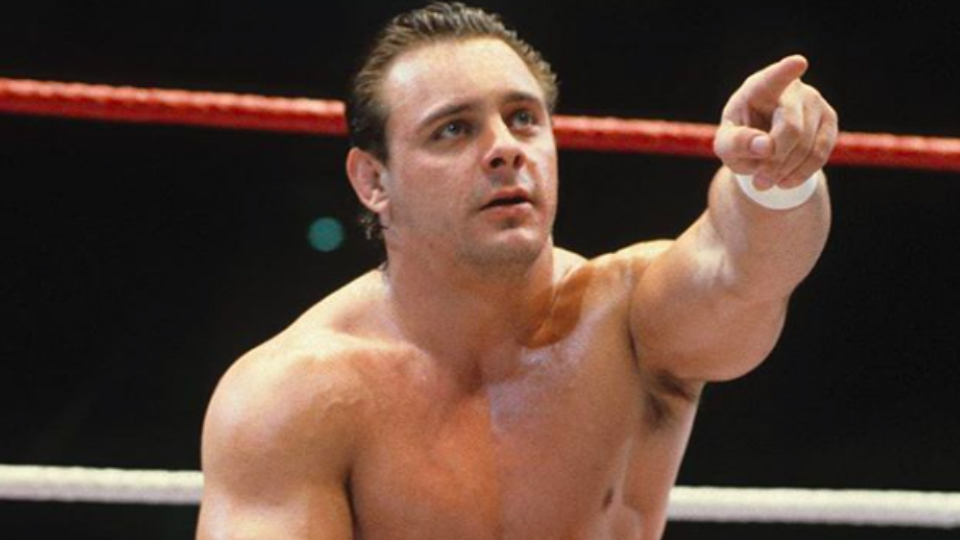
The Dynamite Kid was as good a professional wrestler as he was a bad human being.
Amongst other instances of deplorable conduct, Tom Billington ritually threatened his then-wife with her murder, stabbed Jake Roberts’ snake with needles, set fellow wrestler Gypsy Joe on fire in Japan, was arrested for beating up teenagers unprovoked, took pleasure in spitting on and racially abusing the homeless…
Dynamite’s influence is hard-coded into the DNA of pro wrestling. The lung-bursting, high intensity back-and-forth you see every week can be traced back to his revolutionary style - and you can make the argument that, four decades later, nobody did it as well.
Now, there are better and more thoughtful storytellers, yes, but just consider the Kid’s diving knee drop. He looks like he has fractured his opponent’s orbital socket. You can watch it over and over again, you can slow it down, you can freeze the precise frame, and you will only ever see what looks like a full-on collision.
Of course, that can’t be true. It was a worked strike. But how?
Every other wrestler since has sought to make you ask the same question. Those answers are a lot easier to arrive at.
16. Rob Van Dam | Van Terminator
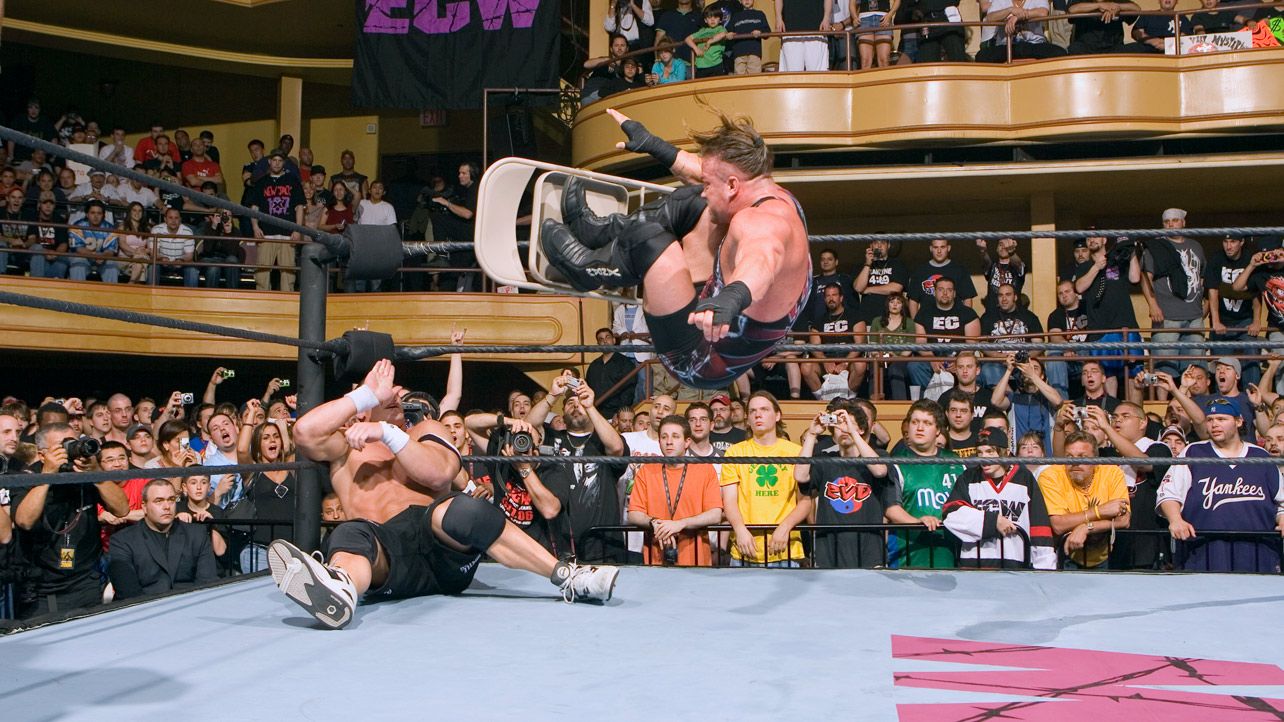
Rob Van Dam’s Van Terminator was another impossibility of a move.
He moved to the apron as Bill Alfonso placed a chair over the face of Scotty Anton, the first volunteer for a deranged experiment, who was draped across the turnbuckles on the opposite side of the ring. Van Dam then did the “lookout” gesture, asking the audience if it was even possible to fly that distance. It was; from a springboard set-up, he cleared the entire breadth of the ring to smash the chair against Scotty’s mush.
Because it looks like something made possible only in a video game, it’s apt to use a video game analogy. By 2000, high-flying, cruiser-style wrestling had firmly entrenched itself in the mainstream - but through this one, face-melting move, Rob Van Dam took the form from 32-bit to the current generation.
This current generation; it still, 24 full years later, looks positively futuristic.
The move was raved about in such reverent tones that a generation of hardcore fans threw their parents off the phone line and waited patiently for hours to download the MPEG on Limewire.
15. Young Bucks | Meltzer Driver
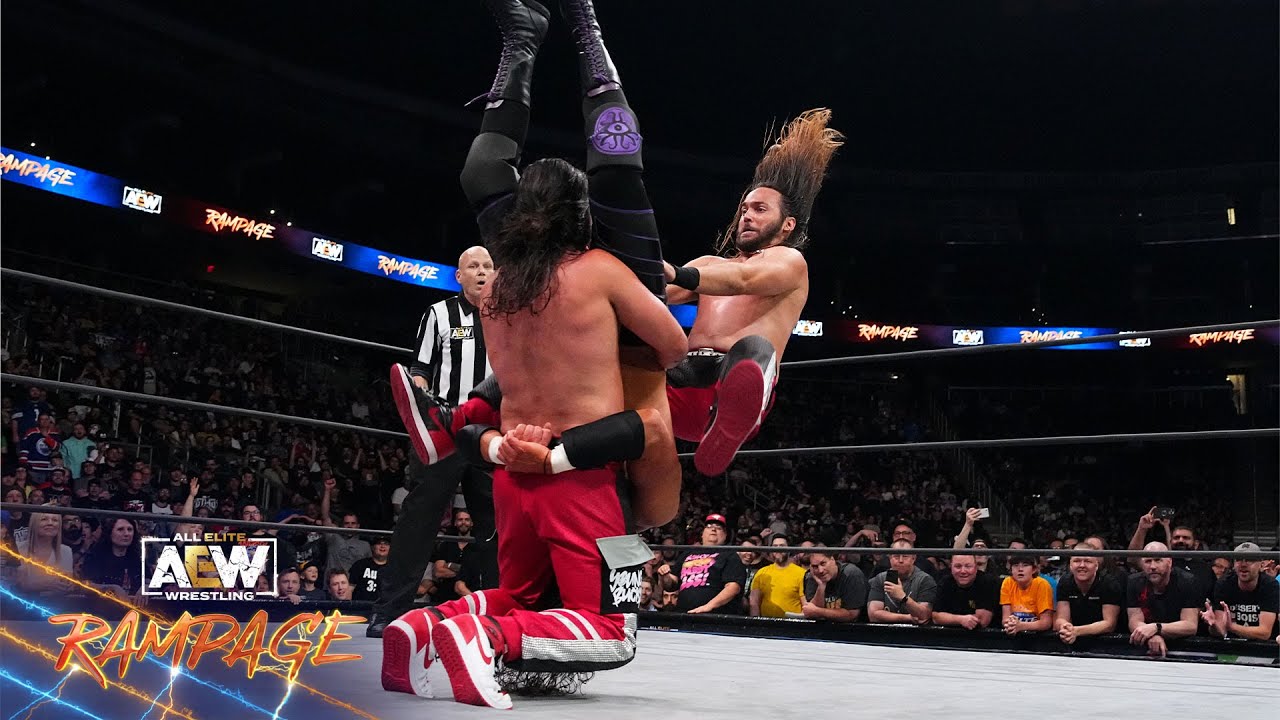
The Meltzer Driver - later renamed the TK Driver to infamous effect - is a spectacular tag team finish with next to zero margin for error.
Matt Jackson positions his opponent for a Tombstone piledriver. His brother Nick springboards from the top rope and adds the spike - after performing a front flip.
Now, the Bucks have used this sensational finisher for years and years at this point, so it’s difficult to recall just how mind-blowing it was the first time. To put it into perspective, though, Ricochet - who, whether you can abide him or not, was the most extraordinary aerielist on the planet at the time - literally could not believe what he was seeing when the Bucks first practised it.
It was a perfect finisher, in that this weapon allowed the Bucks to dual wield. The Meltzer Driver enchanted their fans and enraged their critics by design. It was an exercise in winning a match and building a brand.
The flip element of unnecessary flash, just to piss people off, was the very essence of the Bucks in this disruptor role.
Or, it was a spectacular flourish for those who outright loved the excitement and just wanted to lose their minds.
14. Kazuchika Okada | Dropkick
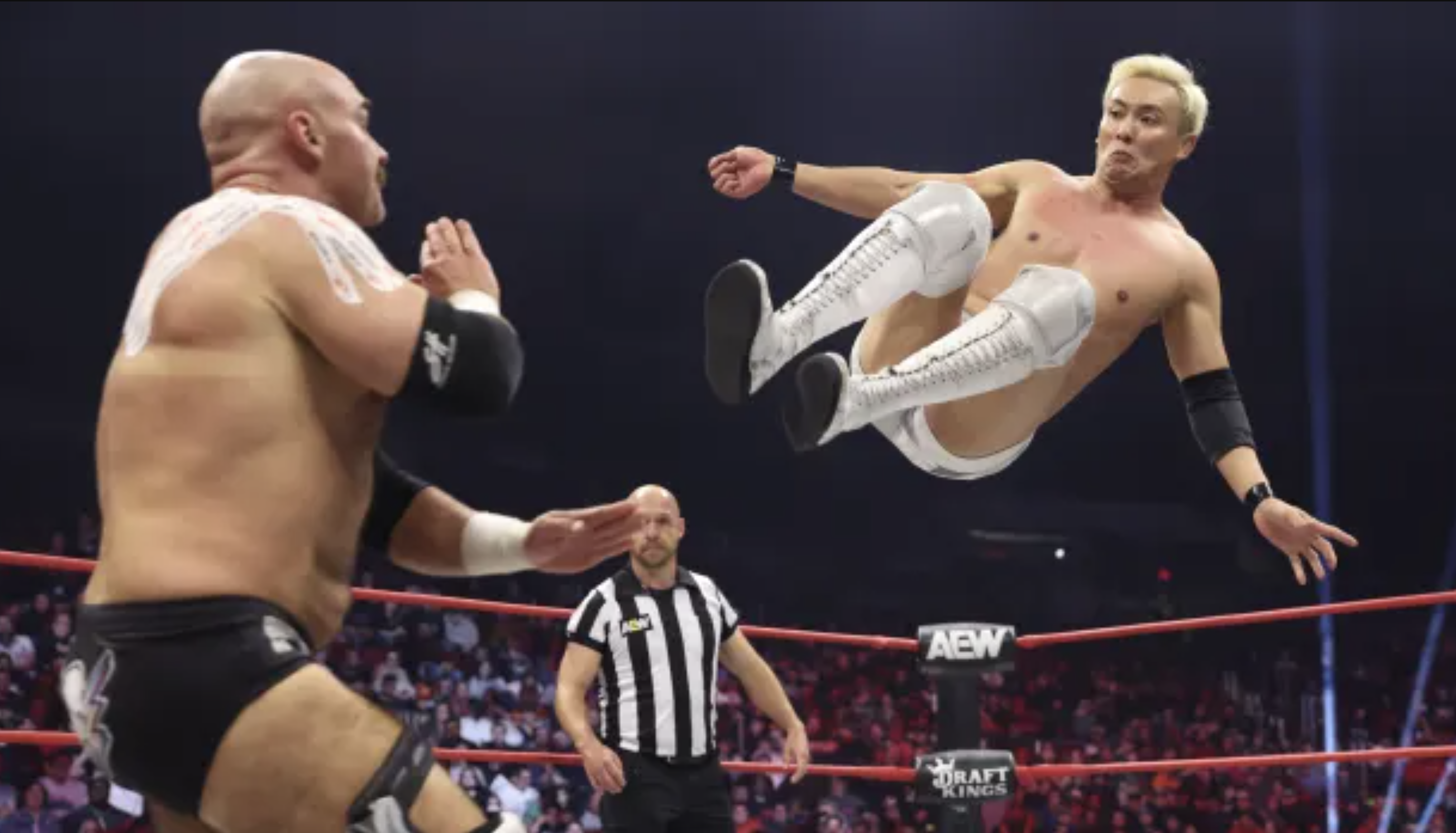
A very different signature to Hiroshi Tanahashi’s dragon screw leg whip, Kazuchika Okada’s dropkick was nonetheless executed with a very similar mentality in terms of structuring and pacing a match. The timing, the “when”, was breathtaking.
Okada supplanted Tanahashi as the Ace of New Japan. It was his turn now to insert a move that would crush the guts of the crowd. No, your babyface isn’t getting it done. It doesn’t matter how much adrenaline is coursing through their bent, nearly broken body. It doesn’t matter if the fans are urging them to burst into a rope run to generate the momentum ahead of a lung-bursting comeback: Okada was waiting to cut them off. He was too good. His mind was several steps ahead, his athleticism phenomenal.
It’s also the best actual dropkick in terms of sheer action.
It was somehow a taunt and a move, all at the same time. As that opponent sprinted at him full pelt, unwittingly doomed, Okada seemed to levitate in mid-air. Suspended, the move added to his inevitable persona. It was as if he was literally waiting for them to catch up.
13. AJ Styles | Styles Clash
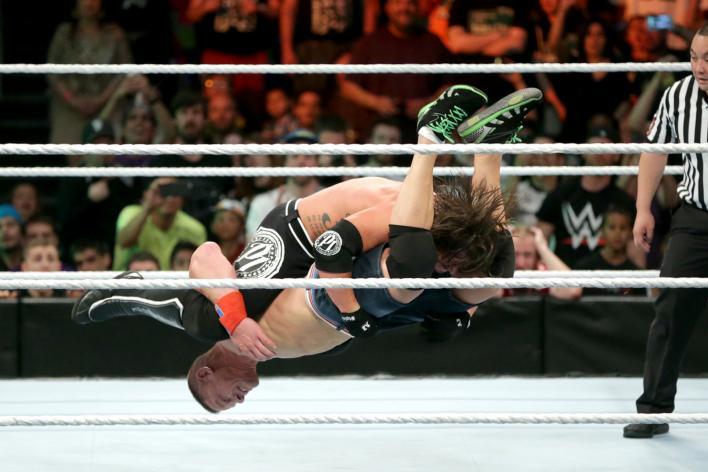
The Styles Clash absolutely rocks on a promise/delivery basis.
AJ’s arm-trap set-up elicits a sensation of exhilaration and dread. Even before the unfortunate incidents that occurred deeper into his career - when his opponents, through muscle memory, tucked their chin - the stomach plunged. The recipient’s head was dangled perilously close to the canvas.
The fans weren’t short-changed, though, because while AJ didn’t drop them on their head - deliberately - he did land them everywhere else. The face. The gut. The knees. The c*ck.
A disorienting drop, an impact felt across one entire side of the body: the Styles Clash was as inventive as it was painful-looking.
This take will scan as sacrilege - Will Ospreay himself would bristle at the suggestion - but Ospreay might have improved upon it. The fiendishly difficult, super-creative, and athletically skilled means by which he manoeuvres his opponents into the set-up is mind-blowing every time. Fans gasp in unison as if they’ve just watched a literal magic trick.
But it’s AJ’s innovation, he himself was more than handy with a unique set-up, and he could well be the single most influential wrestler of the 21st century.
12. Kenny Omega | V-Trigger
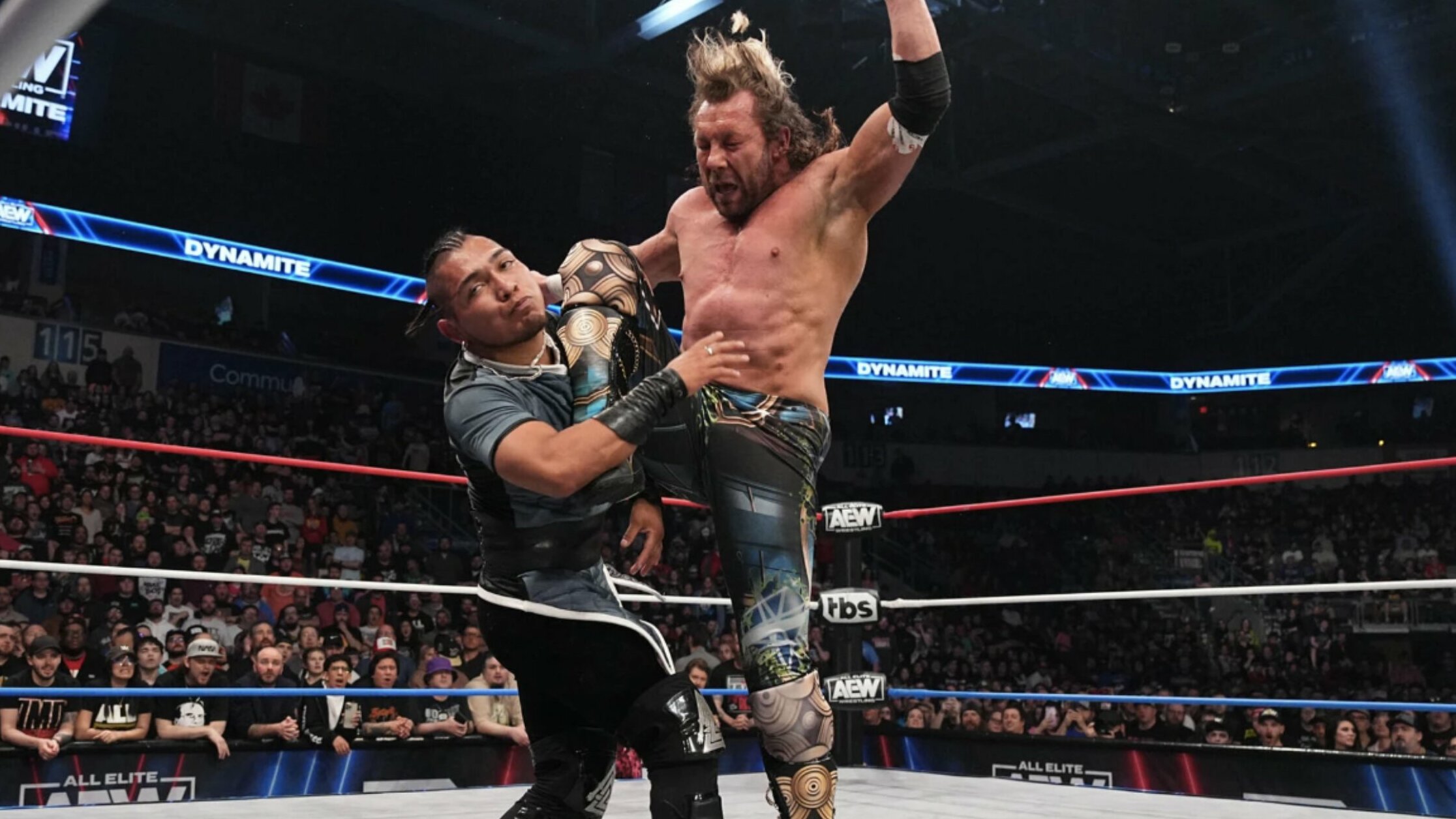
The Dynamite Kid is the obvious counterargument - but is there a single pro wrestler, ever, better than Kenny Omega at physical timing?
The One-Winged Angel boasts the lore and the aura, but it was the V-Trigger bicycle knee strike with which Omega lit up the GIFsphere en route to changing the world.
Rampaging across the mat with explosive propulsion, Omega’s V-Trigger was a concussive-looking migraine of a move. The superkick is accompanied by the ever-divisive thigh slap. The sound is unmistakable. Omega however didn’t make a slap noise but rather a sickening thud to convey the frightening impact. It was always such a sweet connection, too. It looked like he couldn’t possibly have “pulled” it - prime Kenny was one of the fastest wrestlers ever - and it looked like he’d legitimately broken some poor prick’s nose. The illusion has rarely felt so real - so much so that a mere signature move informed countless believable near-falls.
The V-Trigger was as full-force as wrestling gets - or as wrestling appears.
11. Kazuchika Okada | Rainmaker
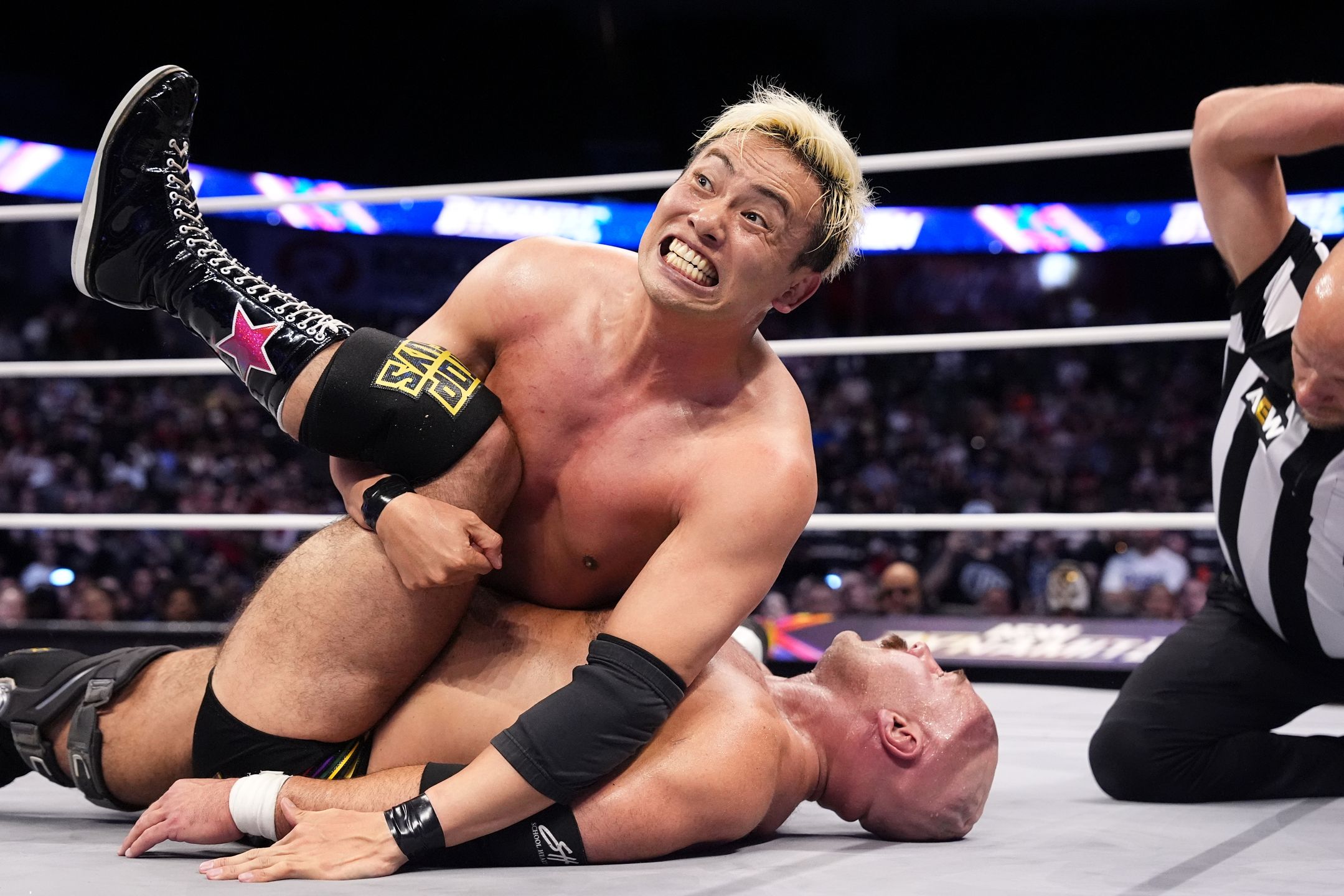
Much like Kenny Omega’s One-Winged Angel, Okada, his greatest big match rival, was intelligent. He, too, knew how to add a layer to his finish.
The finish shouldn’t come from out of nowhere. The crowd should gasp in anticipation of it. Okada’s unique “ripcord” set-up allowed fans to register the imminent conclusion - but since peak Okada was such a smug, invincible heel, they pined for the escape. The elaborate set-up allowed for that last millisecond duck and the resulting near-fall from the last-ditch, adrenaline-fueled counter.
The ripcord wasn’t just a device with which to engineer more action. It made sense for Okada to take the risk, allowing him to lunge into the lariat and charge up the most emphatic connection. The tremendous bespoke camera shot was incredible in setting Okada apart as the most special attraction in the country.
A great move in and of itself, the Rainmaker lariat also informed a stylistic change; the ripcord set-up was liberally borrowed by many of Okada’s fellow wrestlers - though it’s hard to call them contemporaries, since, in the mid-to-late 2010s, he was in a league of his own.
10. El Generico | Brainbustaaah!

God, can you imagine being in the building the first time El Generico did the Brainbustaaah!?
Generico was absolutely sensational, so you’re already giddy watching a spectacular, futuristic match unfold. It feels like wrestling is on the cutting edge if you’ve looked hard enough, and you have. You watch Generico catch up with his opponent on the top rope. Your brain is wired to expect a superplex, maybe a hurricanrana. The bouncy indie canvas is about to vibrate for seconds on end, adding to the crazed din inside of some sh*thole of an armory, but then, Generico drops to his feet. You can barely process it, but his opponent’s trapped head has just smashed the top turnbuckle as the rest of his body sprawls against the ropes at some ungodly angle.
It looks for the briefest of moments like you’ve just witnessed an internal decapitation. You’ve just taken in the illicit thrill of a pioneer inventing something awful, something awesome, to get ahead in a new and borderless world in which anything goes because, with no pathway to WWE, and no other big time, your best bet was to go as apesh*t as possible in order to get over in front of the self-anointed tastemakers who thought they’d seen it all.
9. Petey Williams | Canadian Destroyer
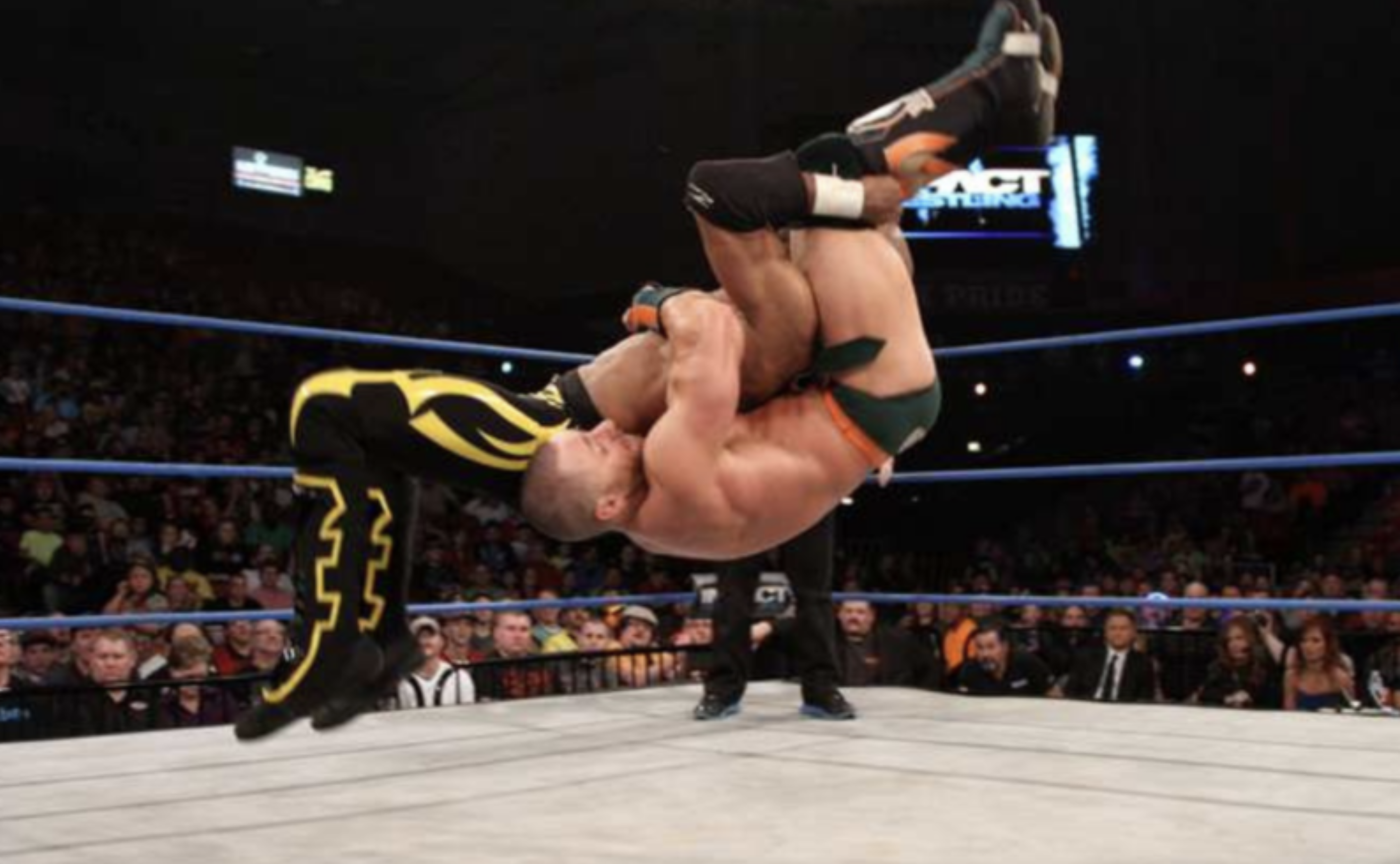
The Canadian Destroyer was pioneered by Petey Williams two decades ago. It remains the most divisive and exciting move in the industry in 2025.
Its mere existence, to some people, is shorthand for bad or fake-looking wrestling. The move, a front-flip piledriver, is undeniably contrived - the recipient clearly performs a back flip to land on their own head.
Some people hate it for that reason - even if a simple body slam is pure cooperation. Others love it because it looks really, really, really spectacular.
It is also used as shorthand by wrestlers of a certain age to prove they can still go and still get over: Dustin Rhodes has played with the juxtaposition of age versus move to generate many a shocked, jubilant pop.
A vernacular and a culture war in one move, the Canadian Destroyer is meant to be some disgrace that betrays the ideas of storytelling and character. In reality, it is a useful tool for character development.
While Petey’s version has been improved upon in the years since - by Penta, most notably - Williams deserves the credit.
He is responsible for the most awestruck in-ring pops across the entire history of 21st century wrestling.
8. Road Warriors | Doomsday Device
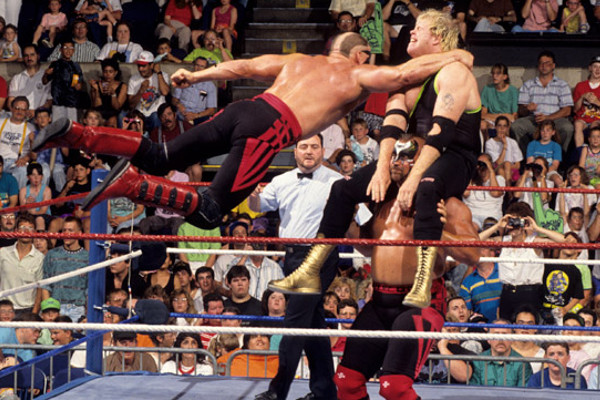
You won’t see an act like the Road Warriors ever again. That era of the business simply can’t exist; a general bland standard of “workrate” exists, and more to the point, the old culture can never be repeated. The juiced-up meathead madman fuelled by all sorts of everything can no longer “be” in 2024. For better, to be boring about it, the industry has changed irrevocably.
Hawk and Animal were unskilled, barely trained, reckless, and entitled. These were all synonyms of “f*cking awesome”.
Über-muscled killers who didn’t seem to care much about the safety of their opponents, it was cool enough when they simply hoisted puny jobbers above their heads and let them fall.
With their Doomsday Device finish, they added spectacle to what was already a perfect act.
Animal threw some hapless bastard on his shoulders as Hawk ascended to the top turnbuckle. Hawk then threw himself at the dude, who almost landed on their head because, by cruel design, there was nowhere else for him to go.
Even cooler than the name, the Doomsday Device was ripped off almost as often as the team itself.
7. The Undertaker | Tombstone Piledriver
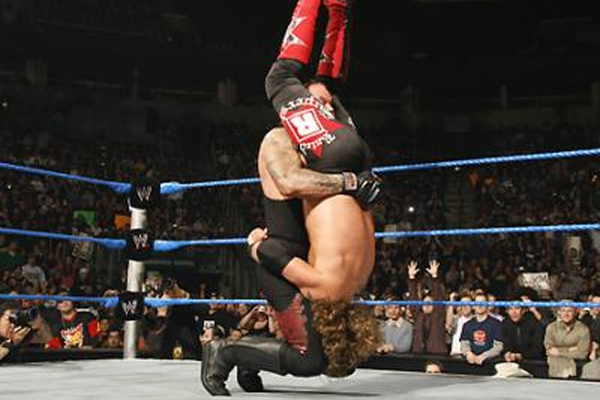
The Undertaker breathed an almighty sigh of relief in the mid-90s. Matches vs. Kevin Nash, Mick Foley and Bret Hart let him show off a side of himself that had been under lock and key since his 'Deadman' character debuted earlier in the decade. Spreading his wings, 'Taker started showing off flashy moves aplenty; including a cracking leaping clothesline, the famed (and slightly quicker) 'Old School' rope walk, dynamic chokeslams and more.
Nothing can come close to his Tombstone Piledriver though.
Others have used the move - Kane, mostly - but even 'Taker's kayfabe brother couldn't deliver the Tombstone with the same kind of panache as his mate. Everyone trusted The Undertaker to put them down carefully whilst protecting their neck and making it look like he'd just dropped them right on the top of their heads. Hardly any Tombstones, even on some of WWE's largest workers, looked half-baked or hokey. That speaks to the pride 'Taker had in his performance from day one.
Purists always appreciated the way he'd position opponents right above his knee caps before dropping. The legend was very careful about that. He wouldn't drop to his knees until he knew they were in exactly the right position. That's probably why 'Taker was so furious with Hulk Hogan when the big red and yellow menace alleged he'd been legit injured by the move in 1991.
The WWF's own footage proved that he was talking nonsense. The beauty of any successful piledriver comes from looking dangerous without actually endangering someone's life. Or, at least, mitigating the potential for disaster. Few were better at doing that than The Undertaker.
6. Randy Savage | Flying Elbow
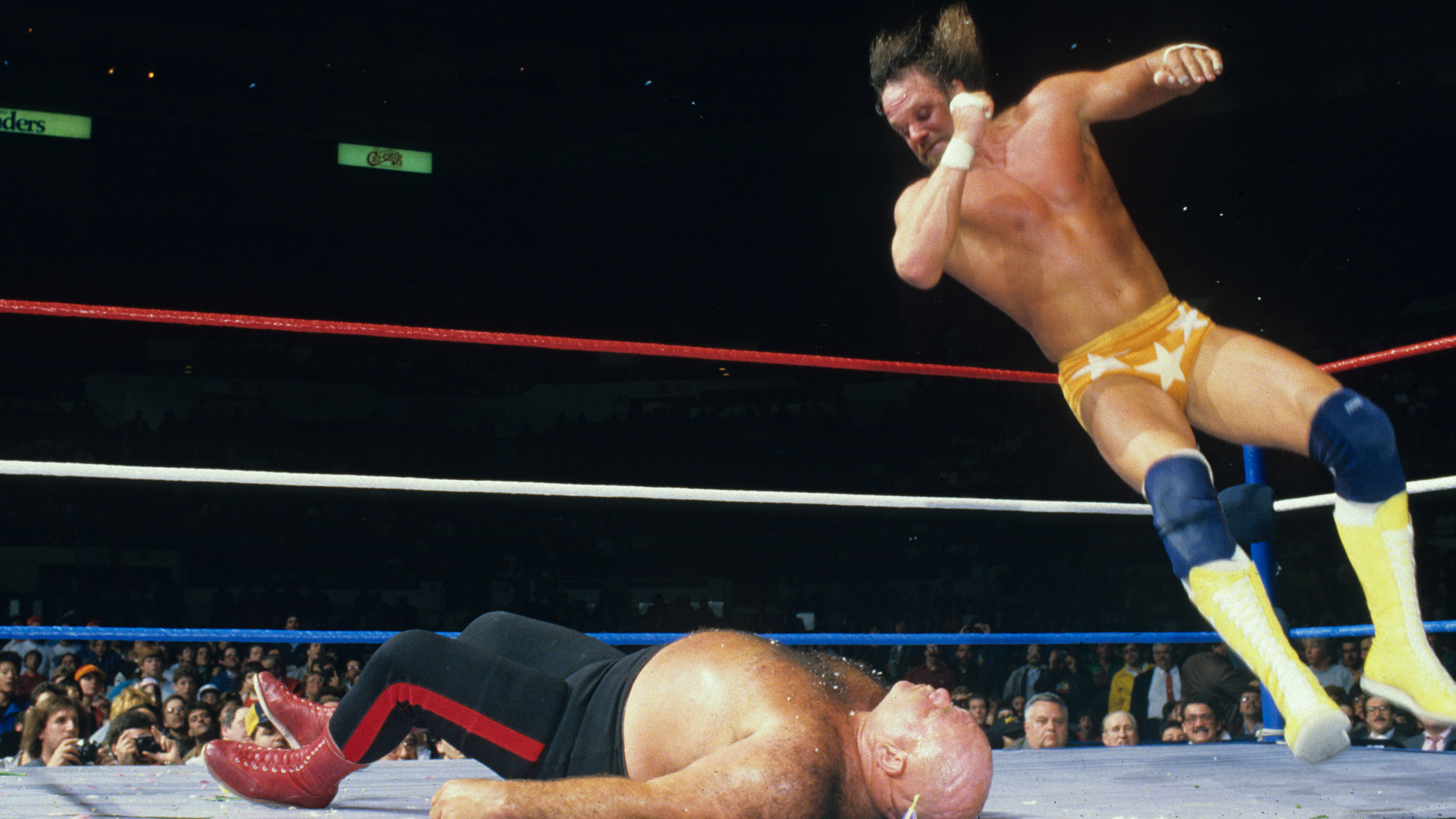
The Flying Elbow’s effectiveness was rooted in Randy Savage’s unrivaled attention to detail and a lust for flair and panache. Every aspect of it was meticulously crafted, from his dramatic ascension to the top rope to the way he balanced himself, arms outstretched, as if soaking in the adoration of the crowd while giving himself one last power-up to maximise the impact.
Savage understood that the build-up was just as important as the execution. Fans knew what was coming, yet the anticipation made it all the more satisfying. And when he launched himself, it was as beautiful as any of his incredible attires. His leap was high, his form flawless, and the moment of impact left no doubt as to the outcome. Unlike some top rope moves, there was no wasted motion despite the ceremony of it all. Savage’s flying elbow was beautiful but deadly.
Often imitated but rarely duplicated (Shawn Michaels’ was almost on par), it was yet another element of Savage’s game that ensured he’d remain on an island long beyond his retirement and subsequent passing.
5. Randy Orton | RKO
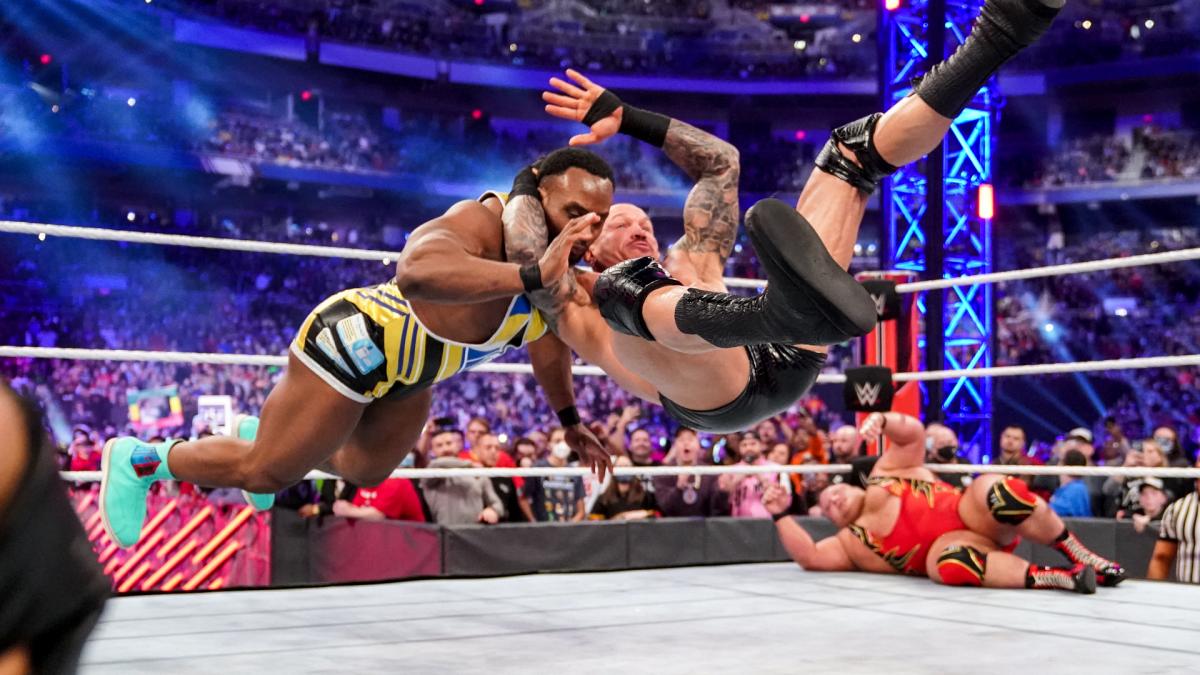
Randy Orton took Diamond Dallas Page's popular Diamond Cutter finisher (without receiving a fired up phone call like Triple H back in 1995, no less) and turned it into something even better. The Diamond Cutter became the RKO, and it's evolved a bit as time has marched on. At first, Randy would simply fall into the move like Page did. Then, he started experimenting with a leaping motion to give it more bite.
Eventually, the leaping snap movement fans know and love today became the norm. Like Steve Austin's Stunner, the RKO gives an immediate amount of gratification. You don't have to wait long at all to see it play out in full. In fact, the move is so quick that Randy began pounding the mat with his fists to add some anticipation rather than snapping into the finish 100% of the time.
Something special happened during the rise of social media too. Orton's RKO started to become an internet sensation. It was meme'd to the nth degree by all and sundry. Even your auntie probably shared a clip of Randy hitting a Photoshopped RKO on something strange in her office over a cup of tea. The phrase, "RKO out of nowhere" became stuff of pop culture legend almost overnight.
Orton's Draping DDT benefits from his slithering 'Viper' stylings, but the same could be said for the RKO. It relies on two things: Randy's swift, violent movements, and the person taking the bump matching that speed then selling after they've been pinned with it. That's how quick it is. You don't even know you've been hit until it's too late.
4. Goldberg | Spear
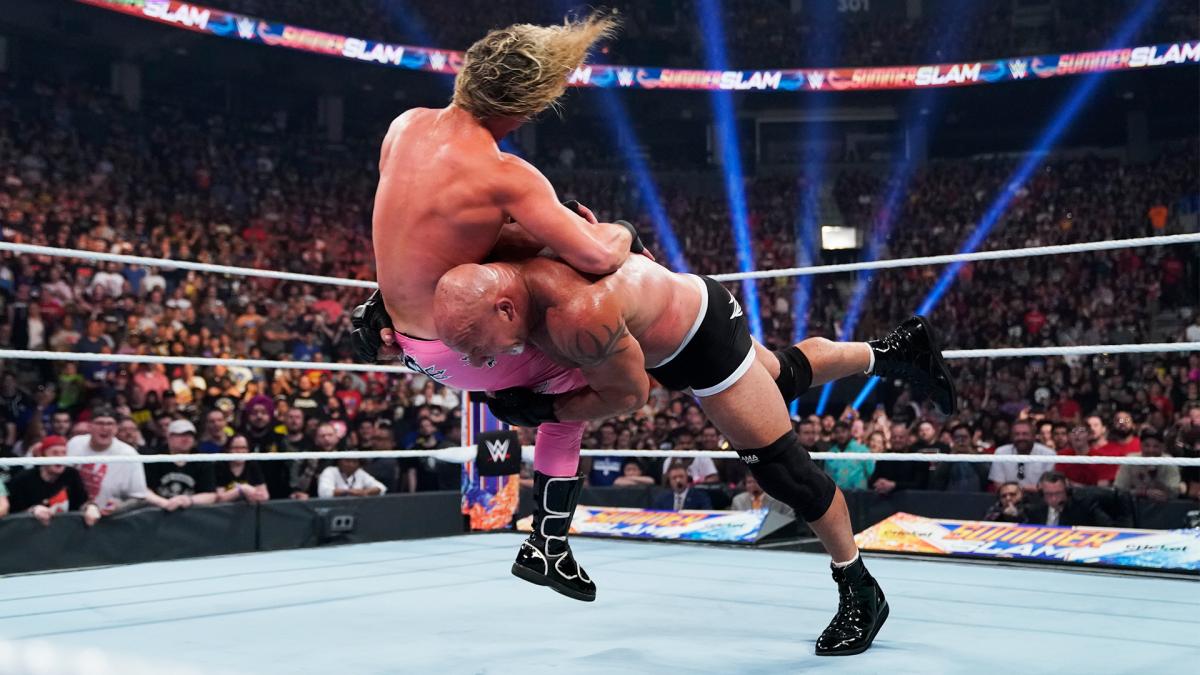
Goldberg’s Spear was incredible.
You can see why countless other wrestlers lifted it - Goldberg was so over in 1998 that he challenged Steve Austin for Wrestler of the Year when WCW could not be less well-equipped to fight back against the WWF - but a lot of them, frankly, embarrassed themselves.
Goldberg was a dumb meathead with raw, animal power. He did not perform a running hug. He was, as Bret Hart is rather fond of reminding you, reckless. Goldberg was unable to settle his nerves without blasting his head against a locker.
Uncoordinated, jittery, wholly incapable of harnessing his immense power into anything approaching a worked contest, most of the time, Goldberg would simply sprint full-speed into some poor hapless prick and attack them like he was trying to fold them in half backwards at the hip.
A dumbass ex-football player treating a barely-worked wrestling move like he was in a high-stakes, game-winning situation: it was stupid, and yet utterly spectacular.
If ever a move defined the man, Goldberg’s spear was it.
3. Will Ospreay | Hidden Blade
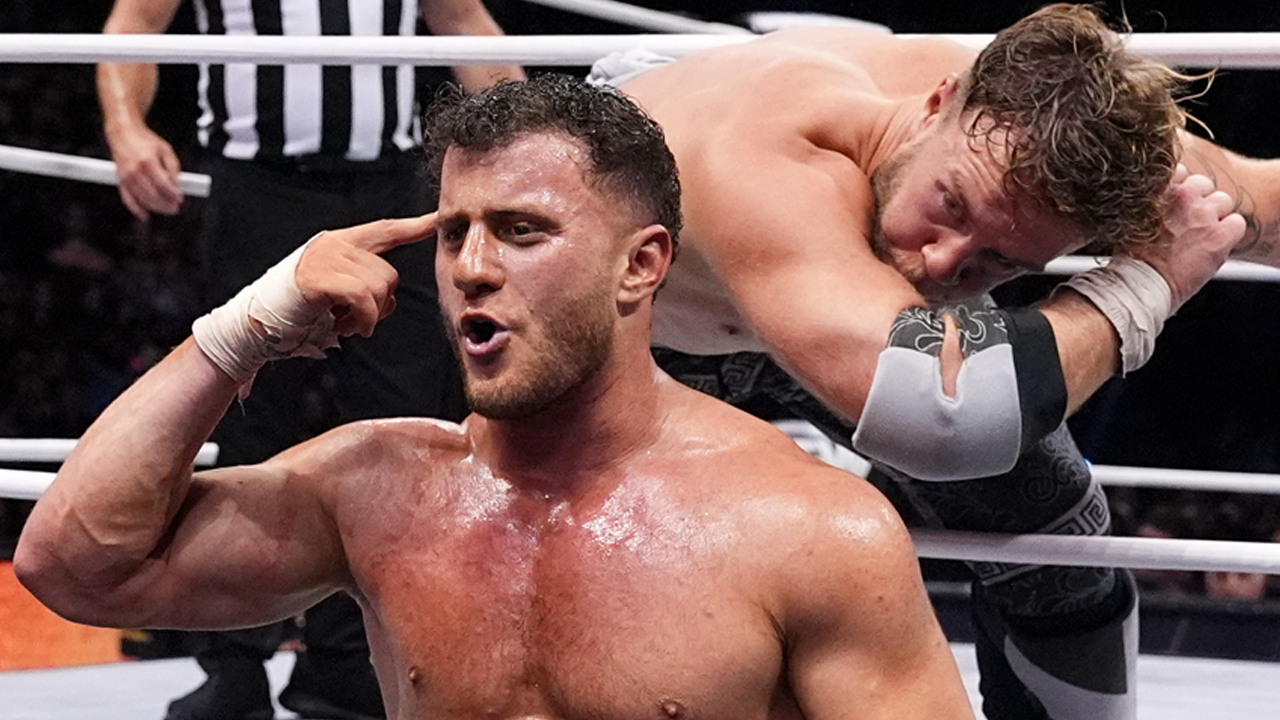
A lot of wrestlers, who will go unnamed, watched Kenny Omega break out in 2016 and fancied some of his V-Trigger. More than one wrestler just thrifted it outright, which is fine. This is wrestling. That is what wrestlers do.
Will Ospreay was more intelligent, more creative. He took the principle behind the V-Trigger - a concussive strike that could only look so deadly in the hands of a true working genius - and used it to create a completely different move: the Hidden Blade.
A flying elbow strike aimed directly into the back of the head - before Ospreay played with a variation straight in the face - the physical timing was out of this world. It looked like it was impossible to perform safely. It looked, and you could slow it down frame-by-frame and still wonder exactly how he did it, like he’d actually hit the thing. And have you ever smashed the back of your head against something by accident?
The searing pain is unbearable.
The Hidden Blade is magic, a throwback to a time when people half-believed.
A Twitter post, which some non-fans actually took seriously - ‘Wrestler goes off script and shows brutality’ - showed Ospreay striking the much-missed Mad Kurt with the move. You can see why people thought it was real.
Which other wrestling move looks half as good as it?
2. Kenny Omega | One-Winged Angel
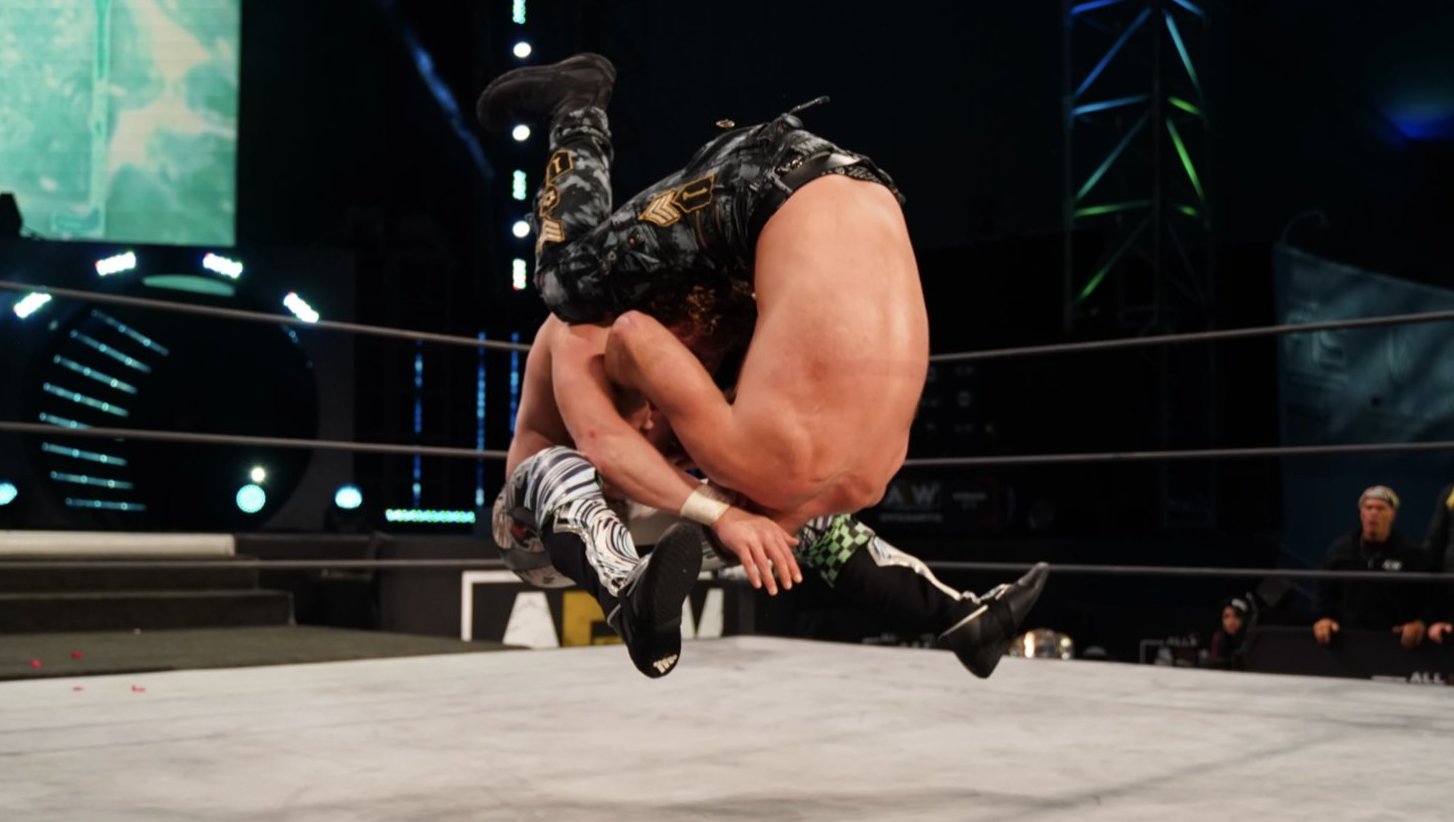
Any move can get over if it’s built well enough - Hulk Hogan’s leg drop is a great example of a simple manoeuvre that meant the world - but the genius of the One-Winged Angel is that the move is as incredible as it is well-protected.
And the brilliance of it runs deeper still.
Just one wrestler - Kota Ibushi, almost a decade and a half ago - has ever kicked out of it. A vile, nausea-inducing head drop of a move, the impact element is superb - but the moments before the drop elevate the OWA to an unprecedented level.
Omega, a fiercely intelligent wrestler, knows that the convoluted set-up enhances the move with a dramatic risk/reward element. The risk is evidently worth it, gauging by the effectiveness of the finish, but that risk - Omega by clawing at his rival's head leaves himself vulnerable to a poison ‘rana counter, a crucifix bomb, and memorably, PAC’s Brutaliser - drives forward a spellbinding back-and-forth sequence deep into a dramatic closing stretch.
The noise Omega will generate when he one day allows somebody to kick out of it will be an all-time pop in the entire history of the form.
1. Steve Austin | Stunner
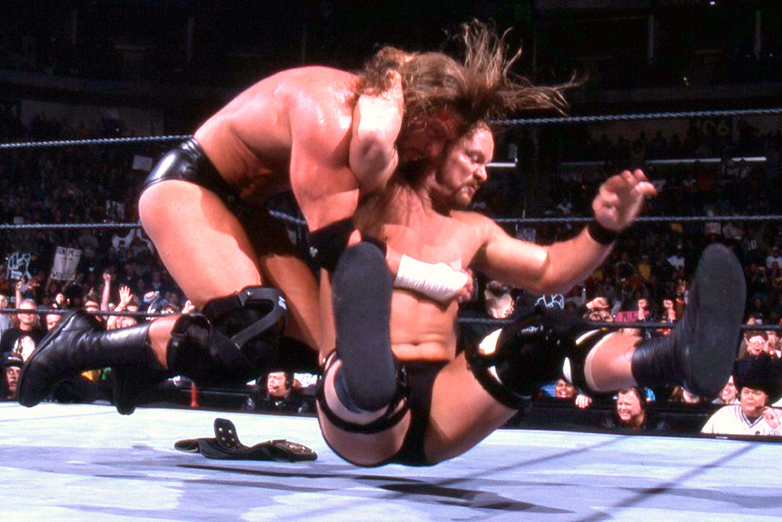
Possibly the most iconic finish ever, if you grew up in the ‘90s, you almost certainly spent any break time you were allowed at school digging your mates in the ribs so that they’d be forced to lean forward. Then, with their head unprotected, you’d smash their chin against your shoulder.
What ruled about the Stunner is that it captured Austin at his best as both a pro wrestler and a sports entertainer.
Bret Hart sold it to complete perfection, acting like he’d just chipped every tooth on his mouth as the nerve endings were set on fire.
As the Attitude Era took hold, Austin’s incredible take on the cutter got a bit daft - so much so that it’s apparently mandatory to bump for it now as if propelled by rocket fuel. The Rock bumped for it by flying across the ring and getting his feet tangled in the ropes. The logic behind the move was lost, but it hardly mattered: it was deliriously entertaining.
The registering was impeccable, too. Austin drew almost as big a pop simply by aiming his boot in his opponent’s gut.